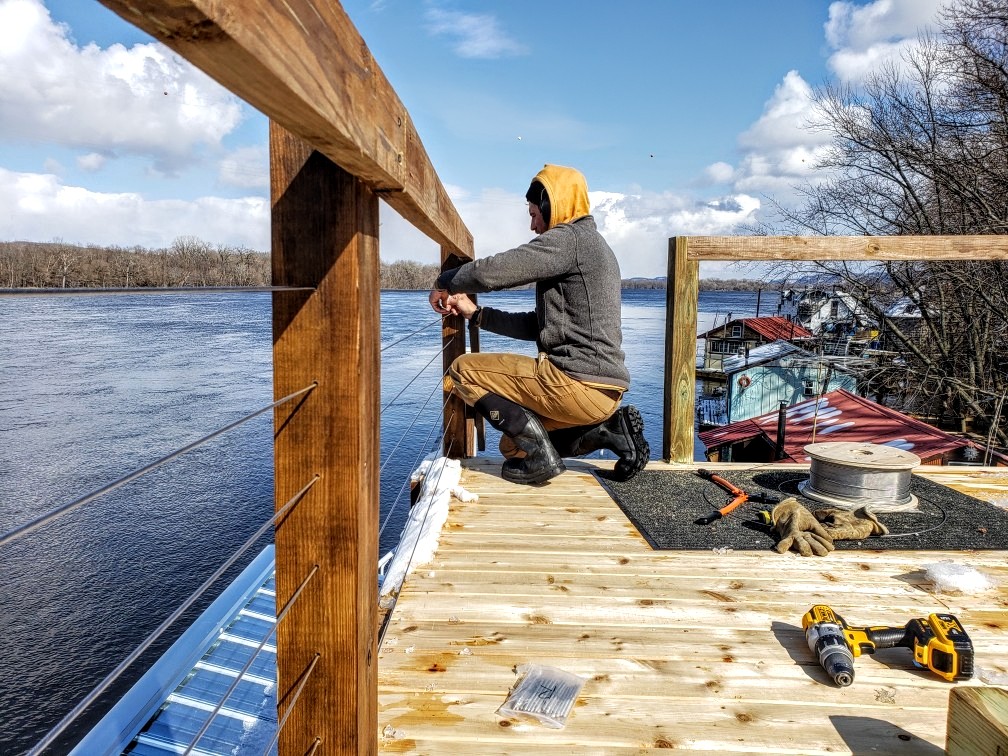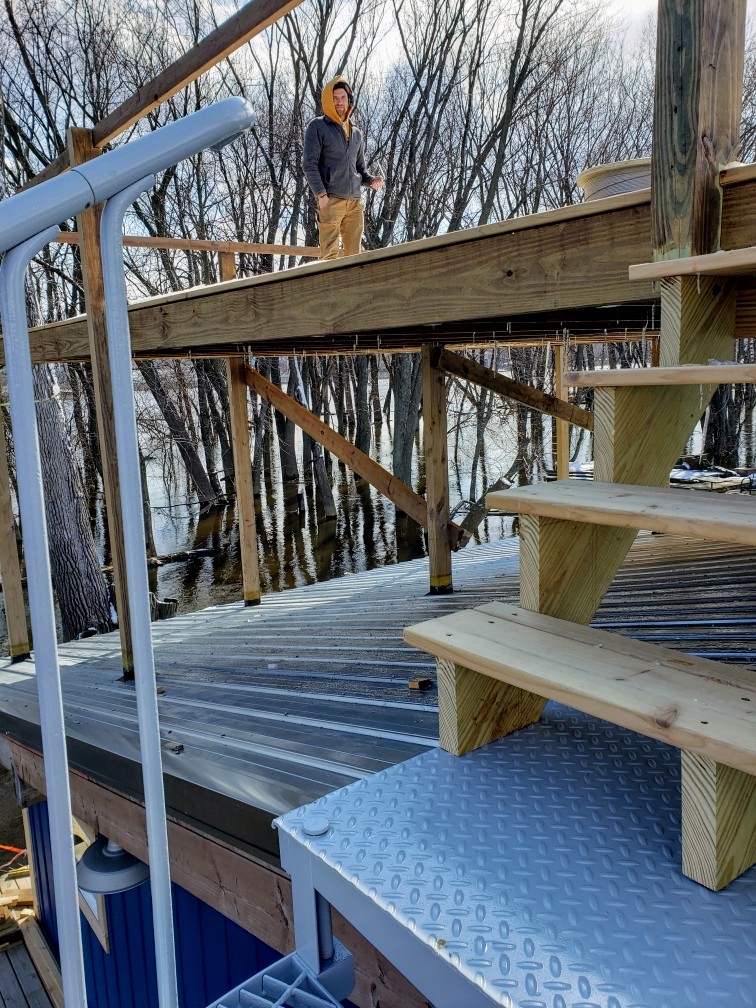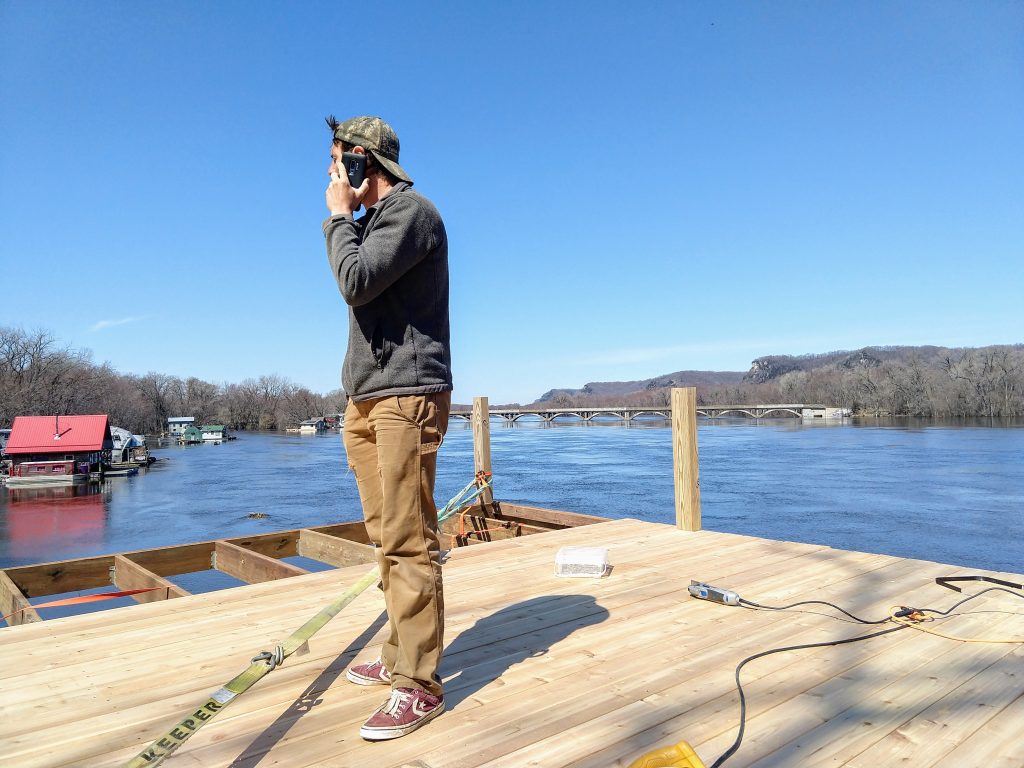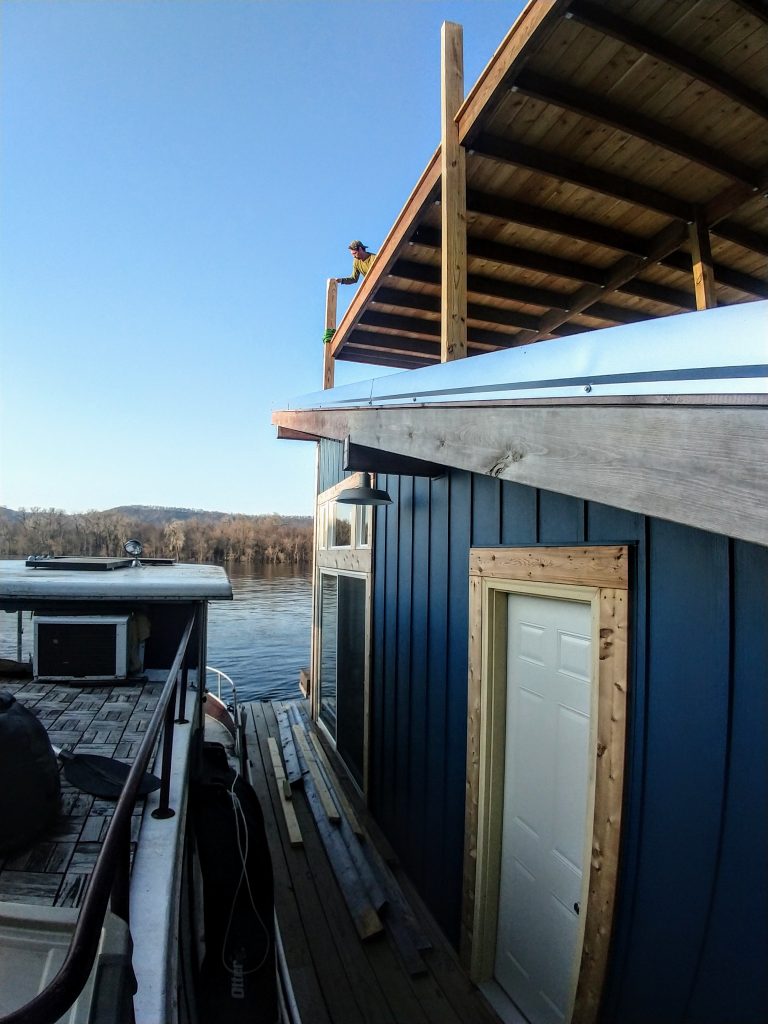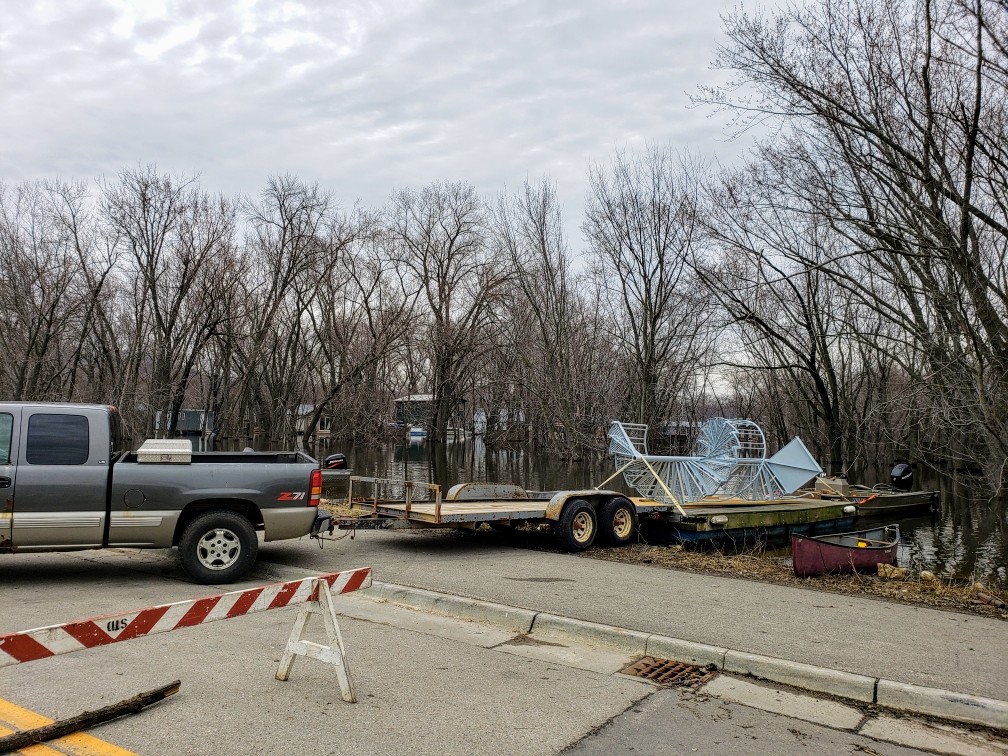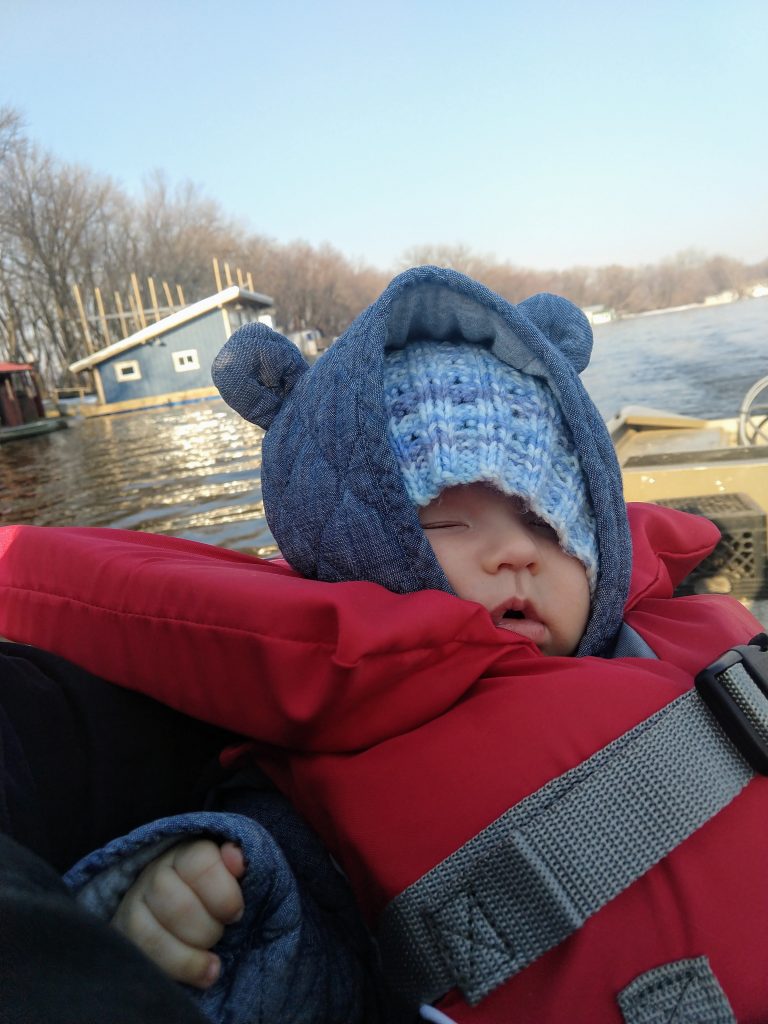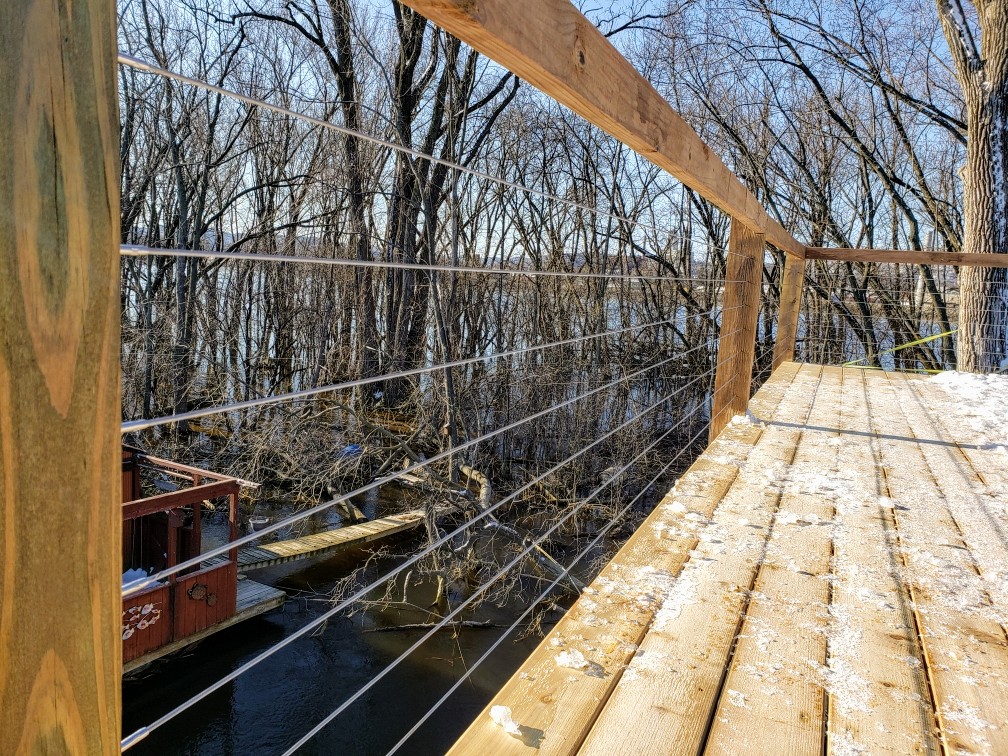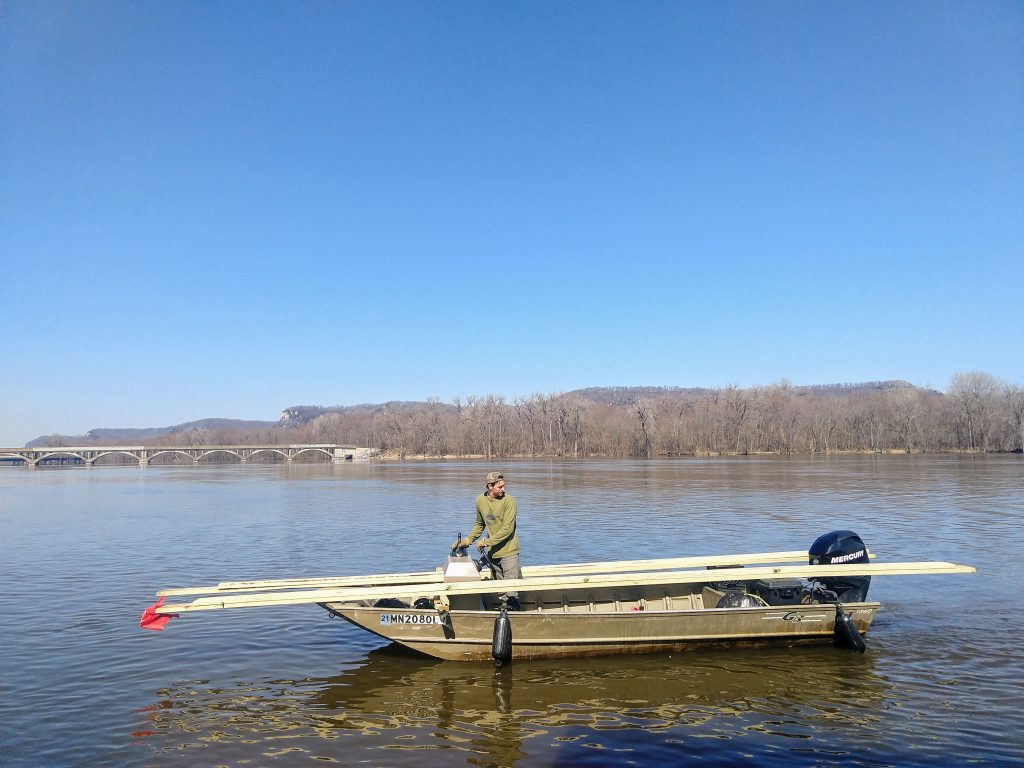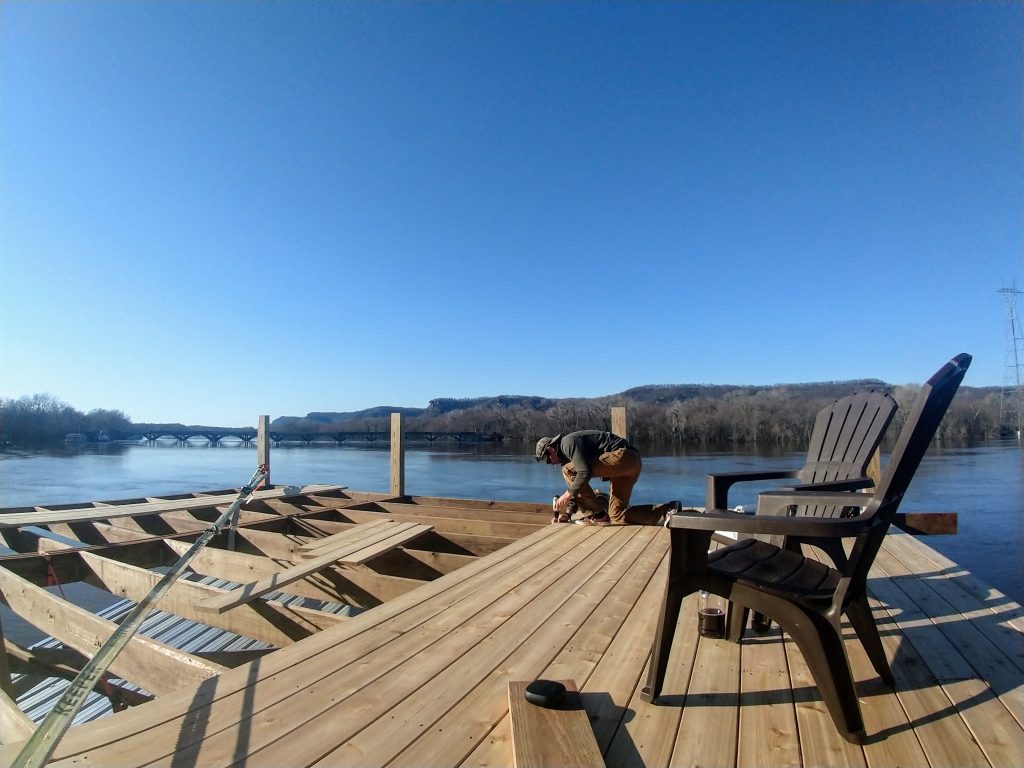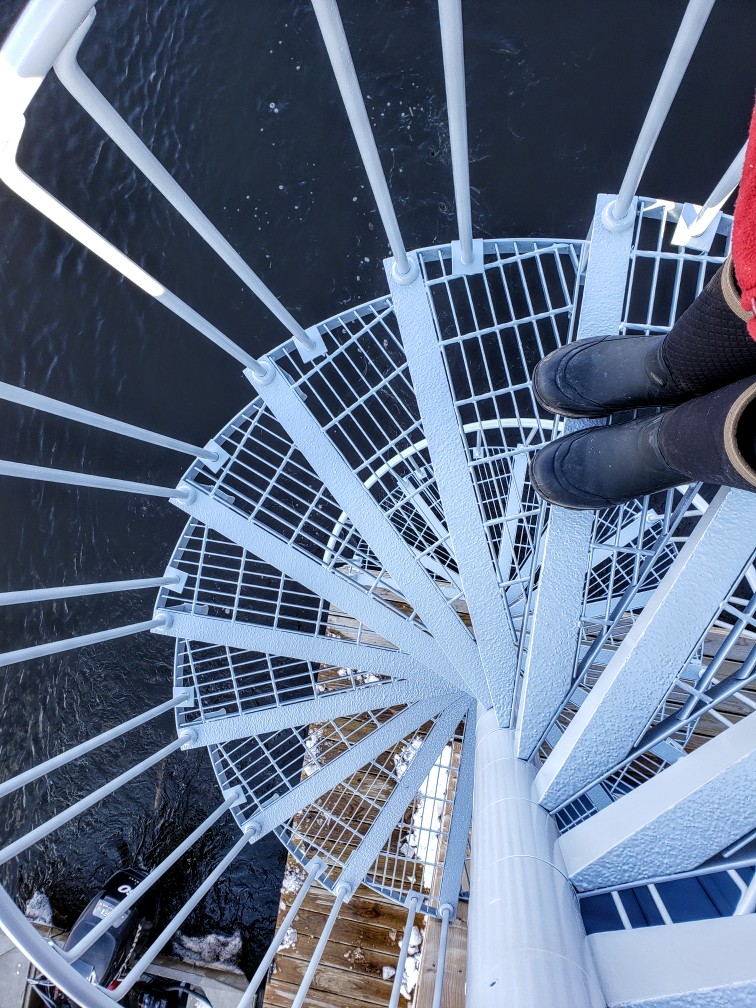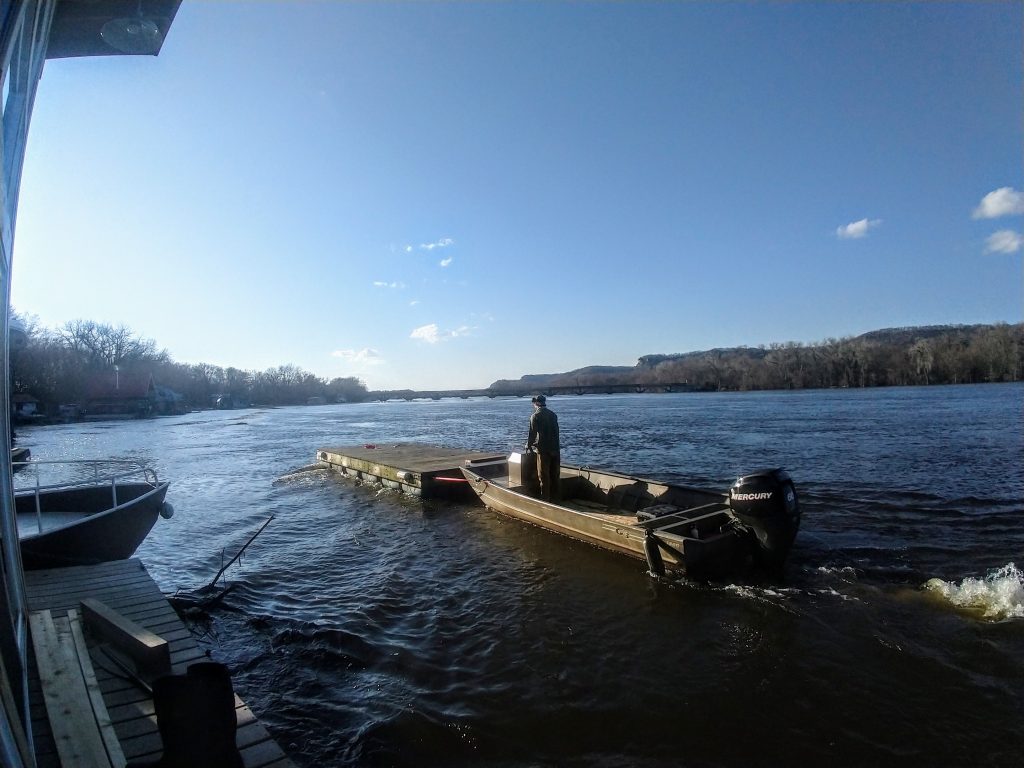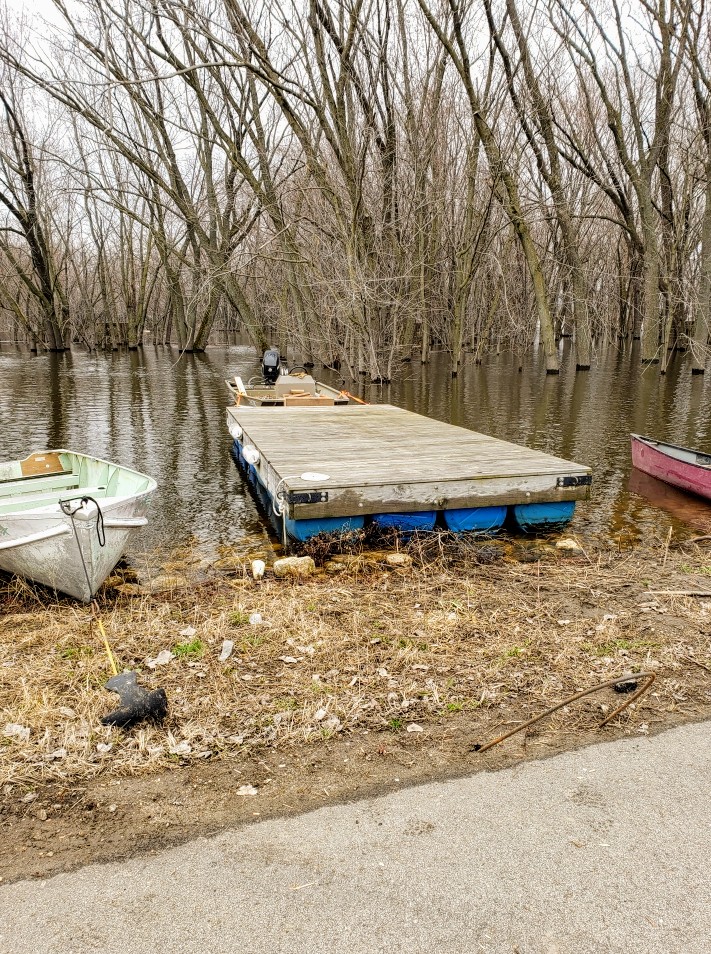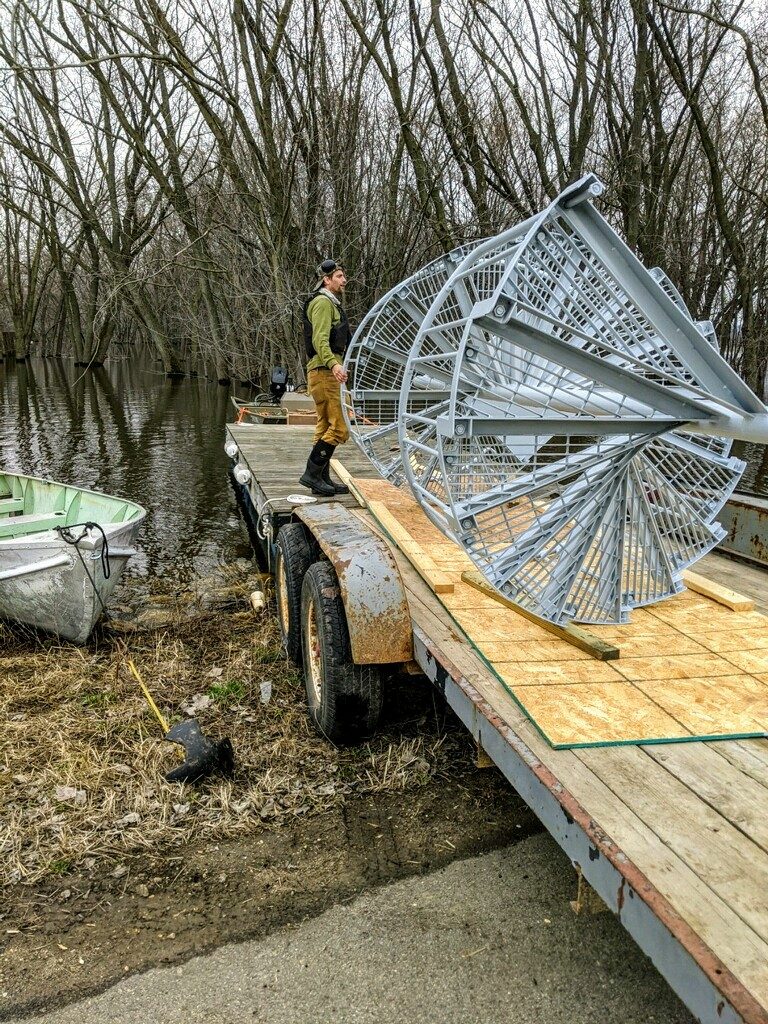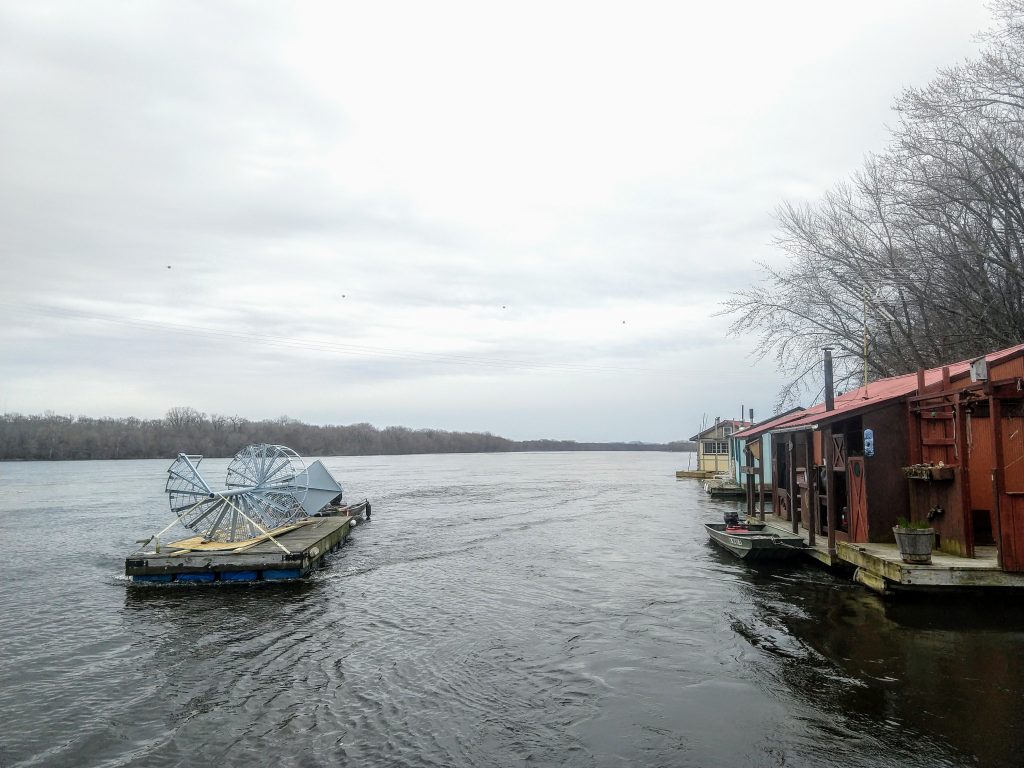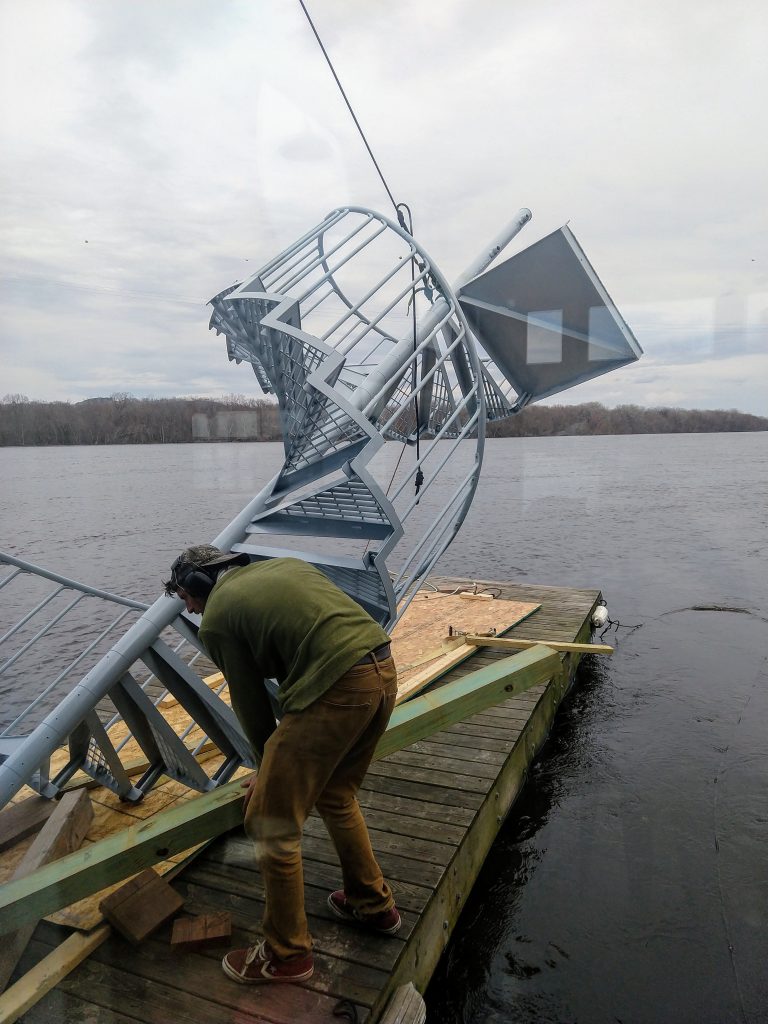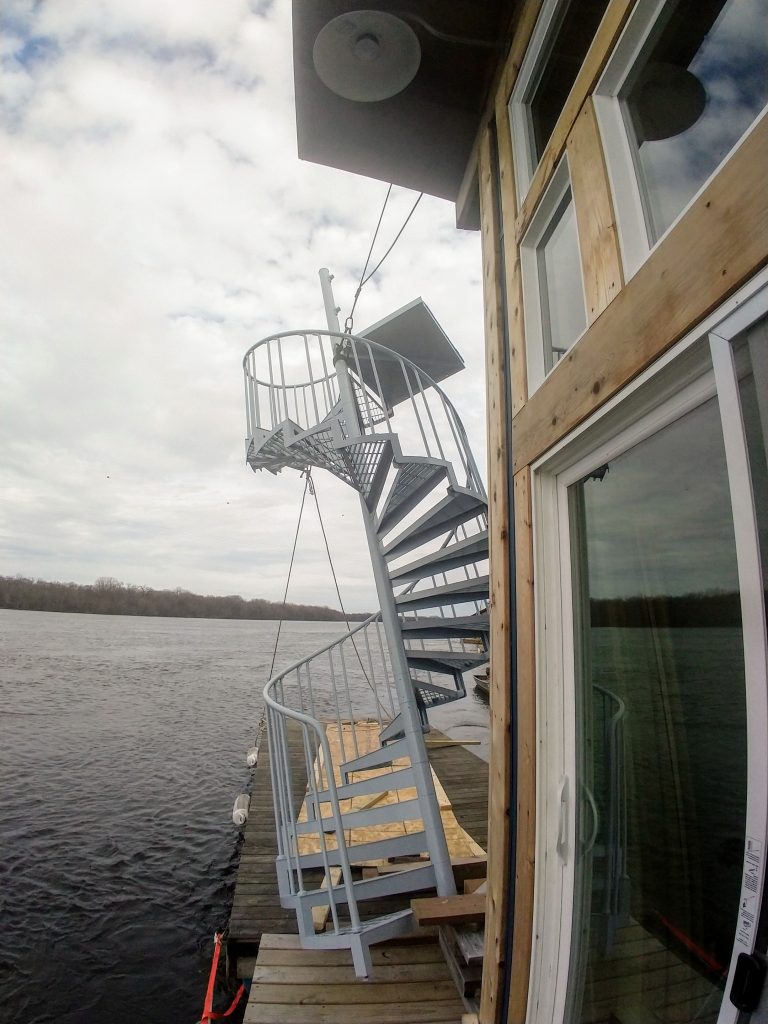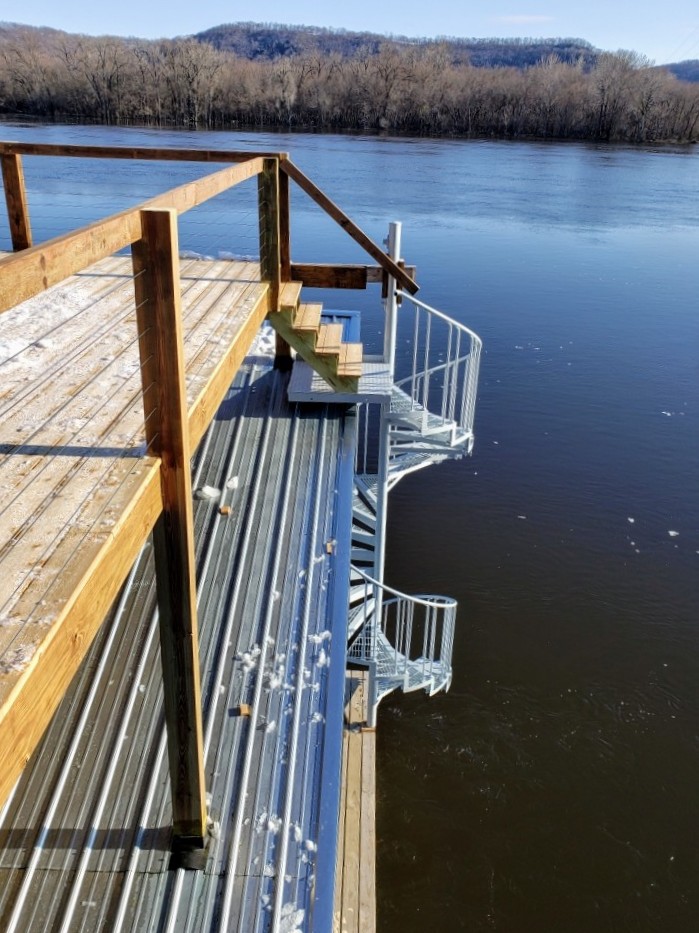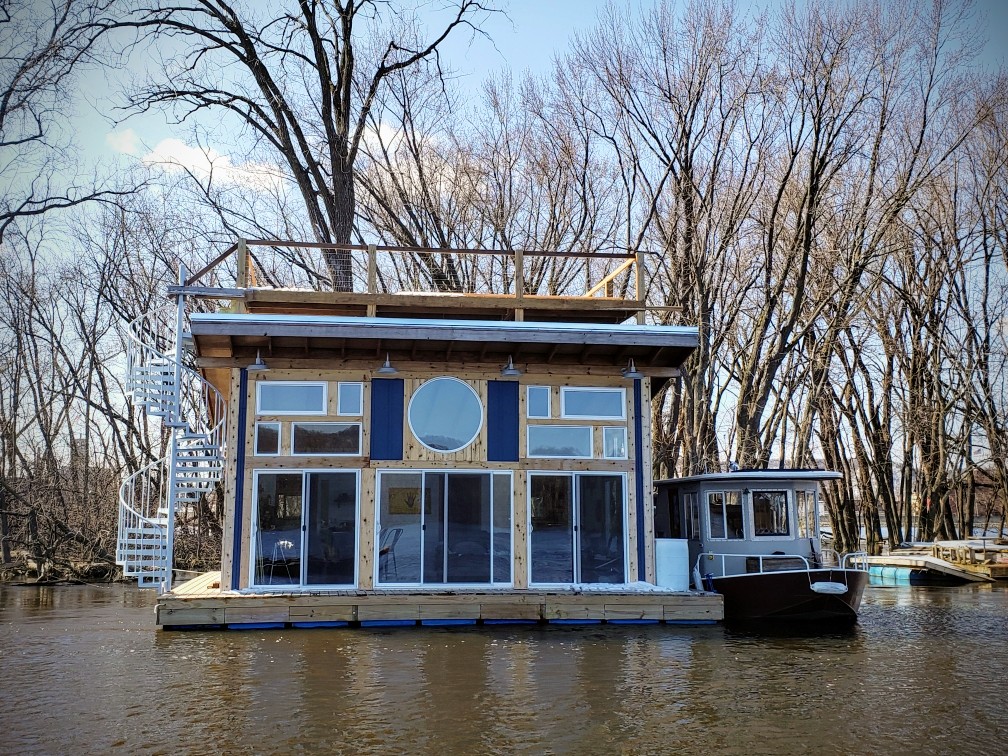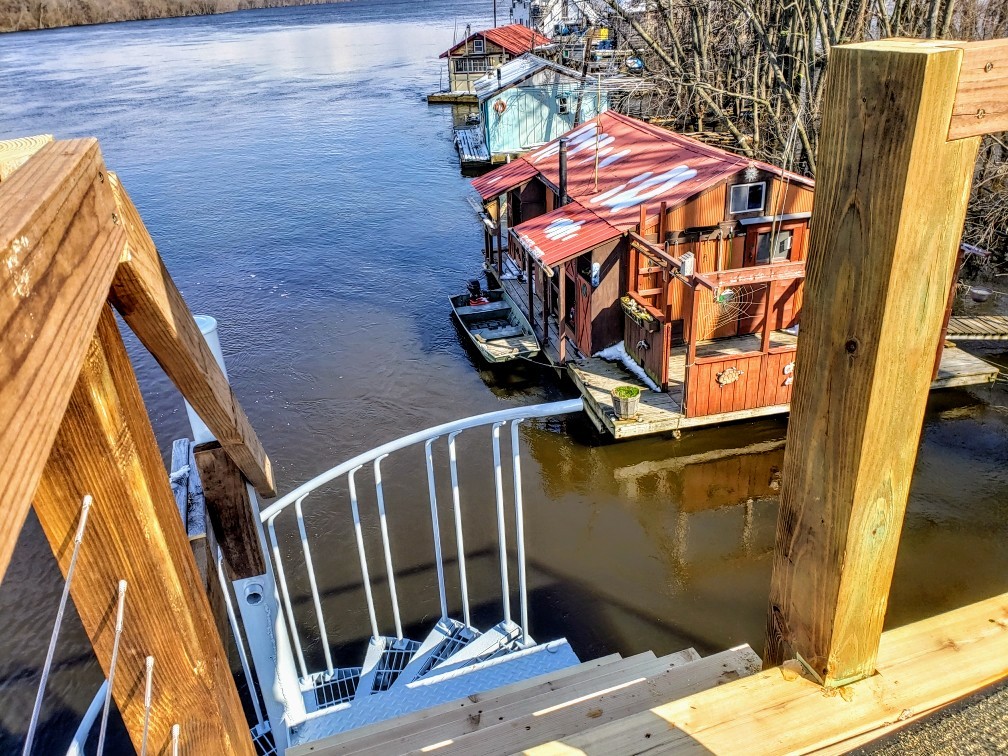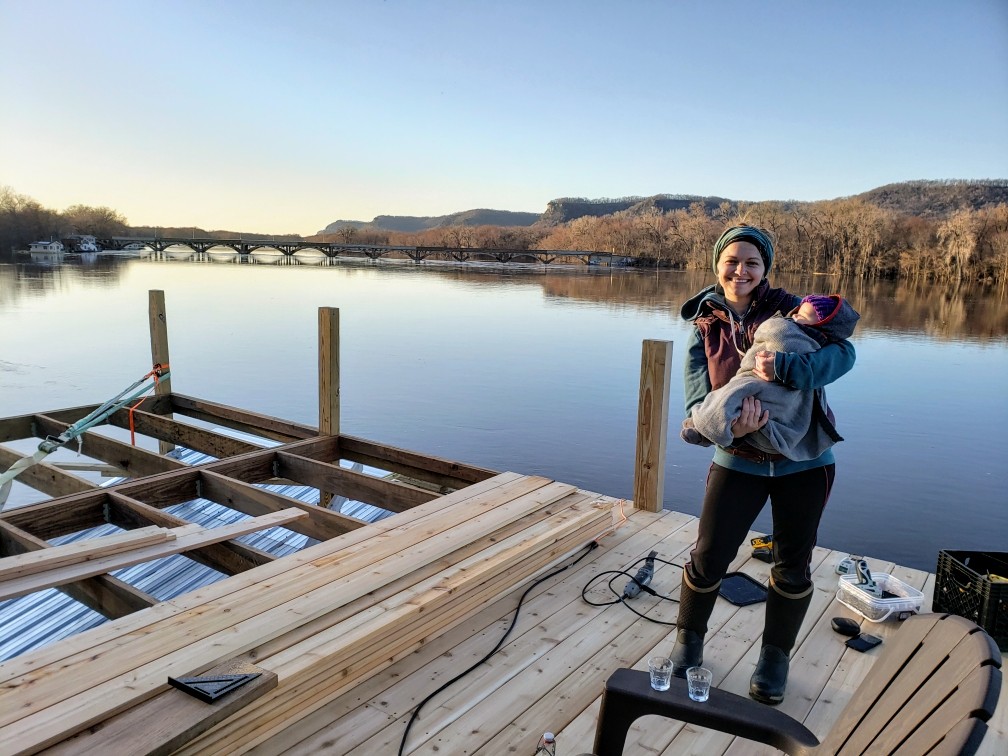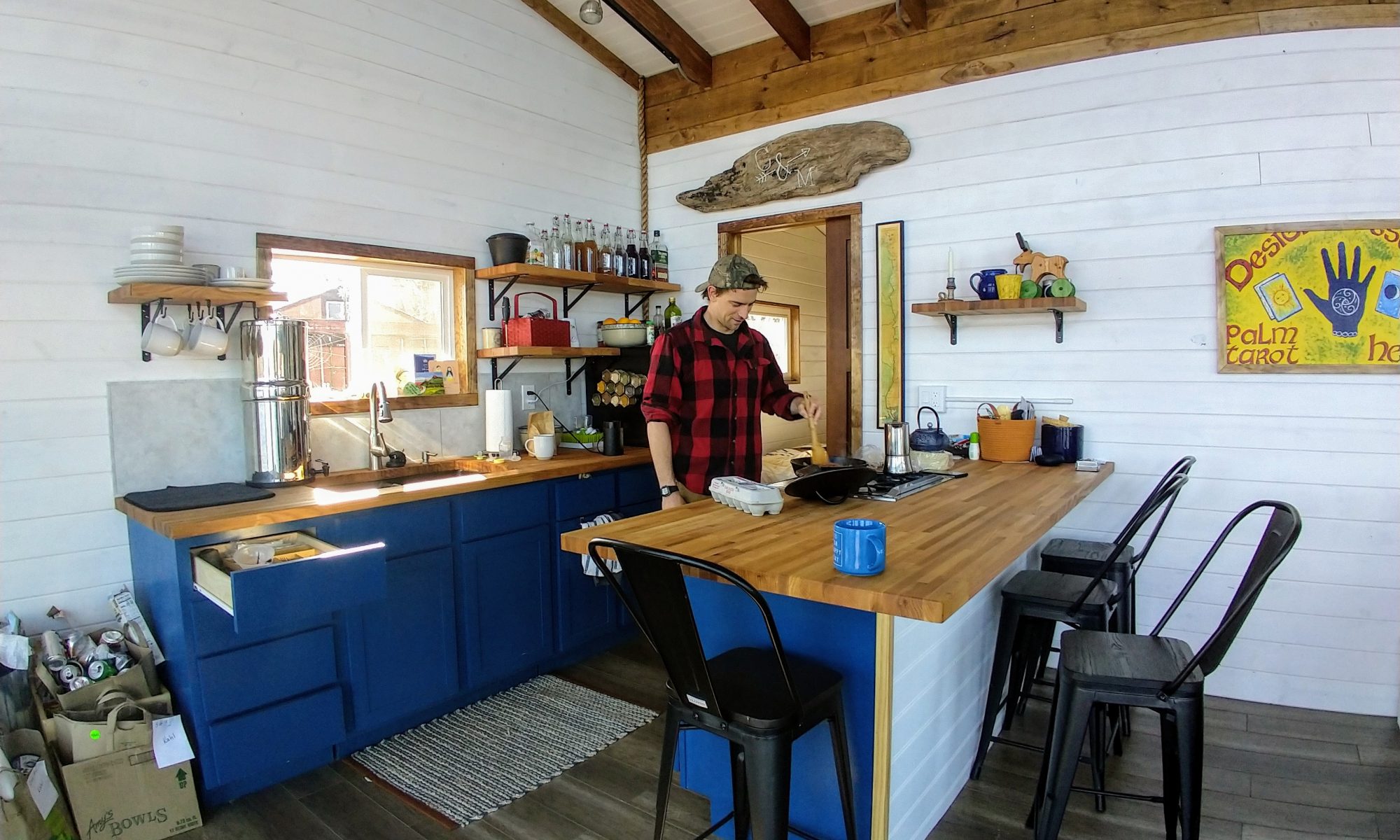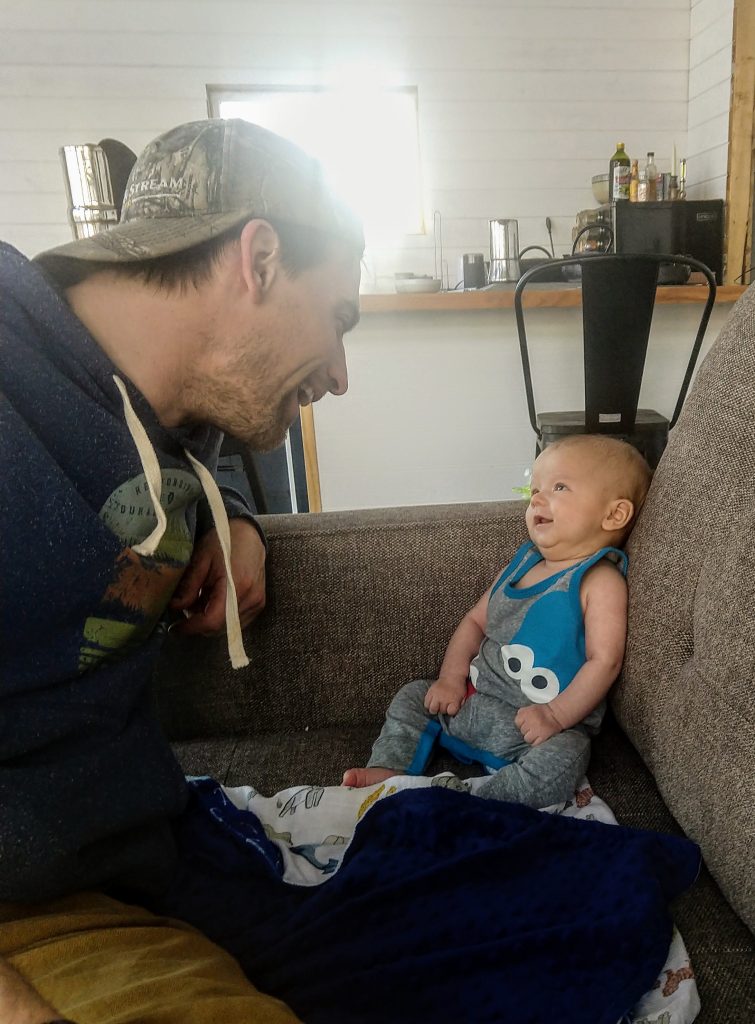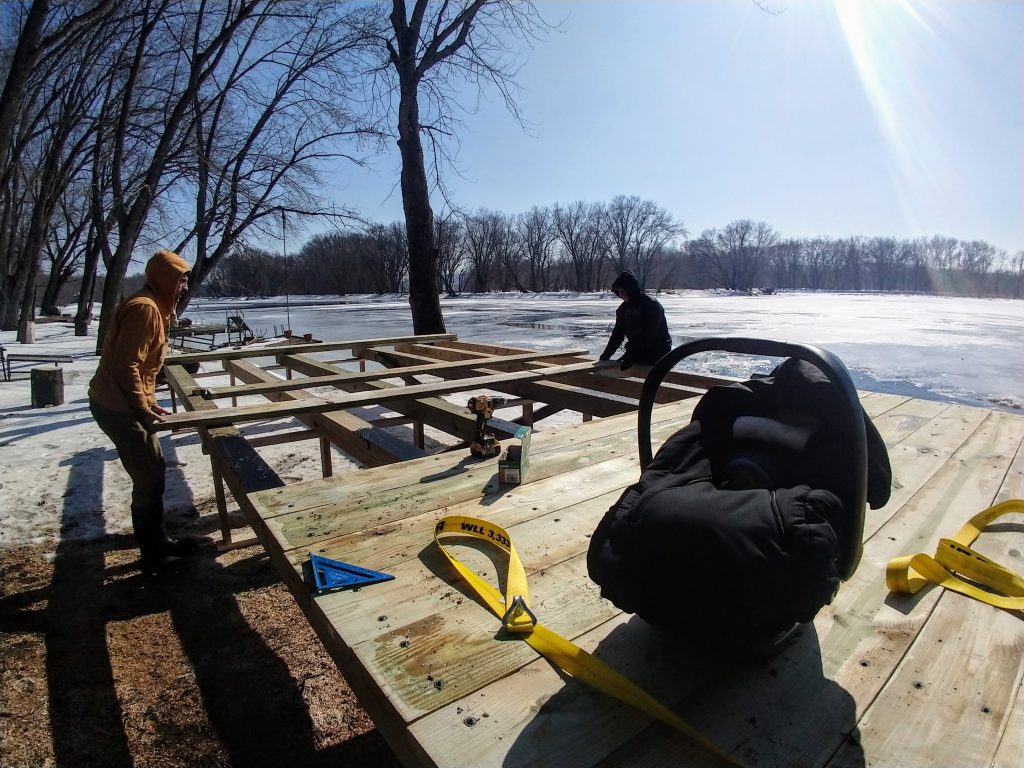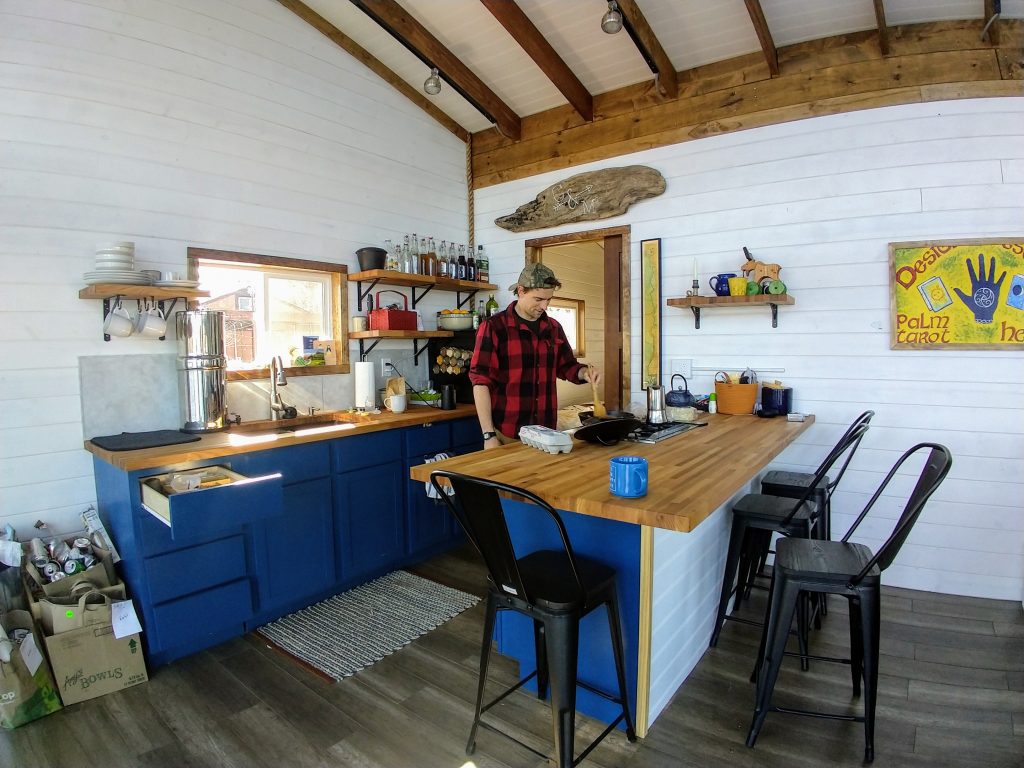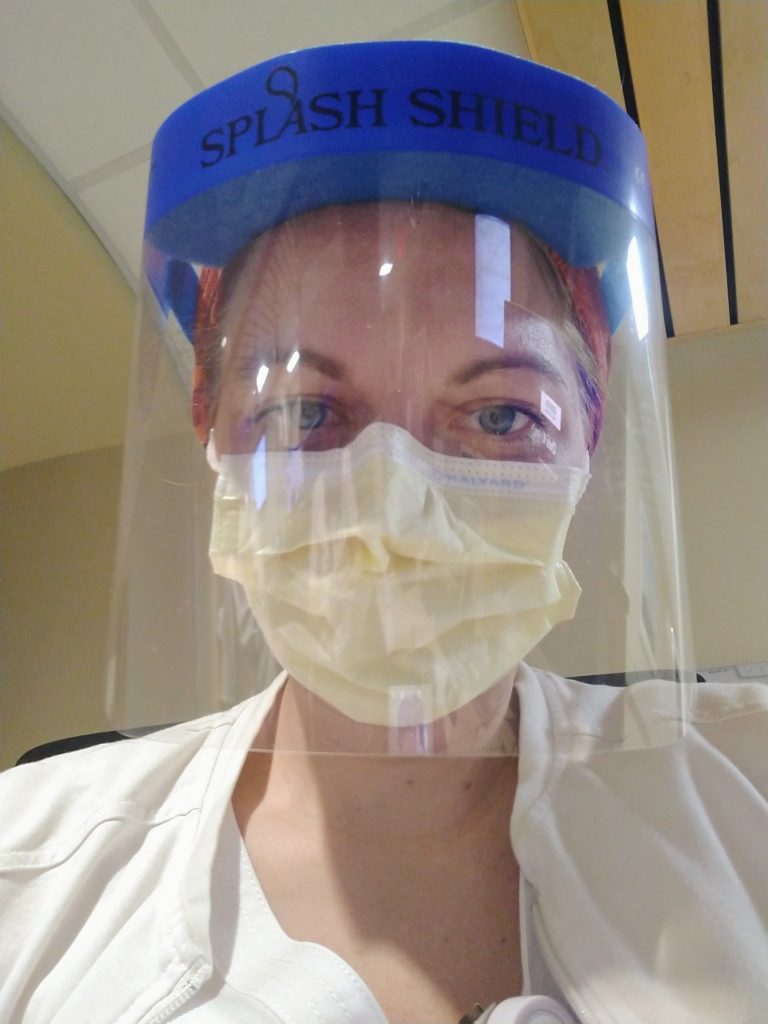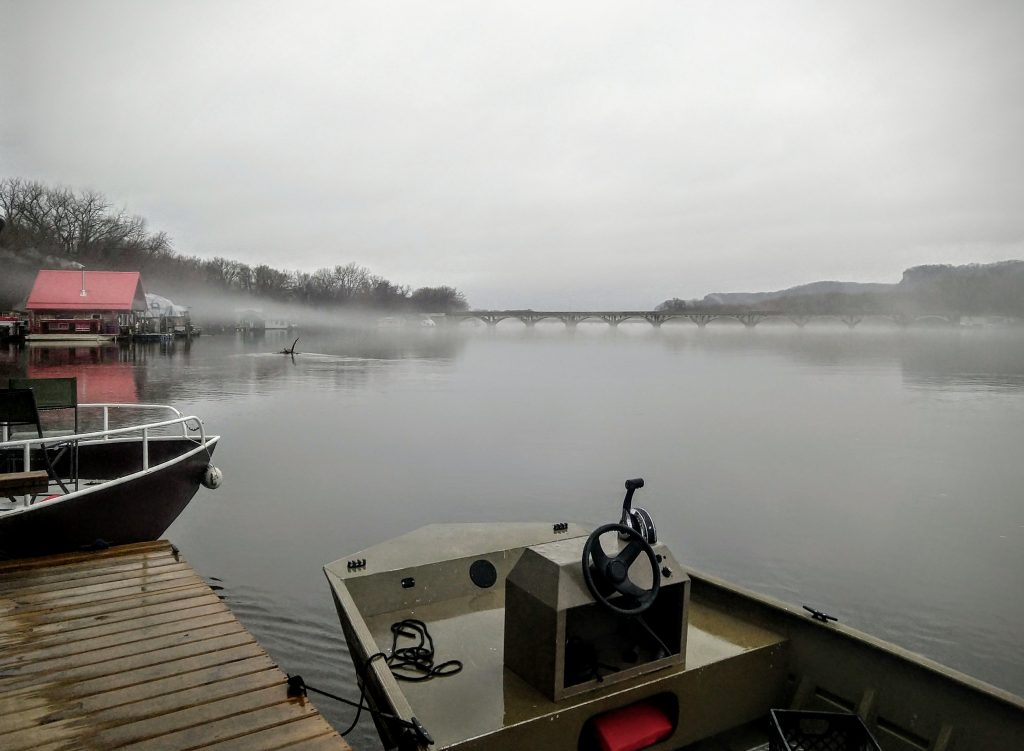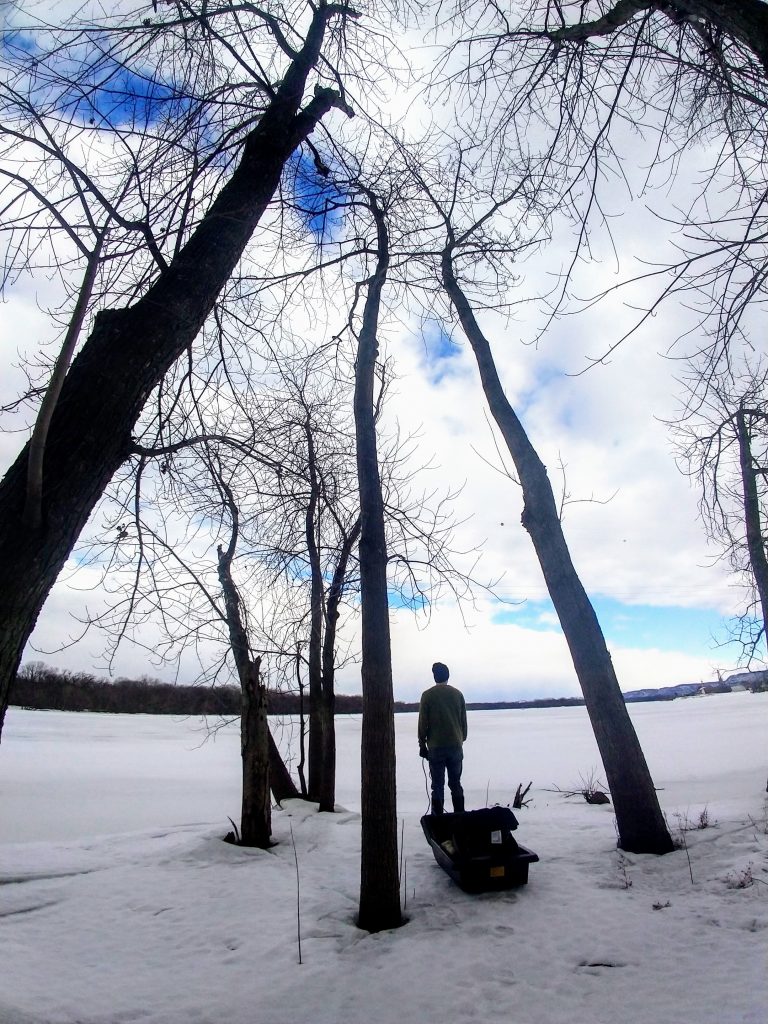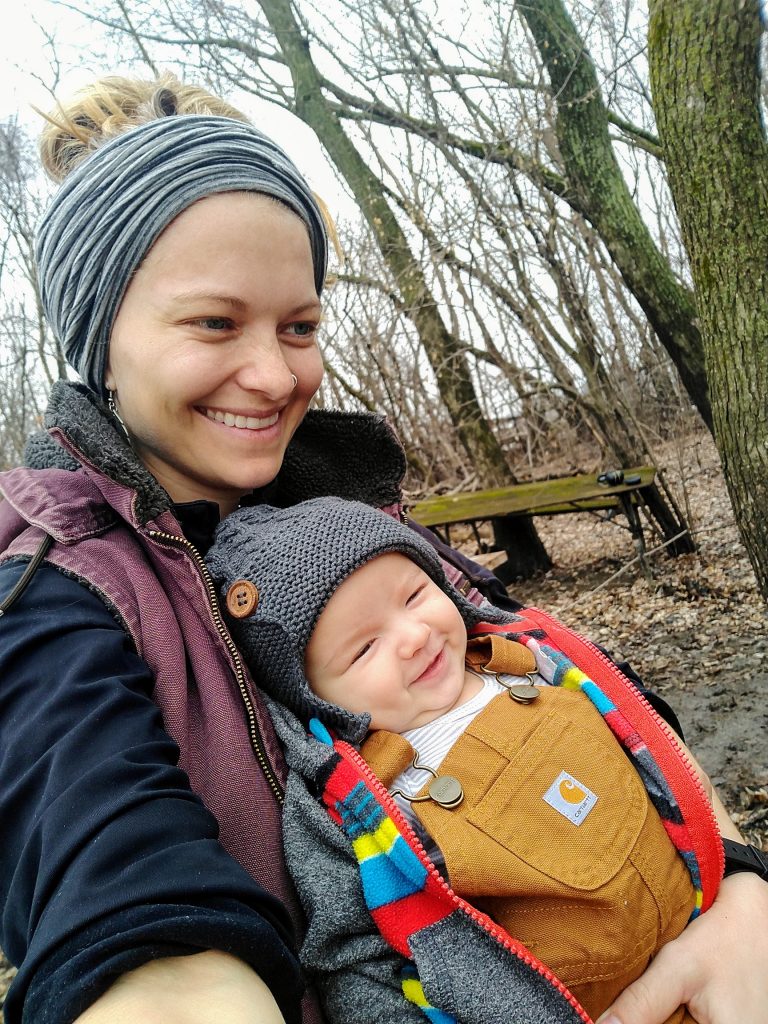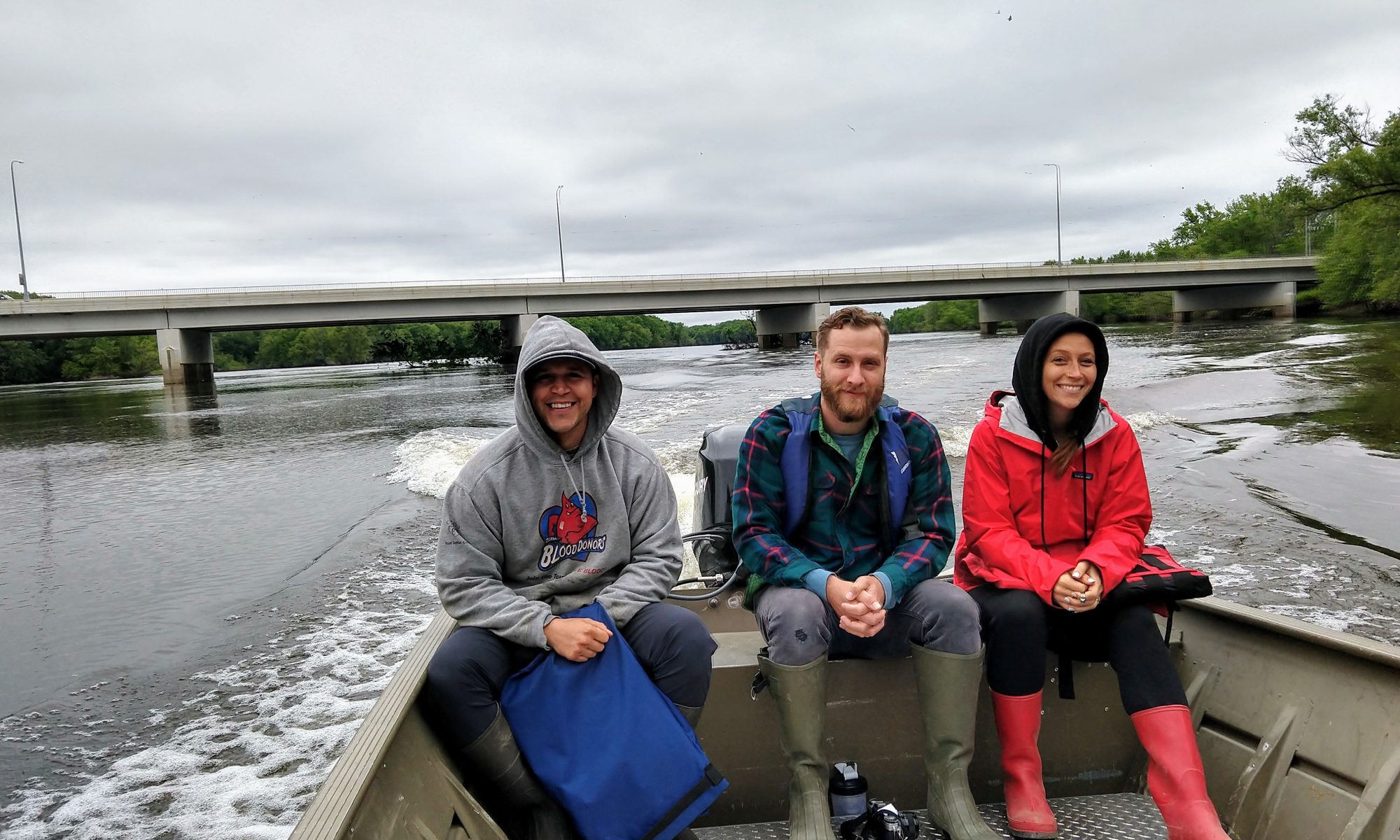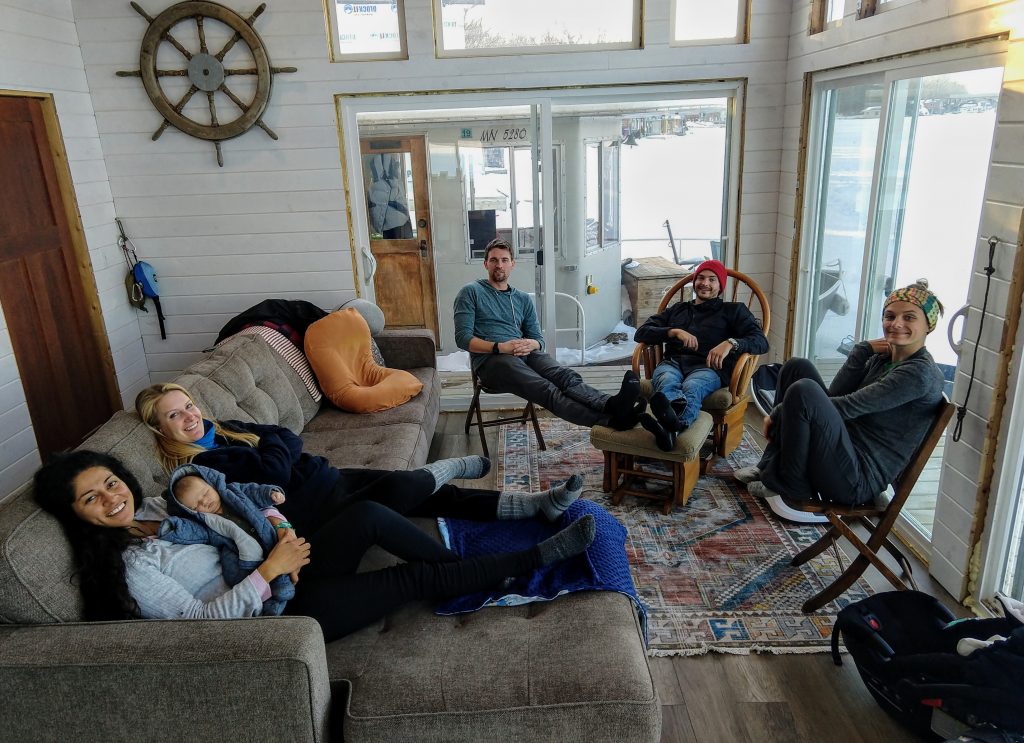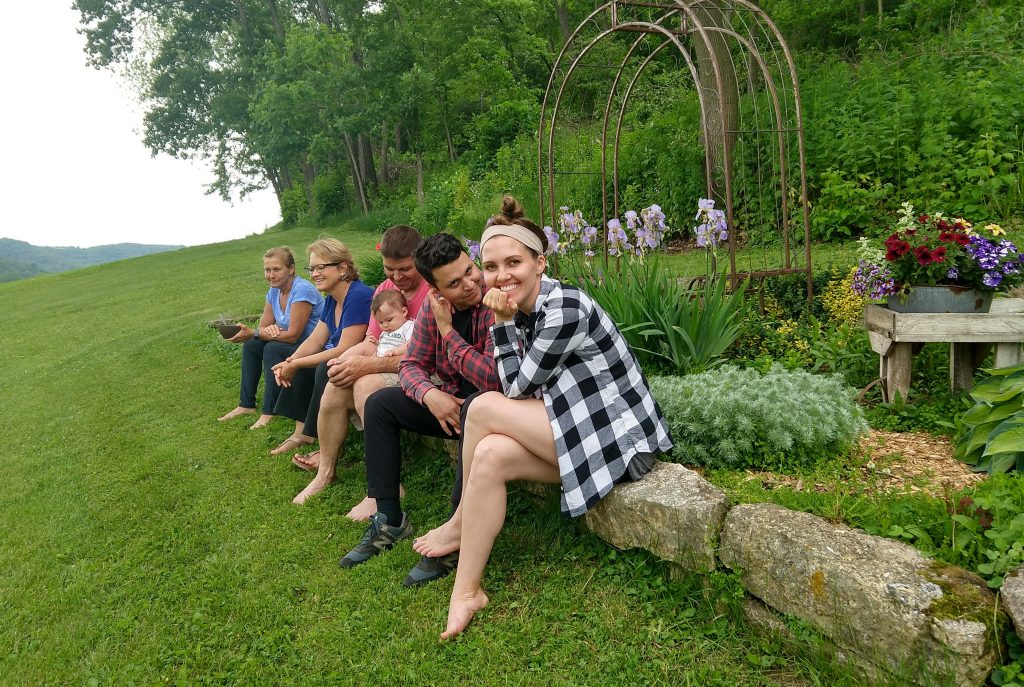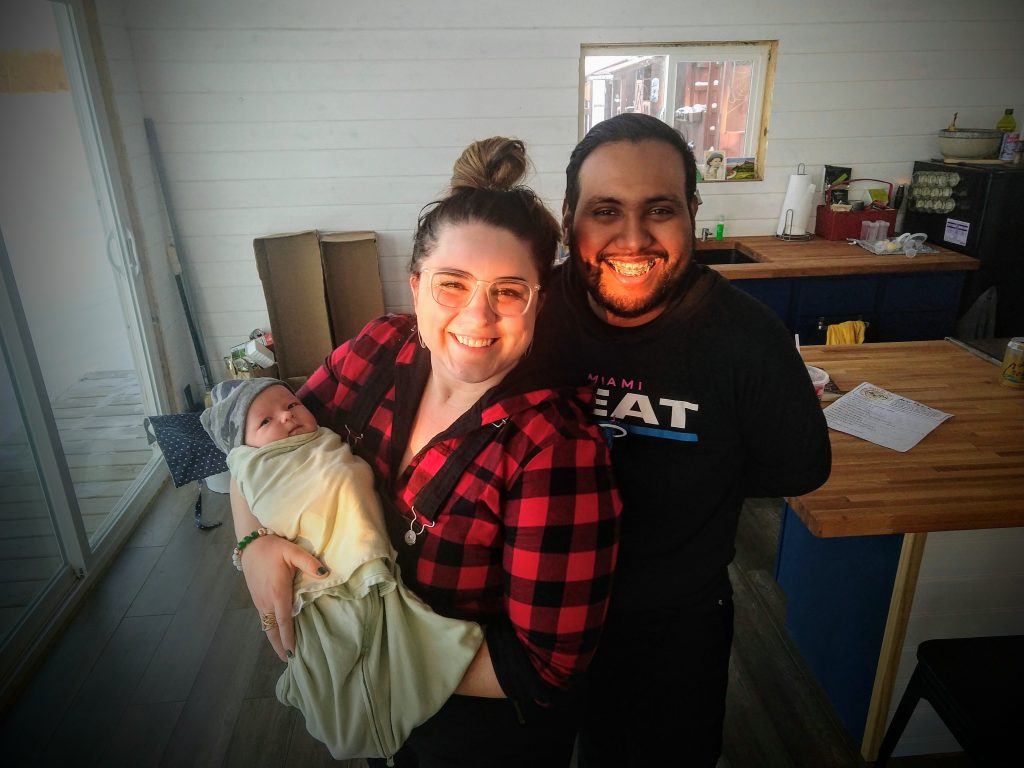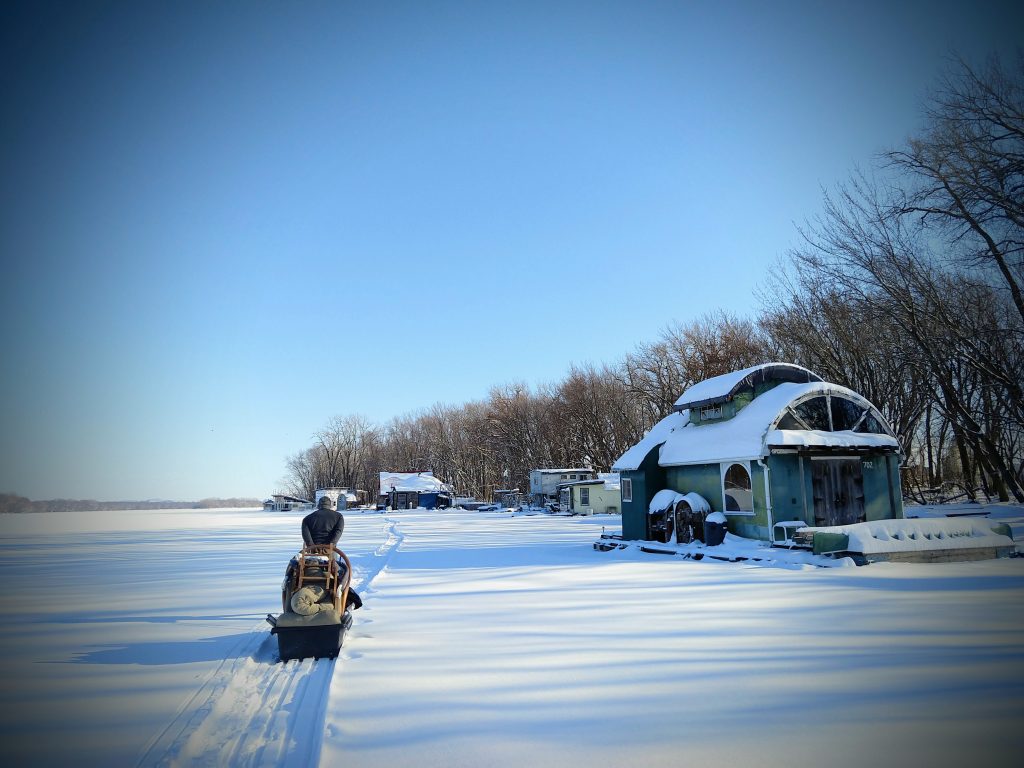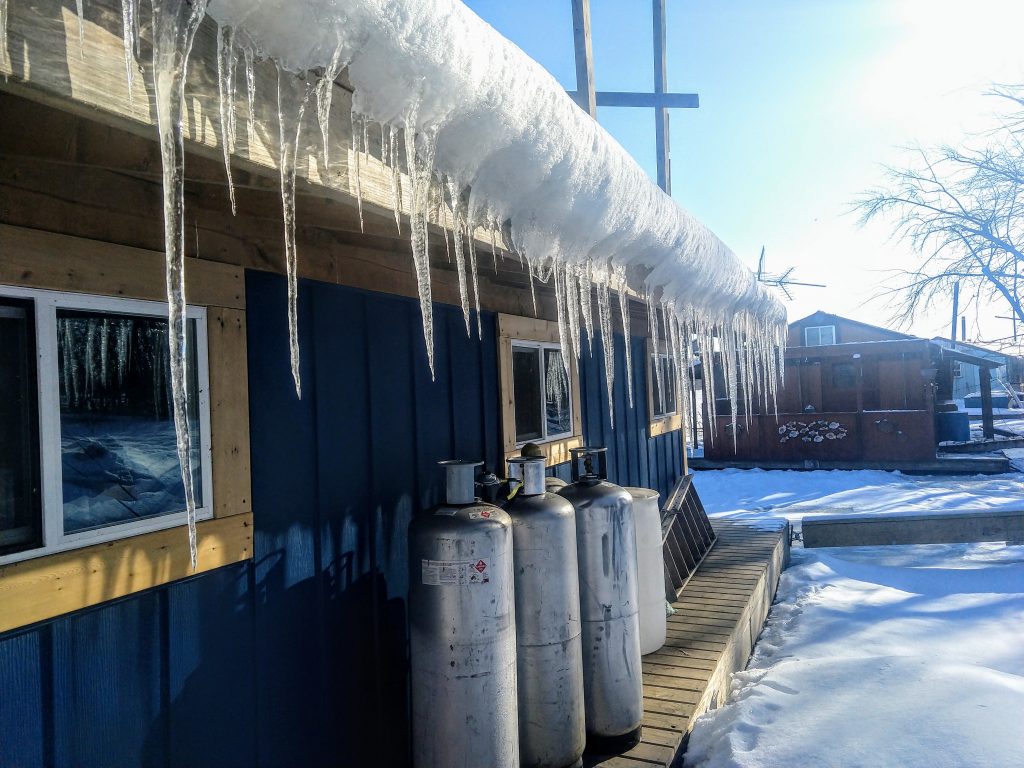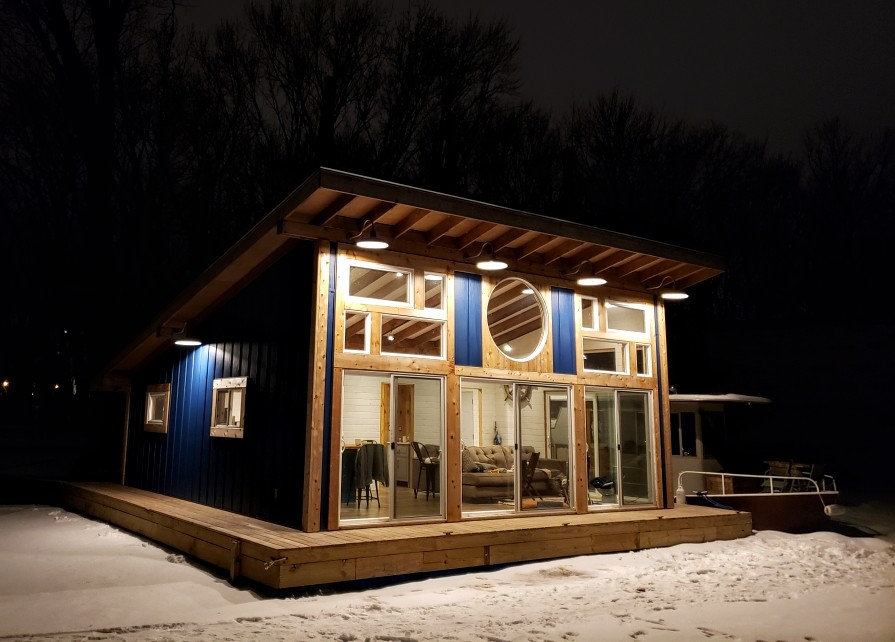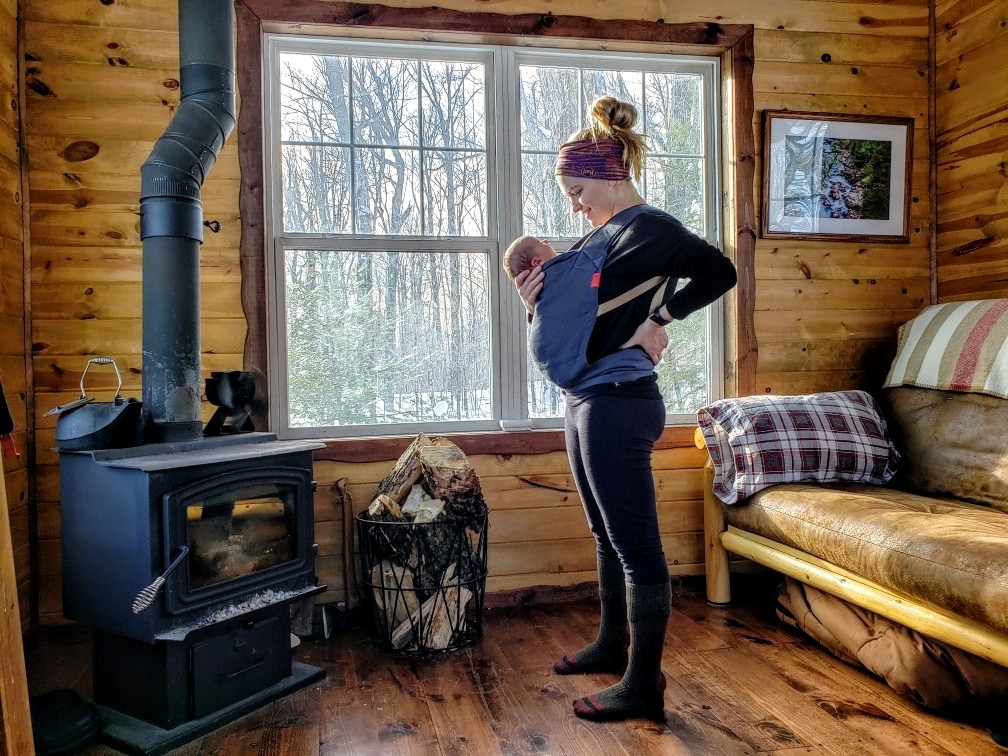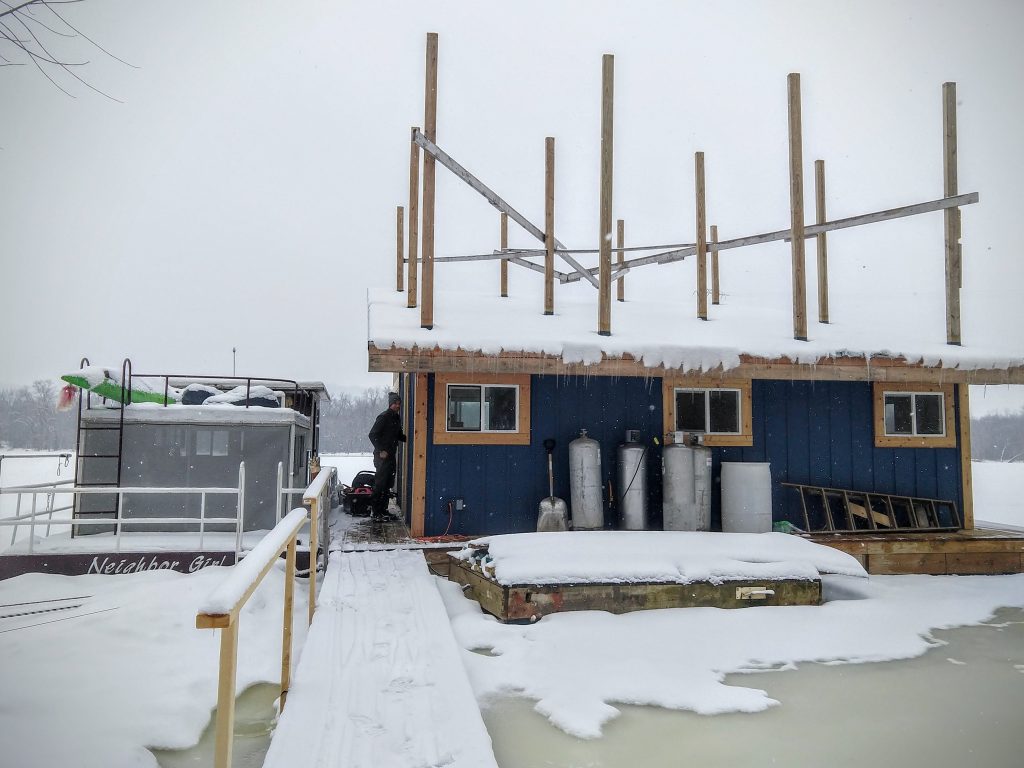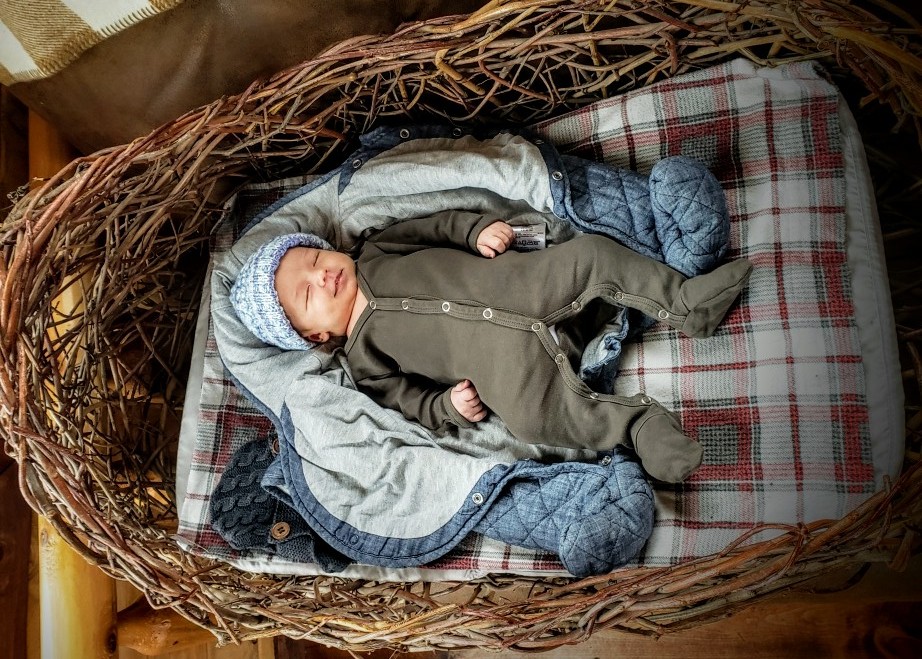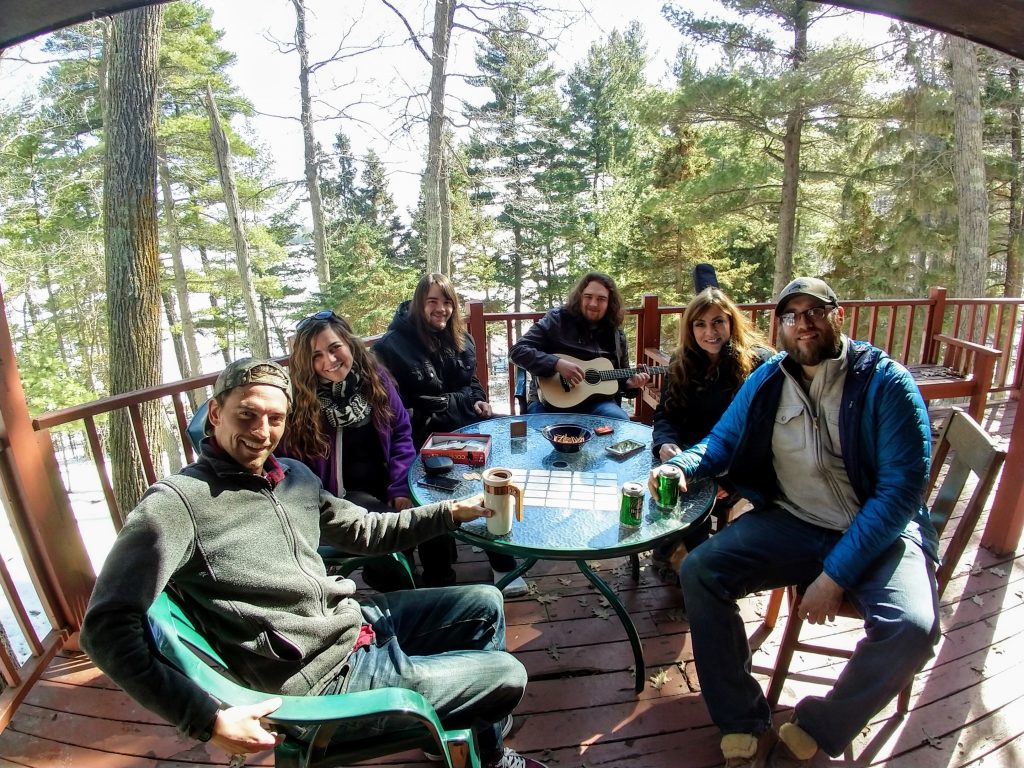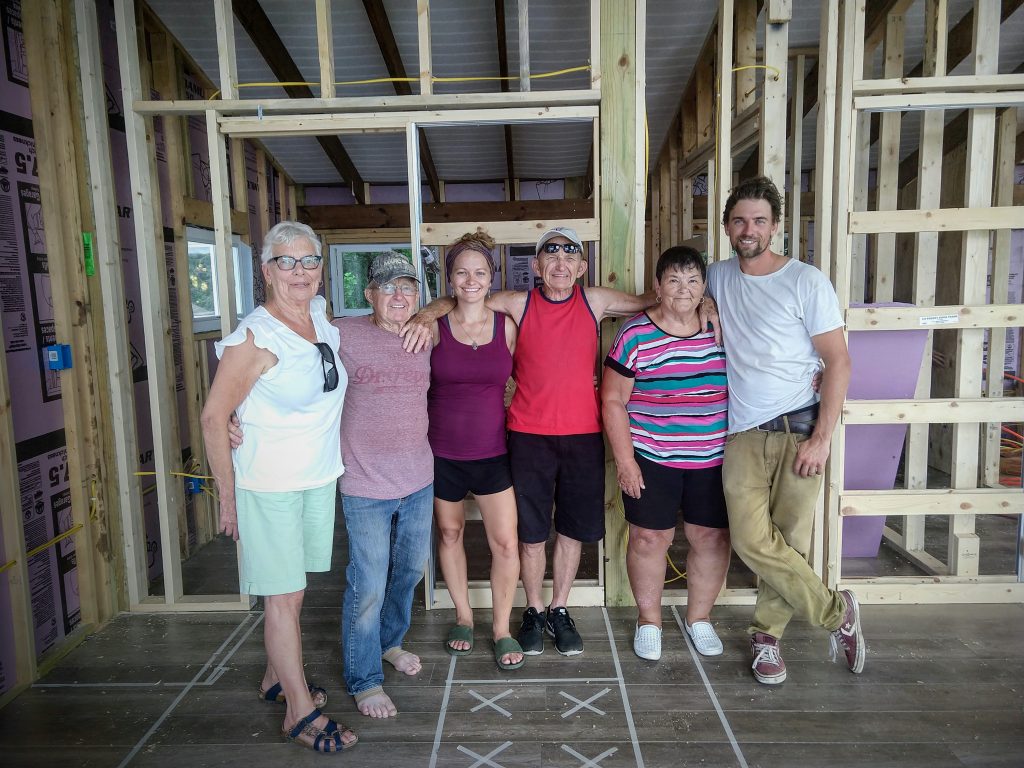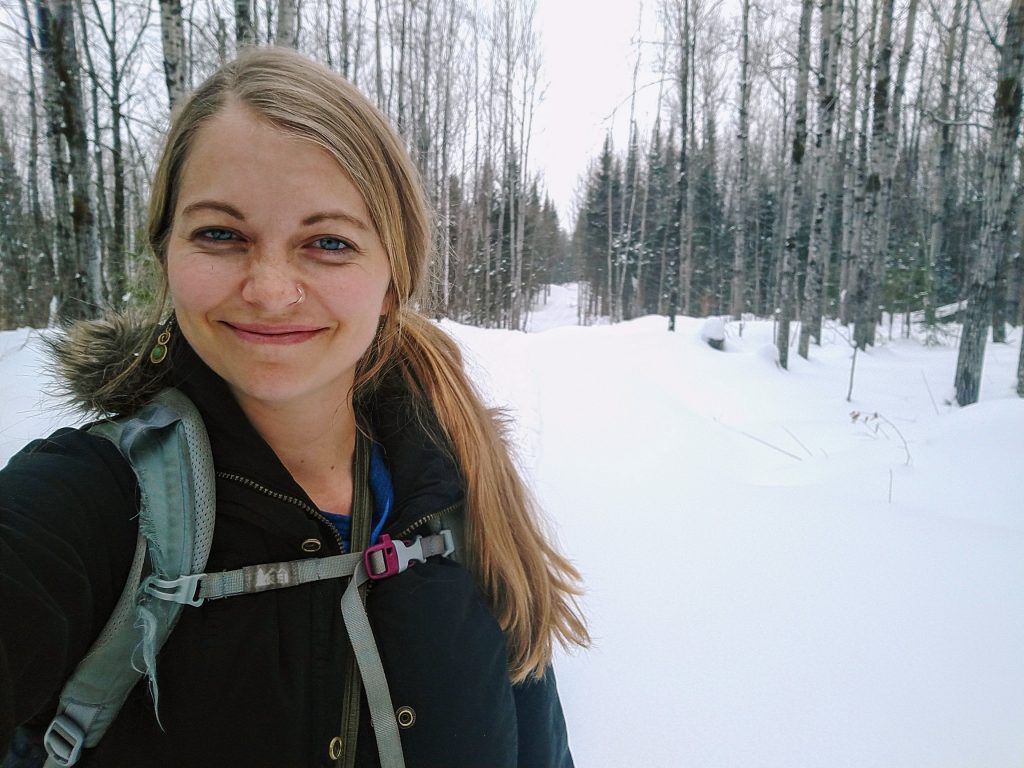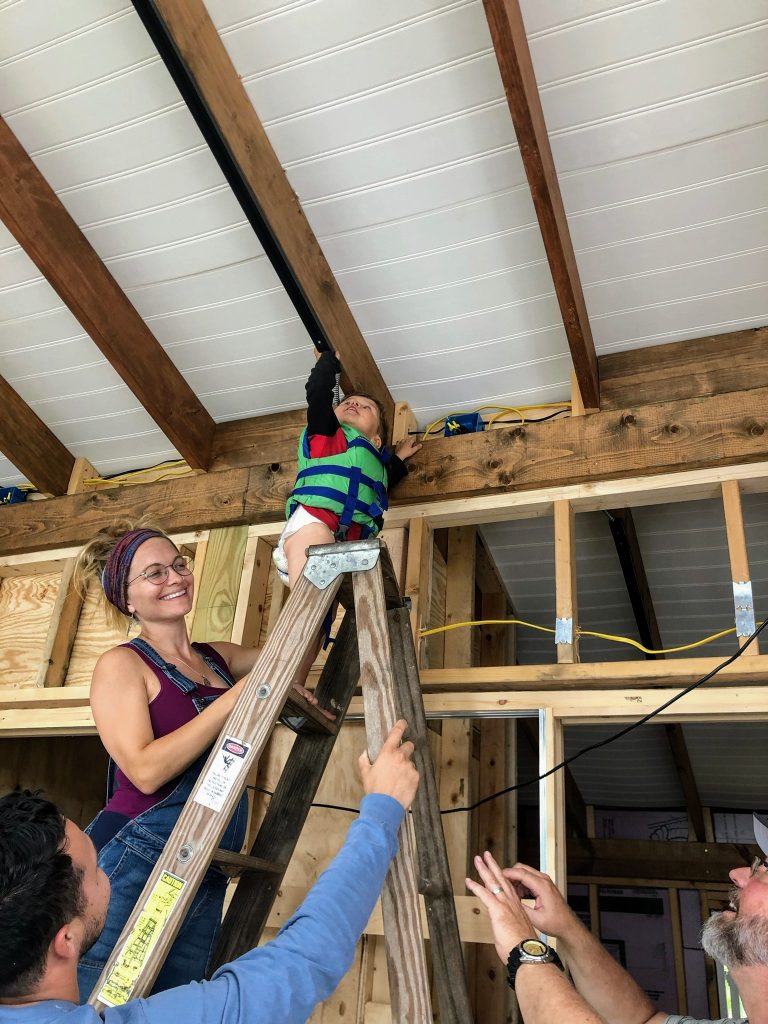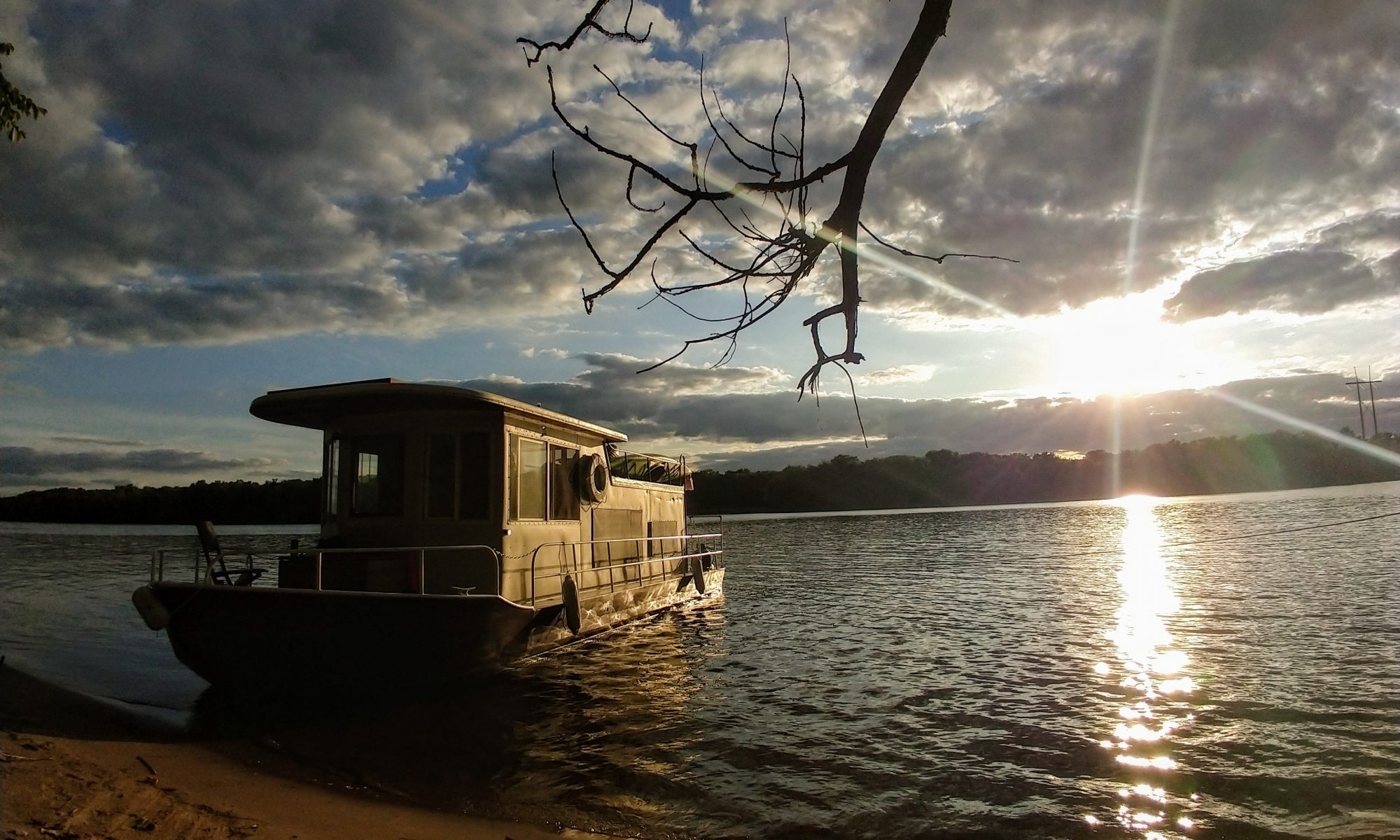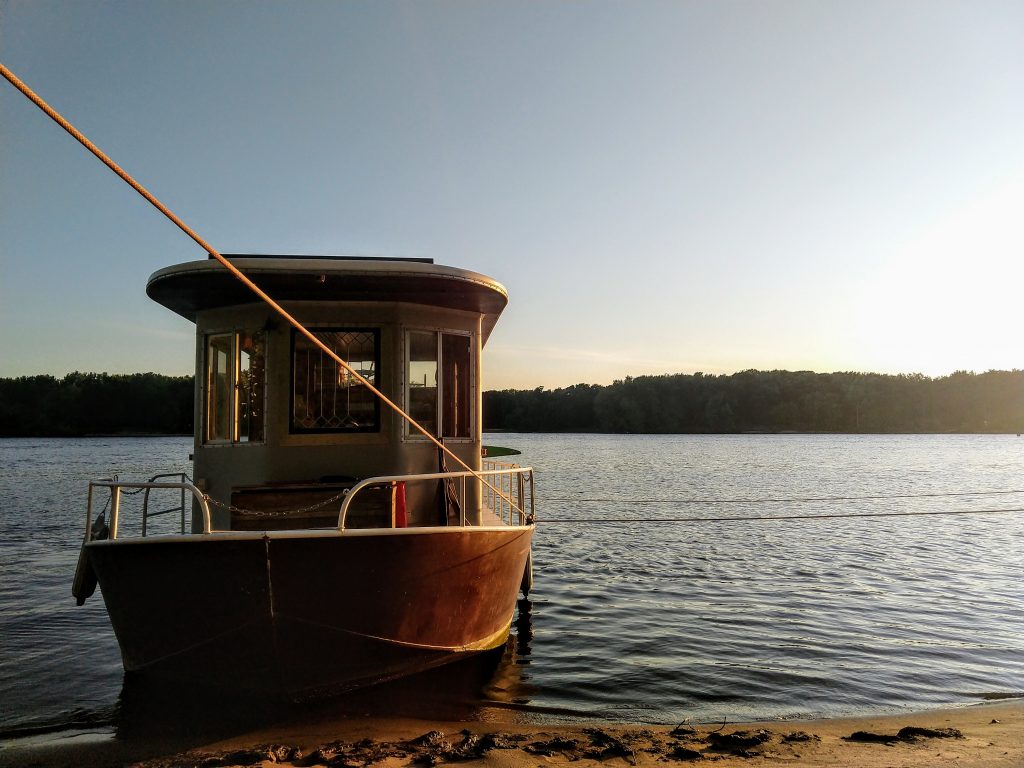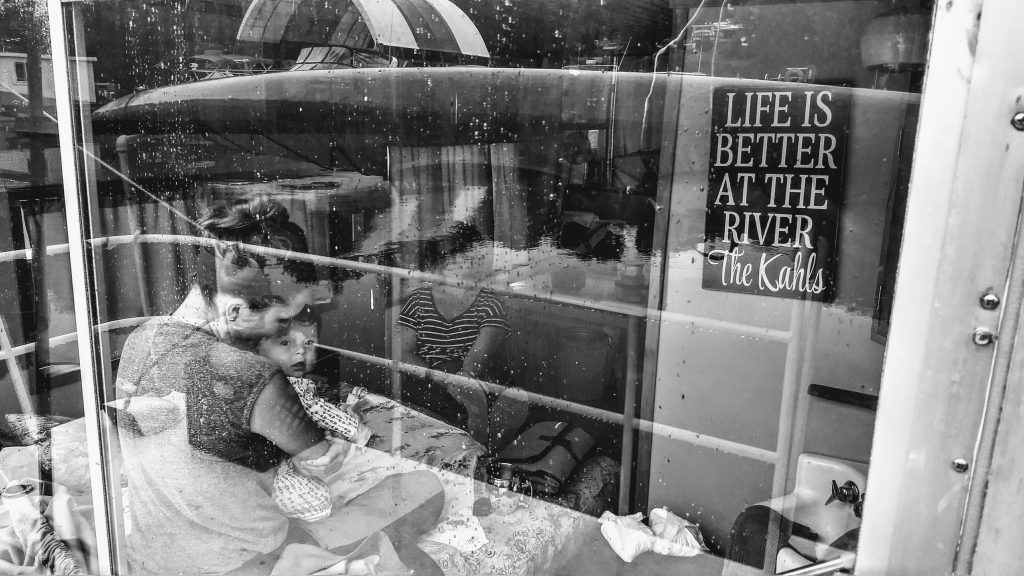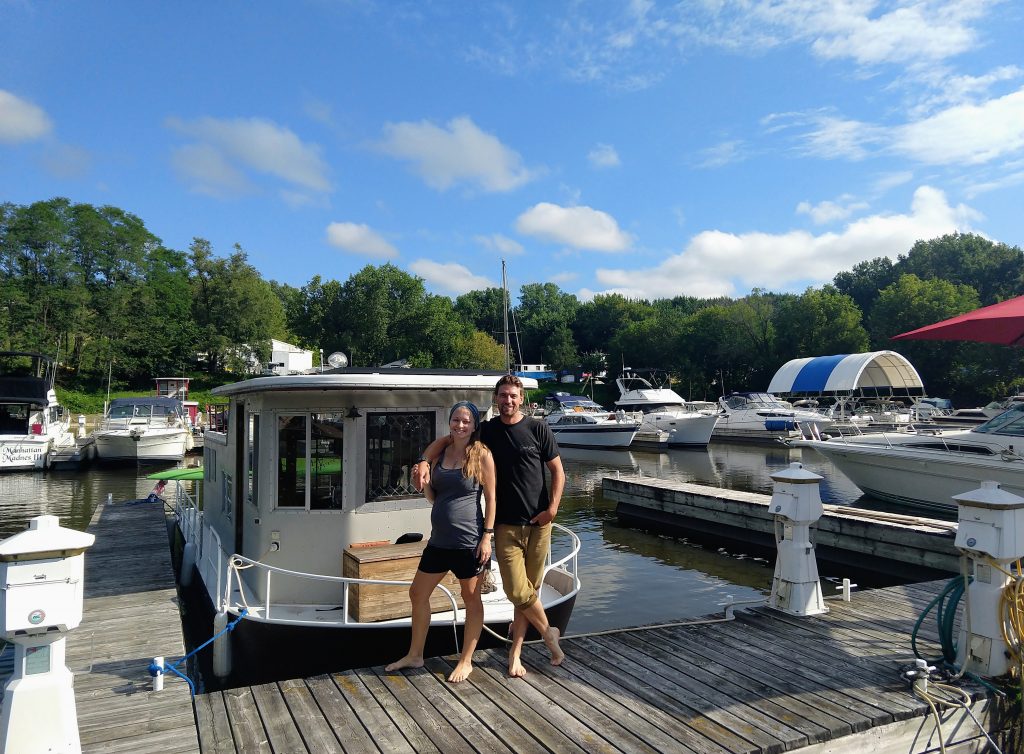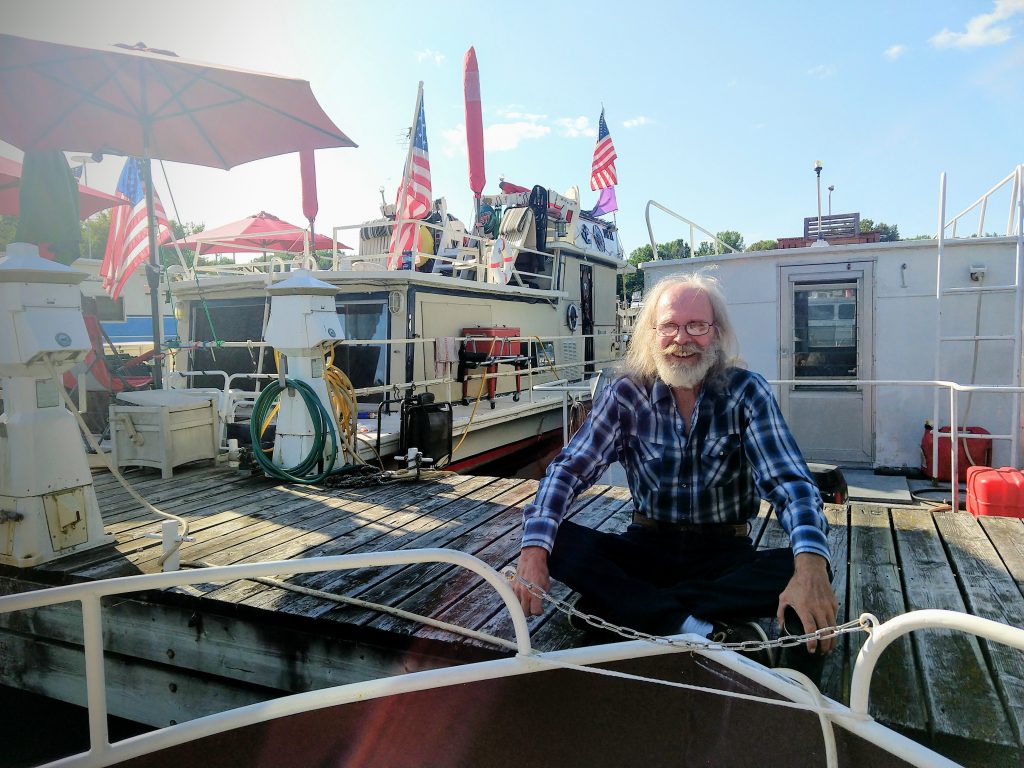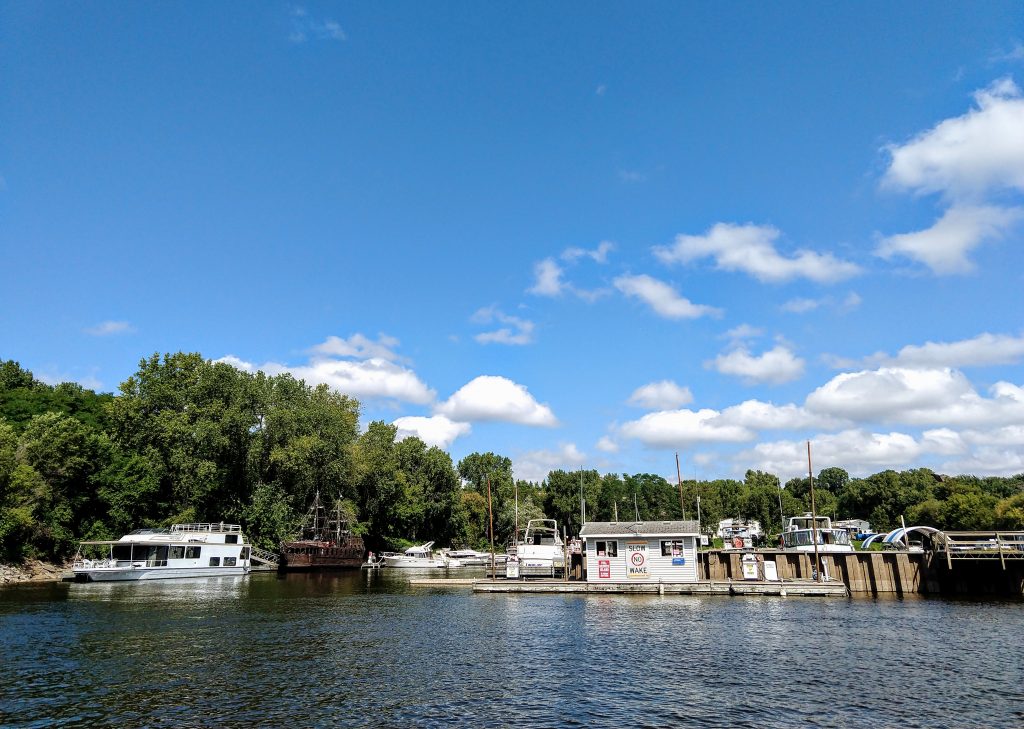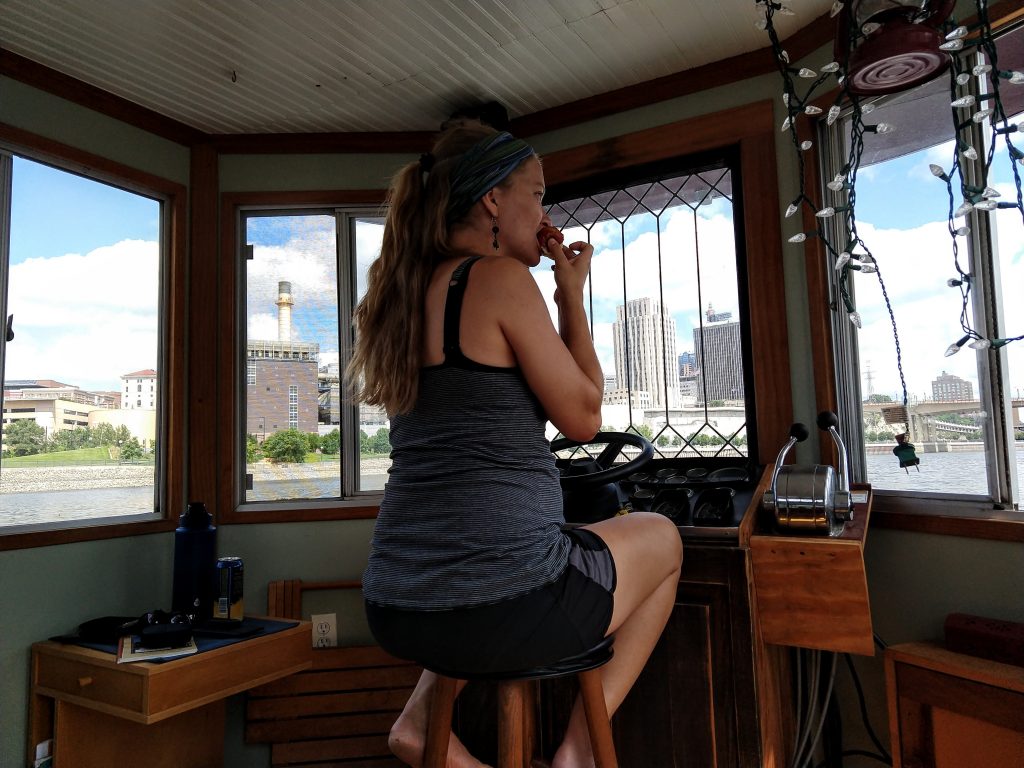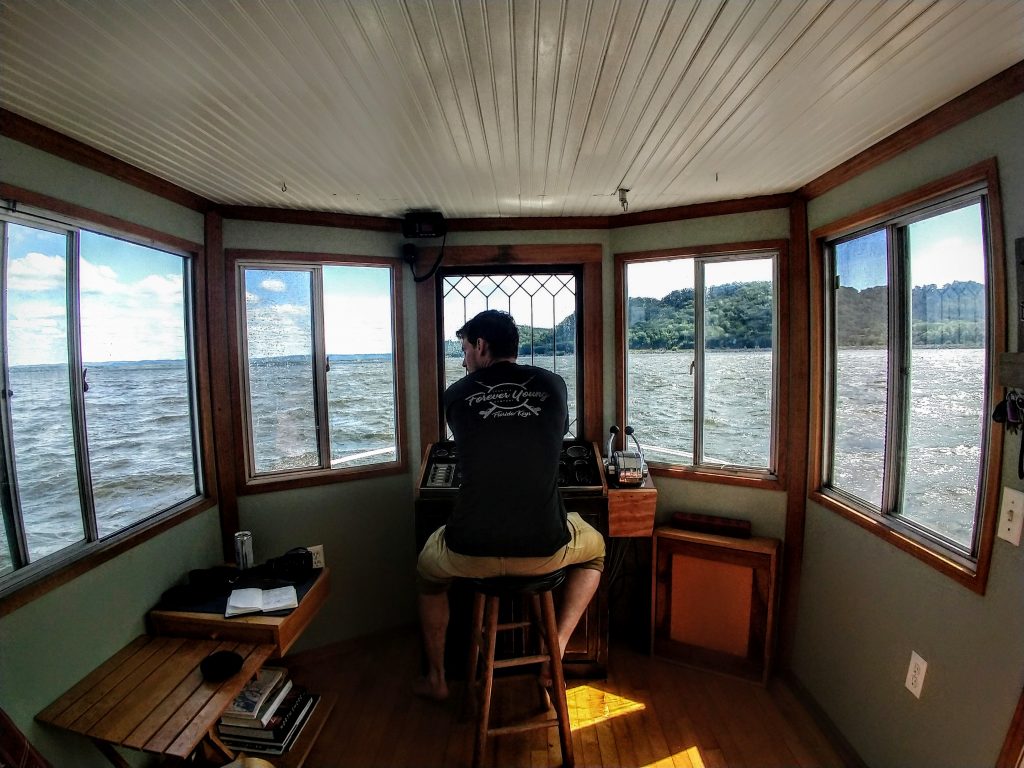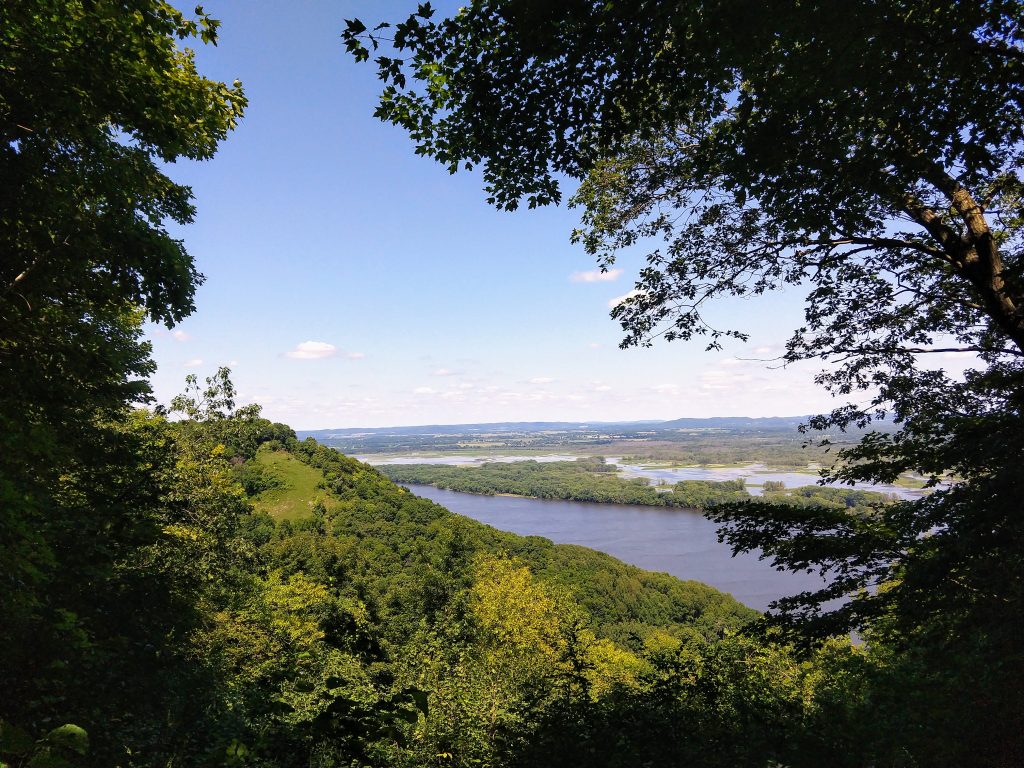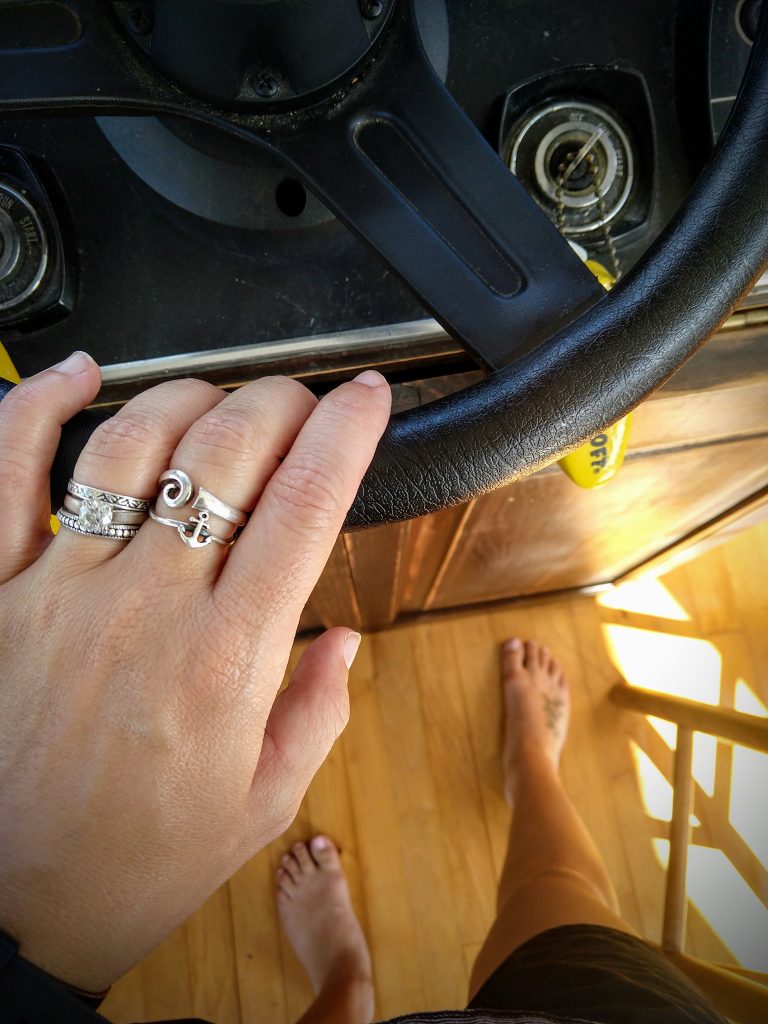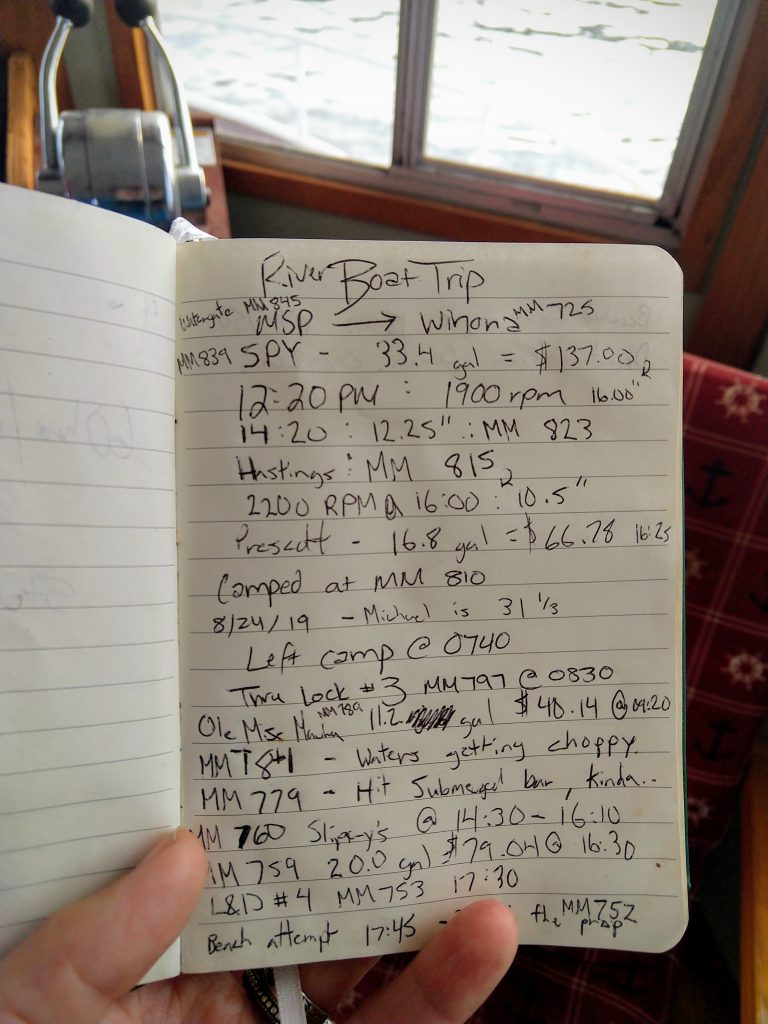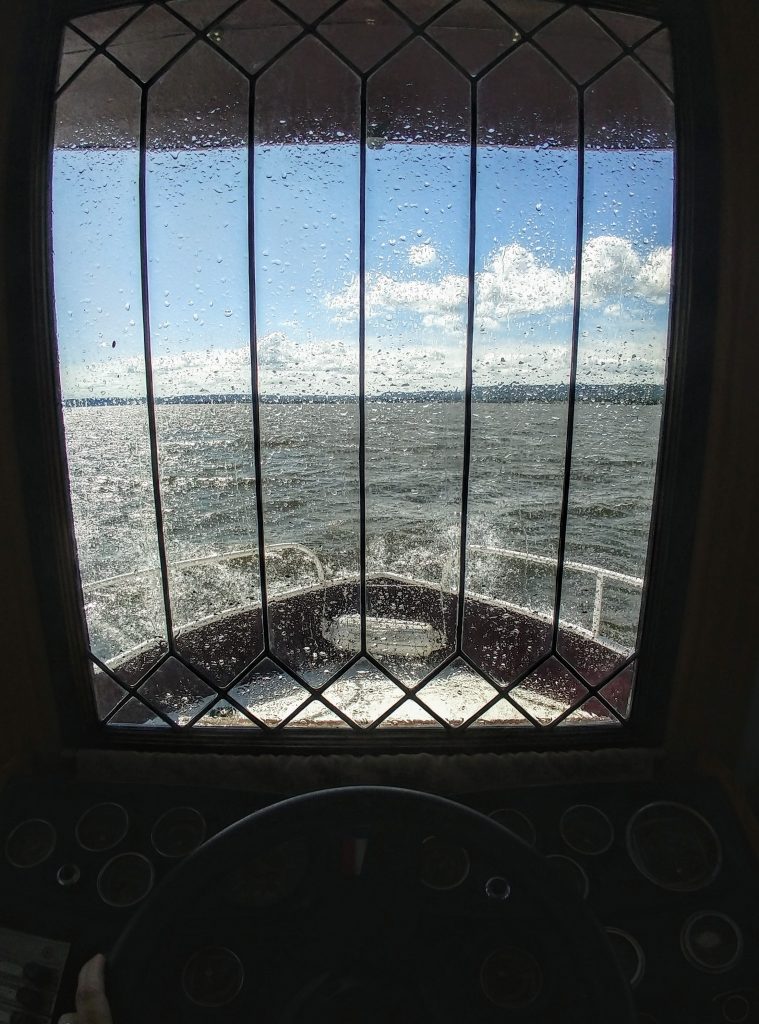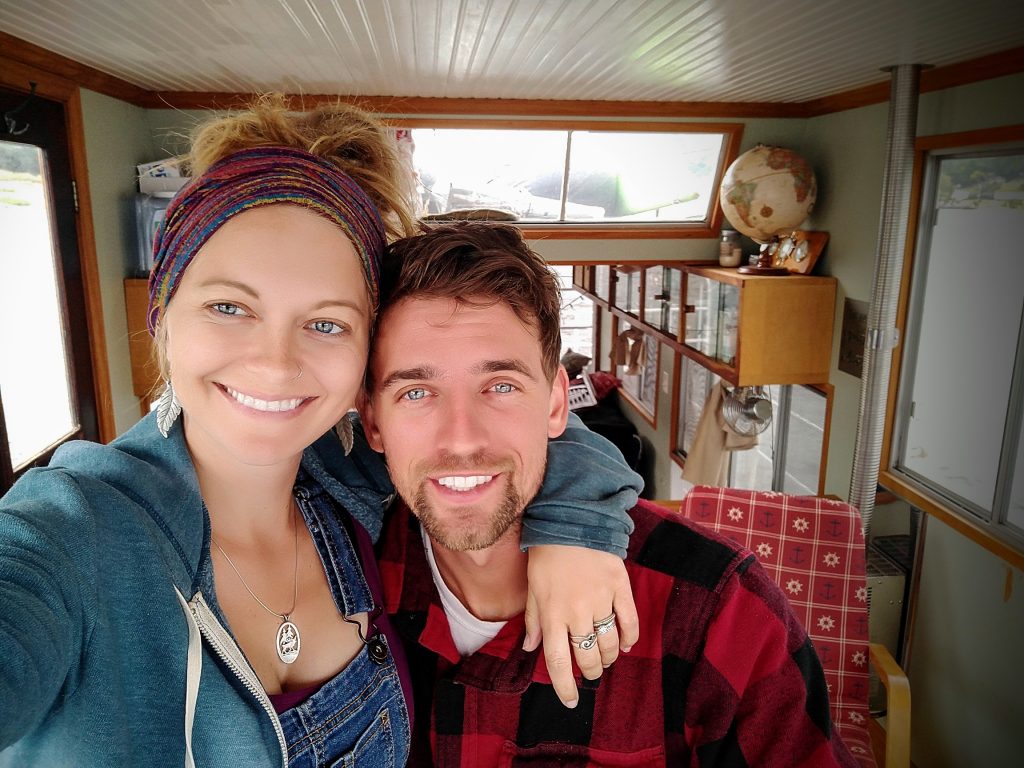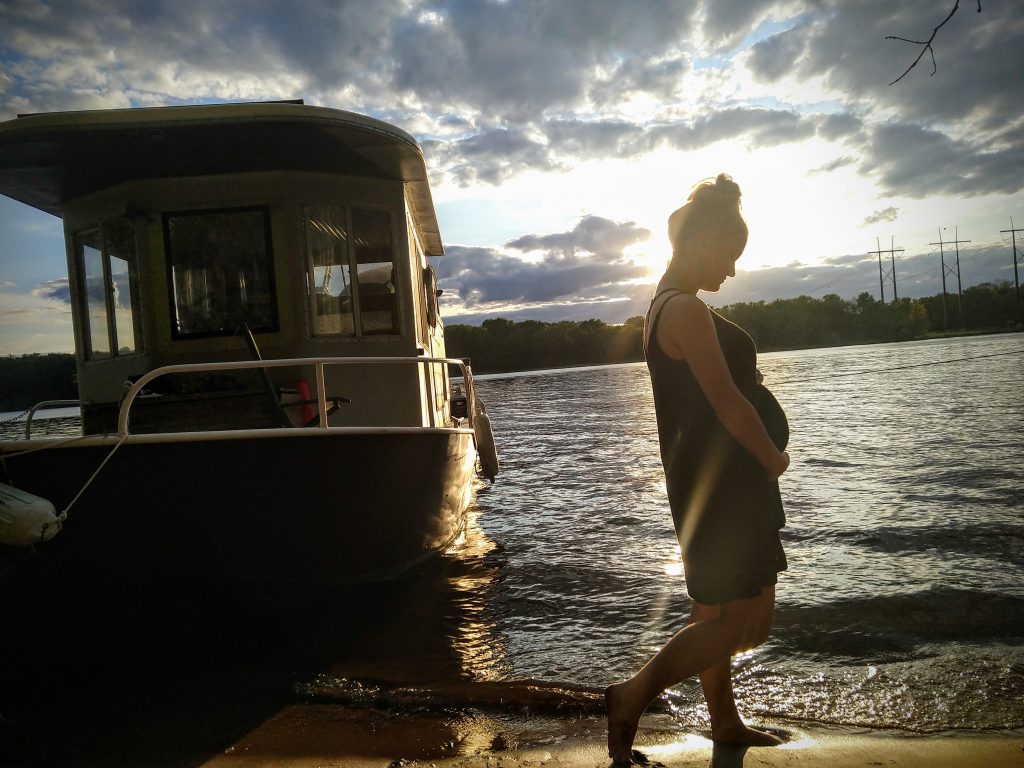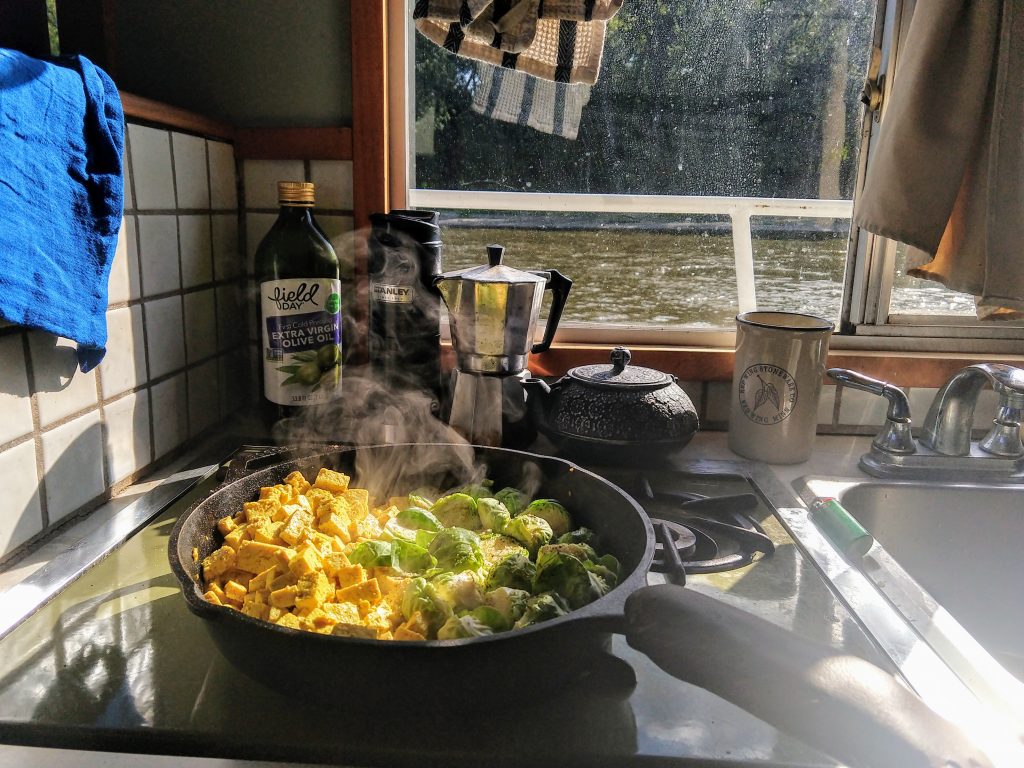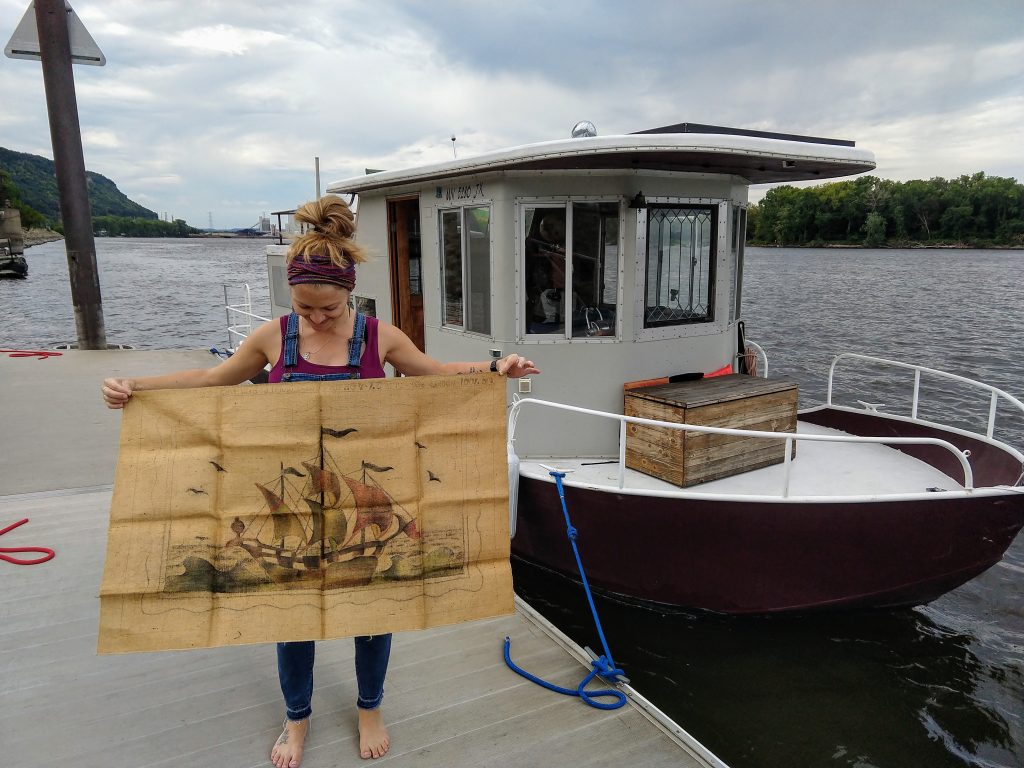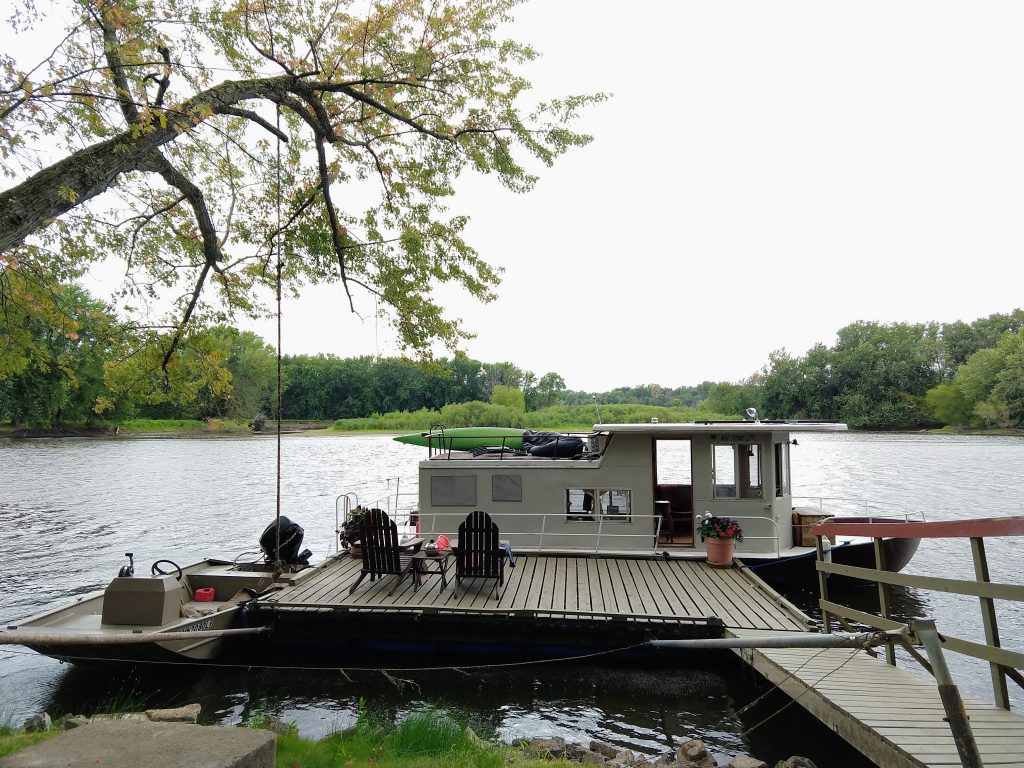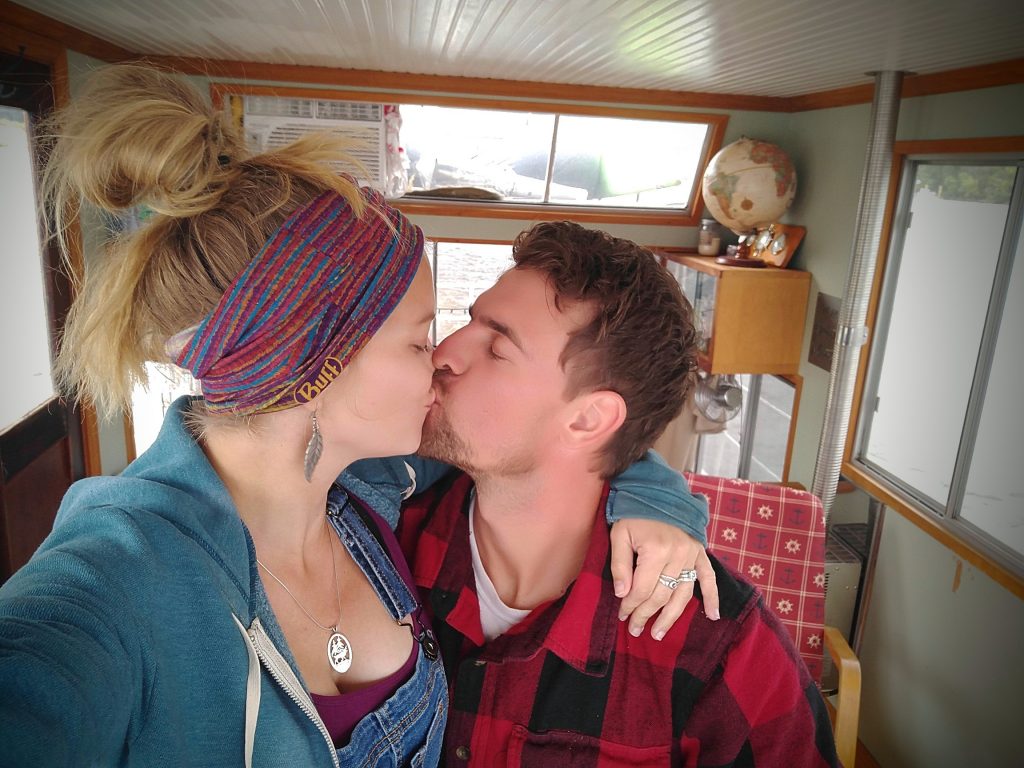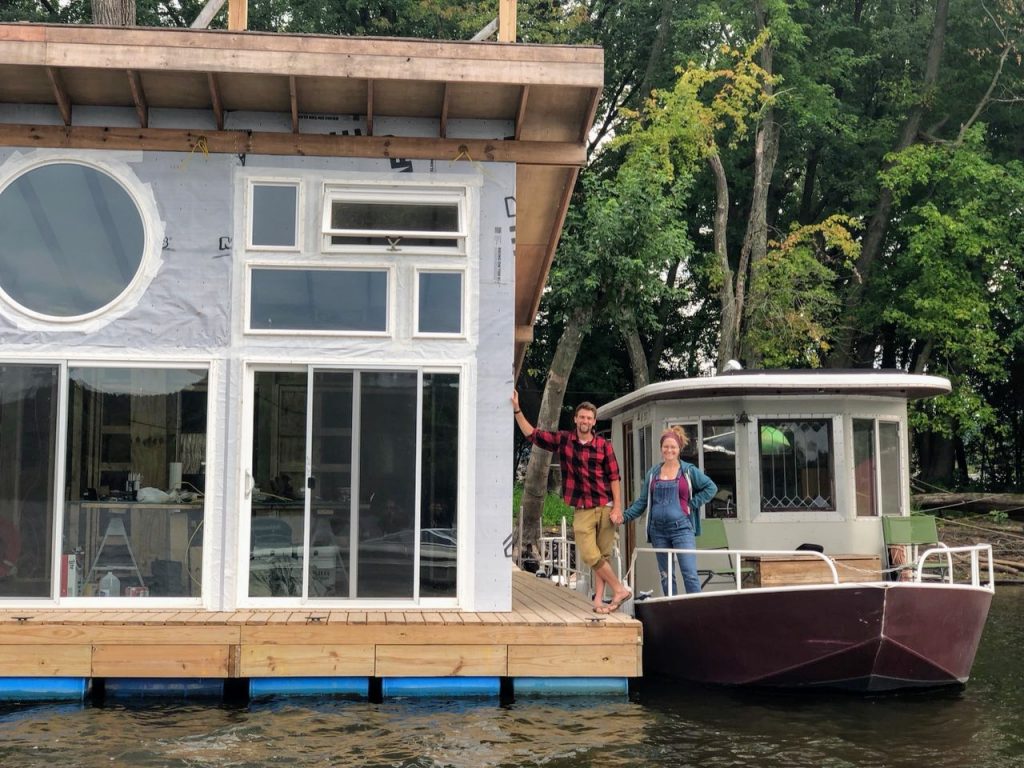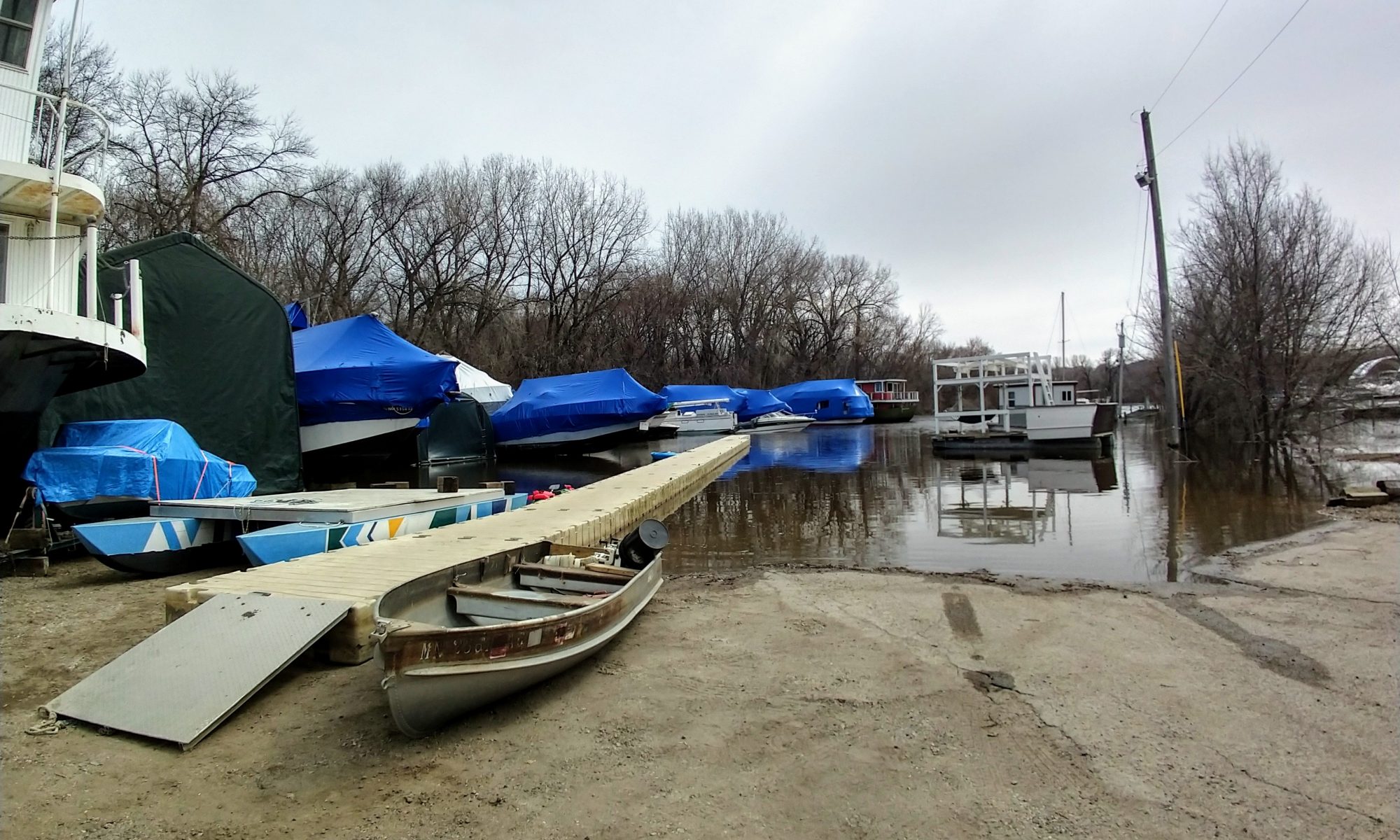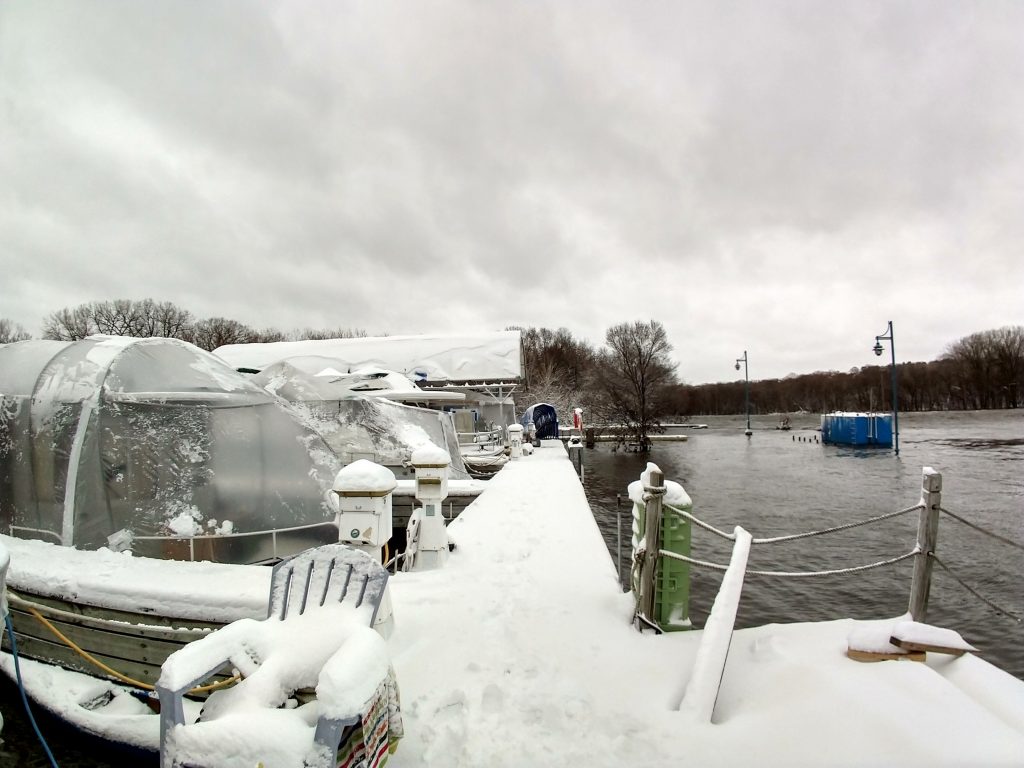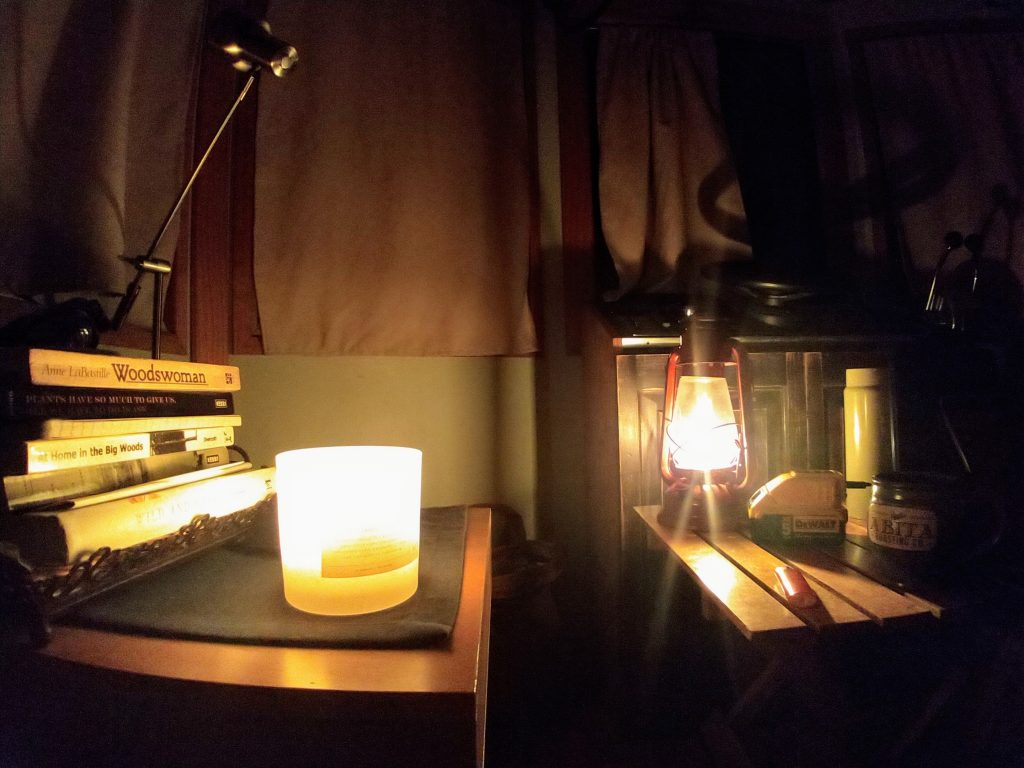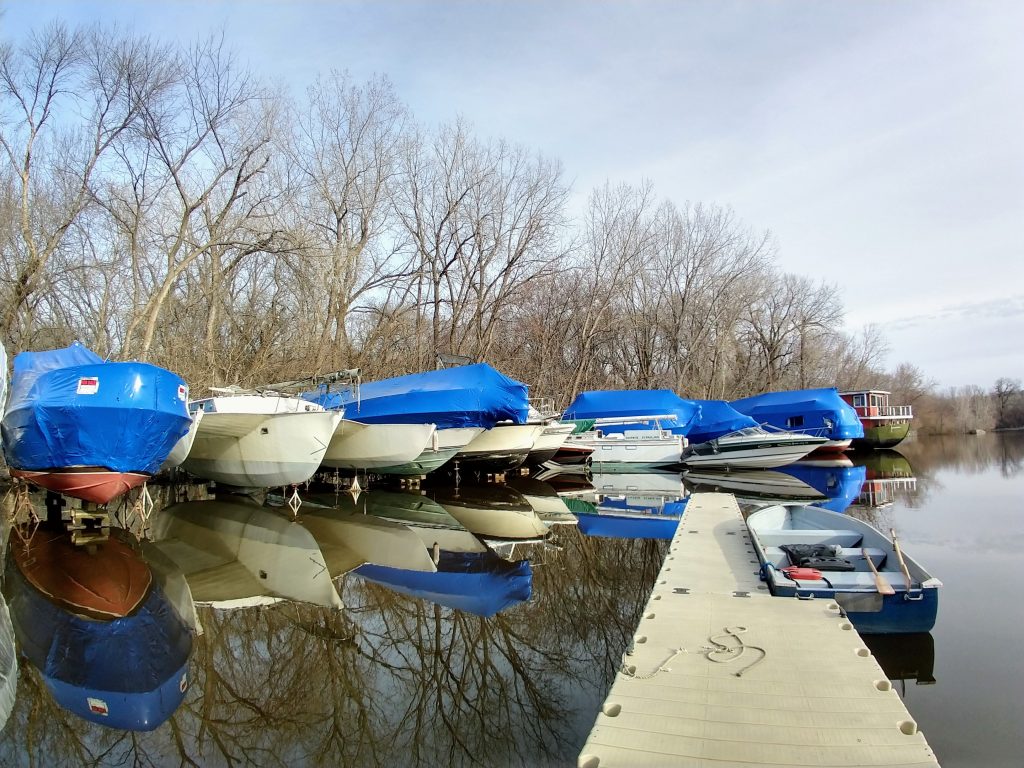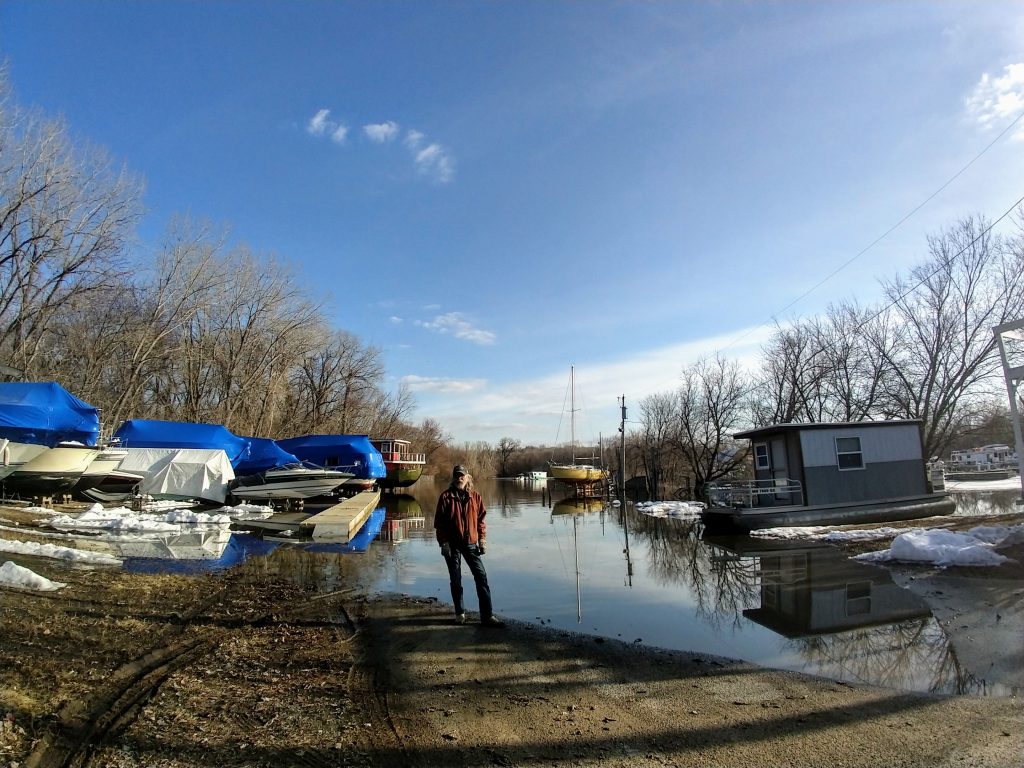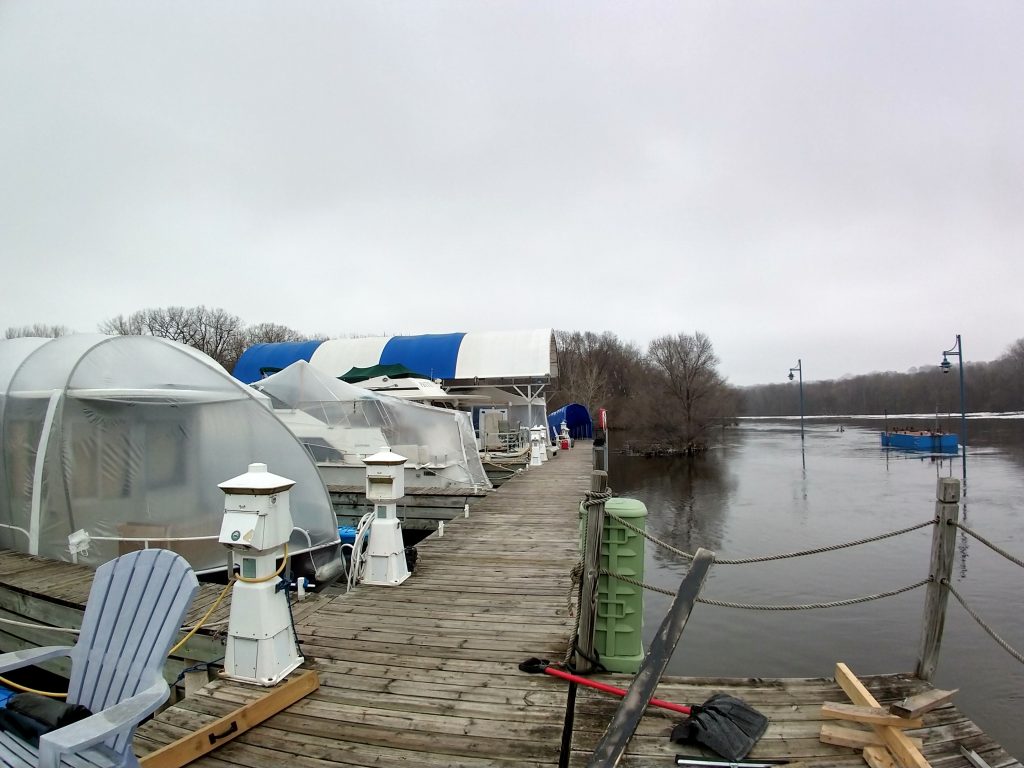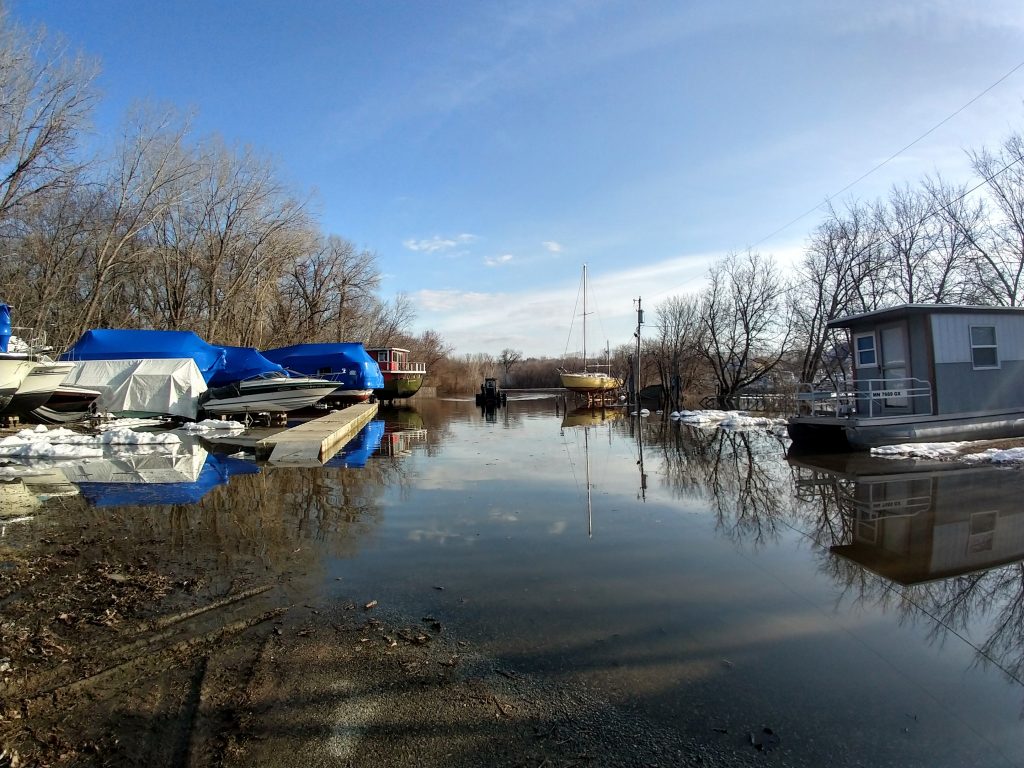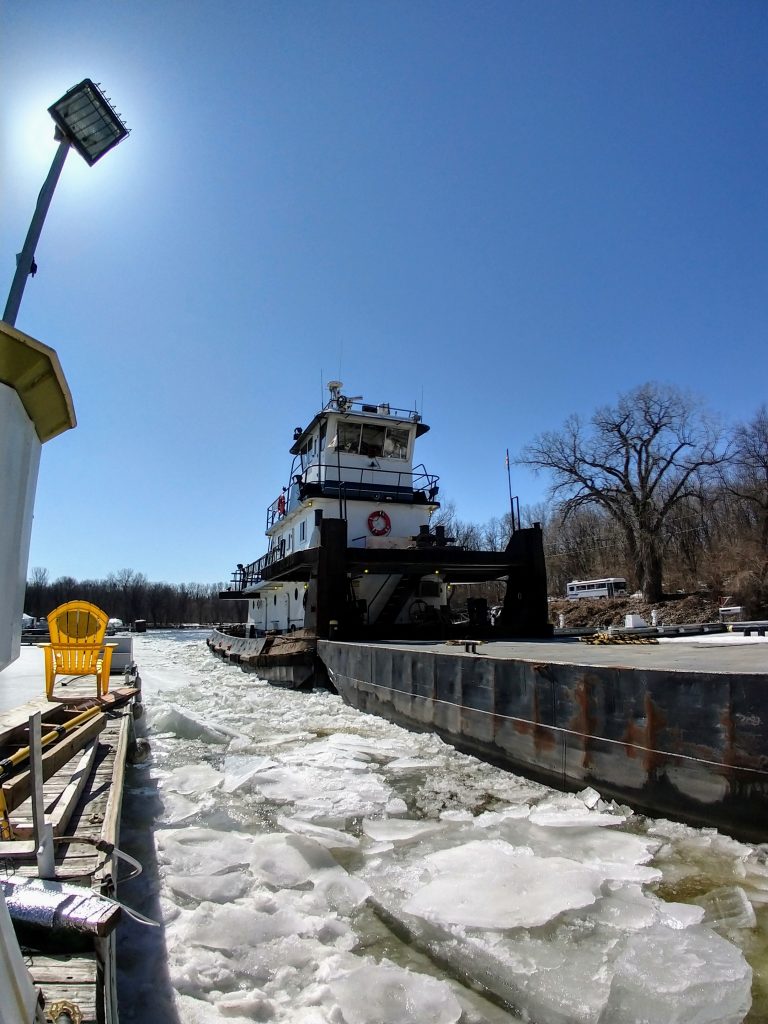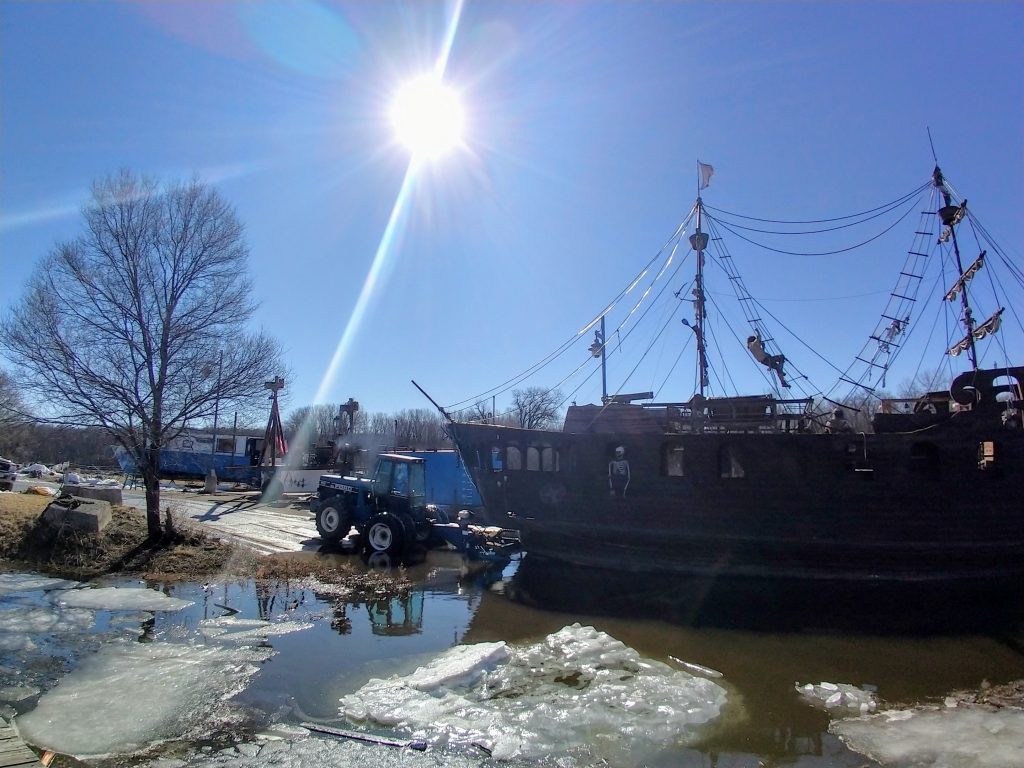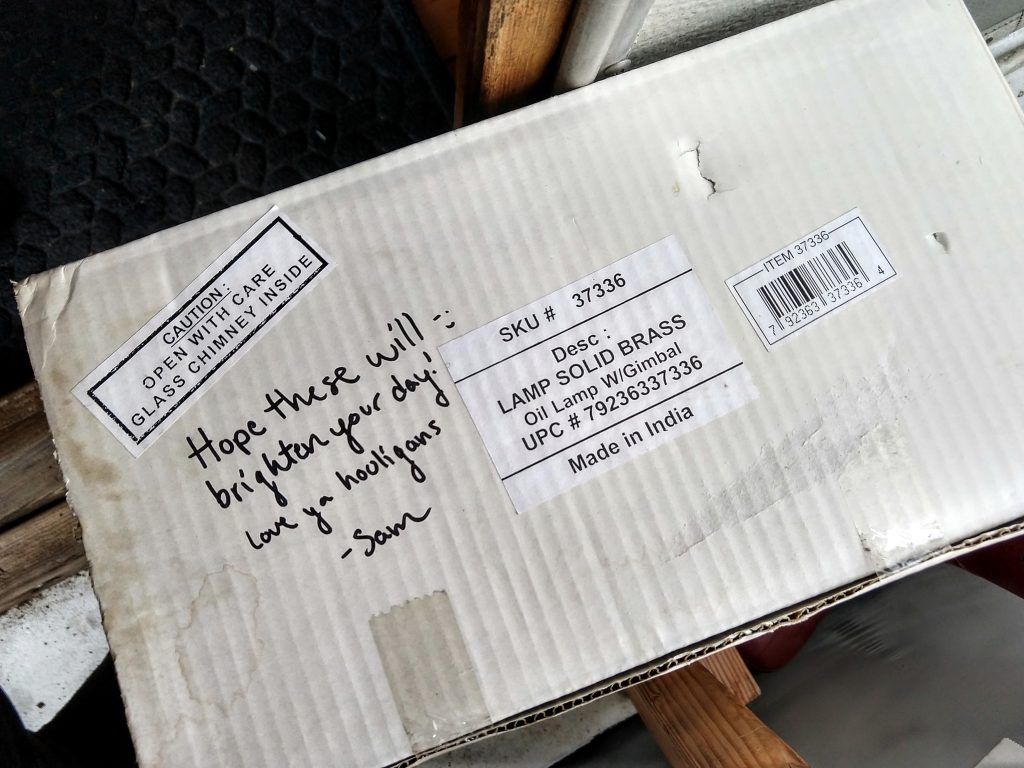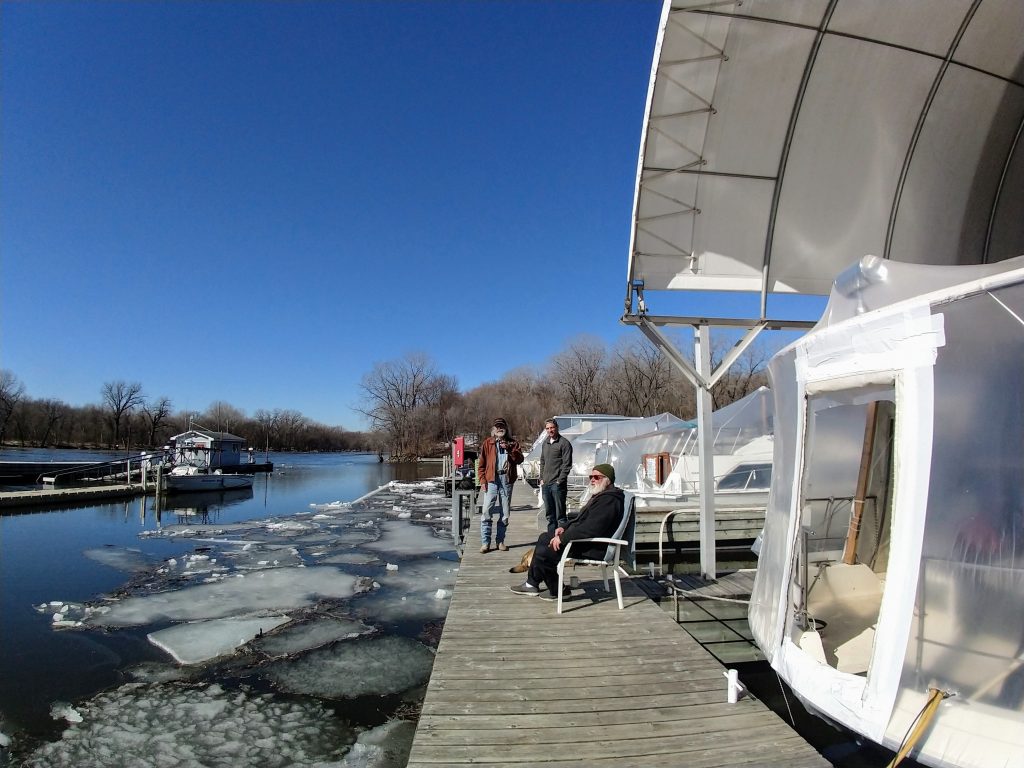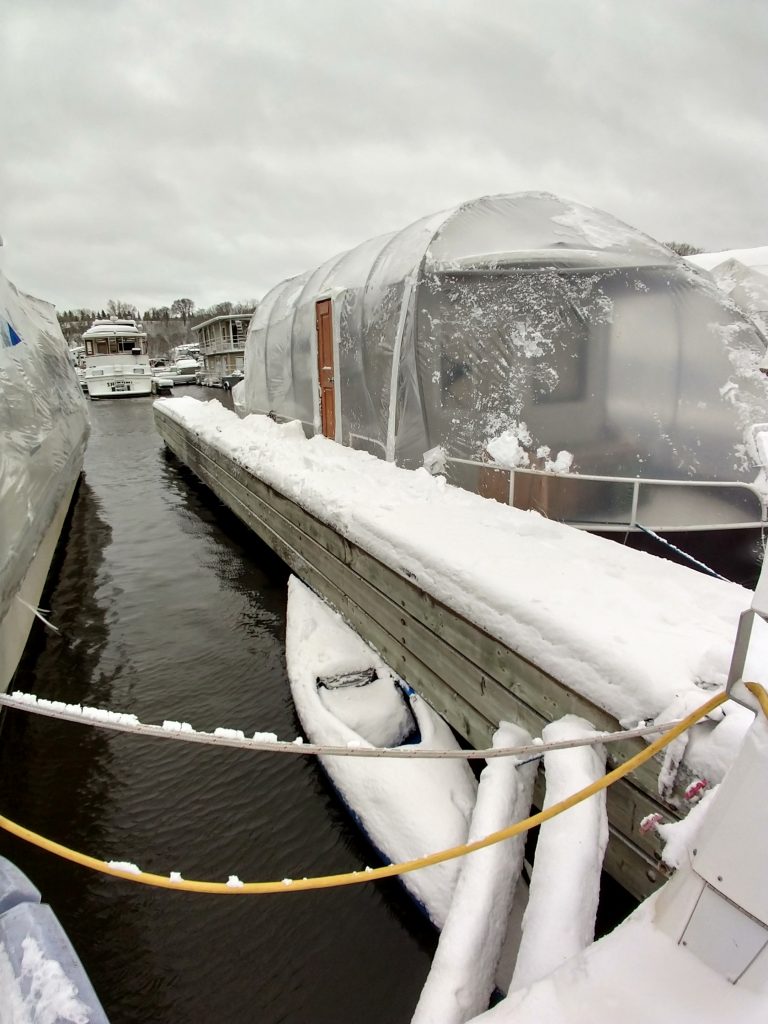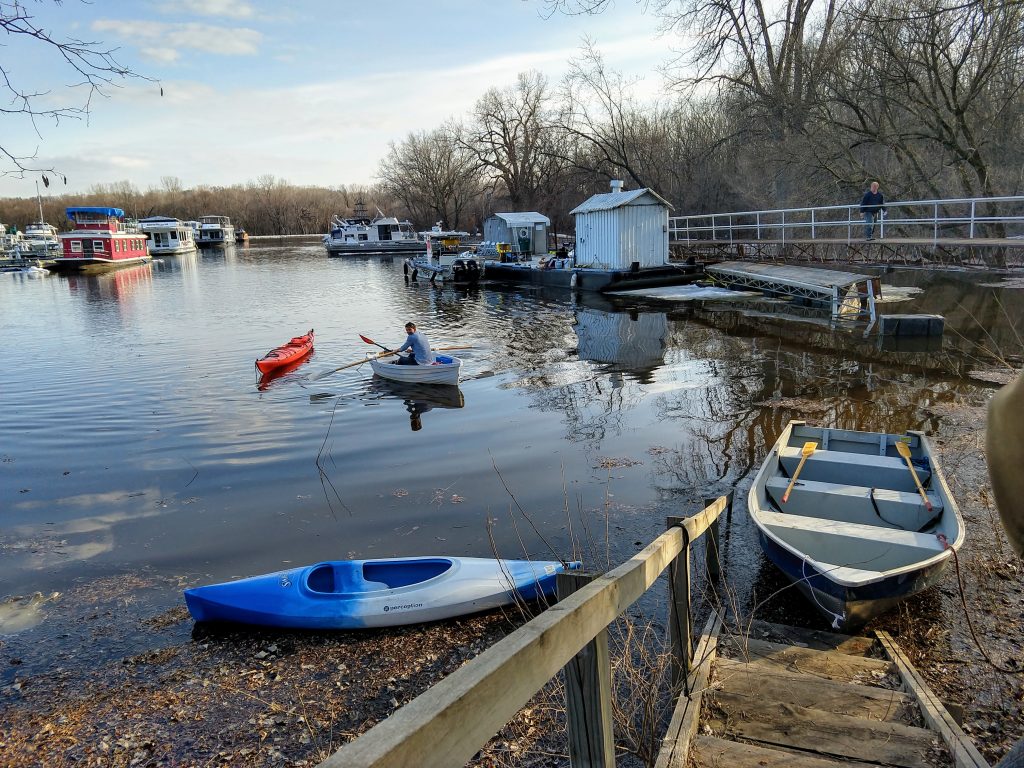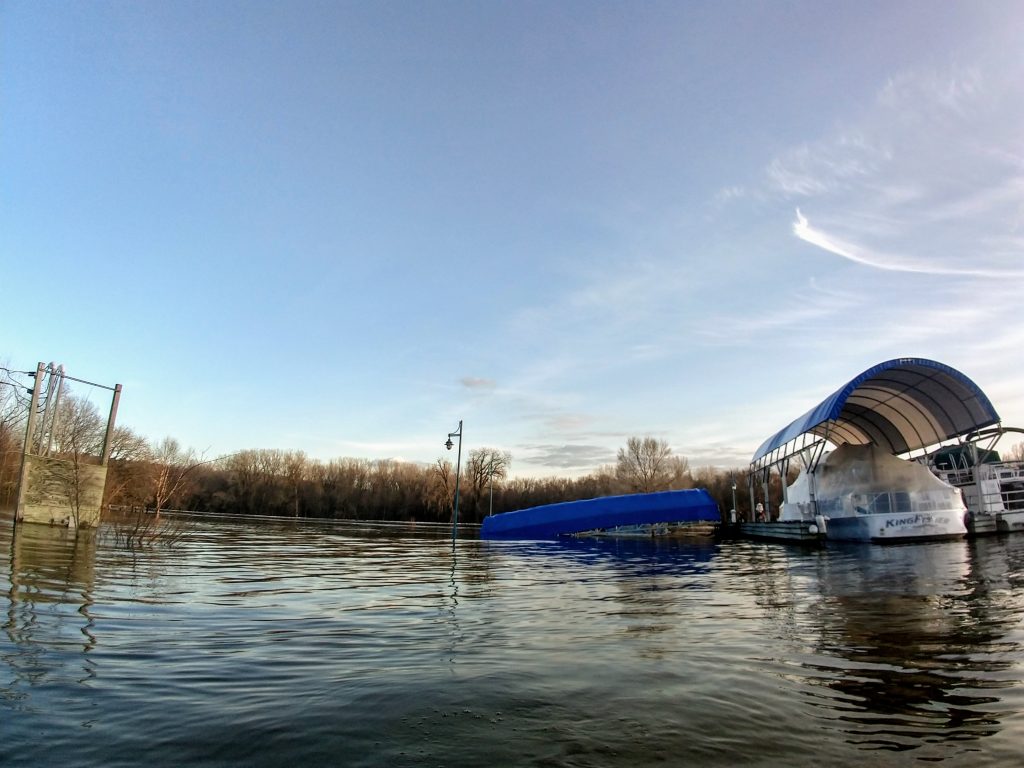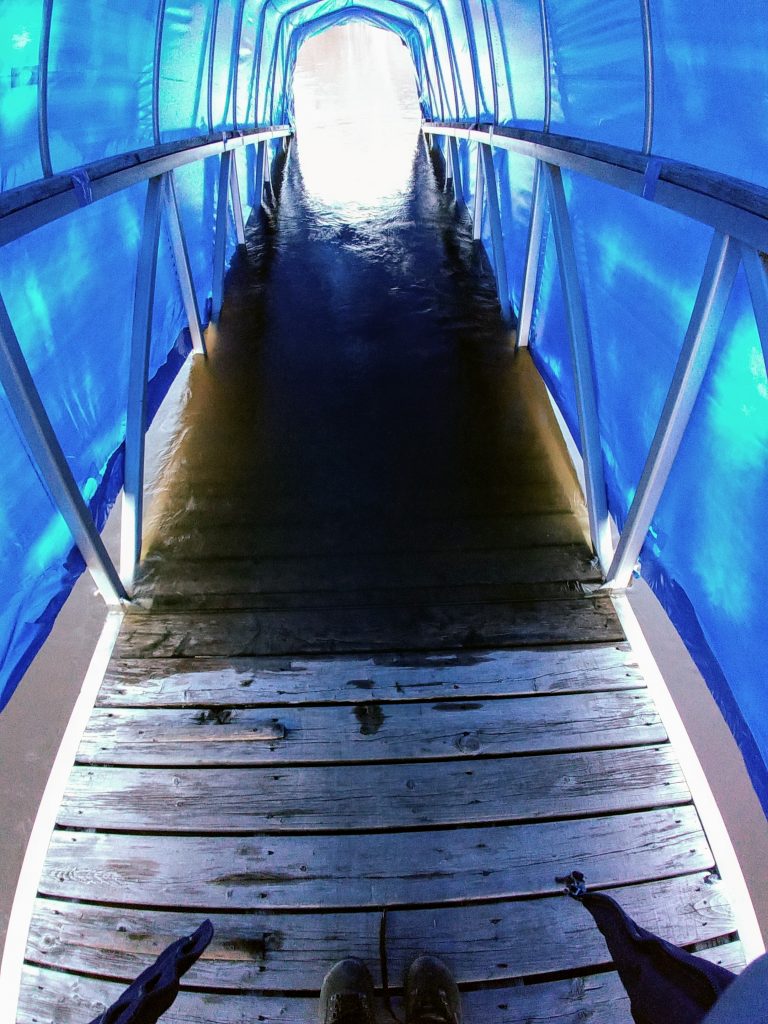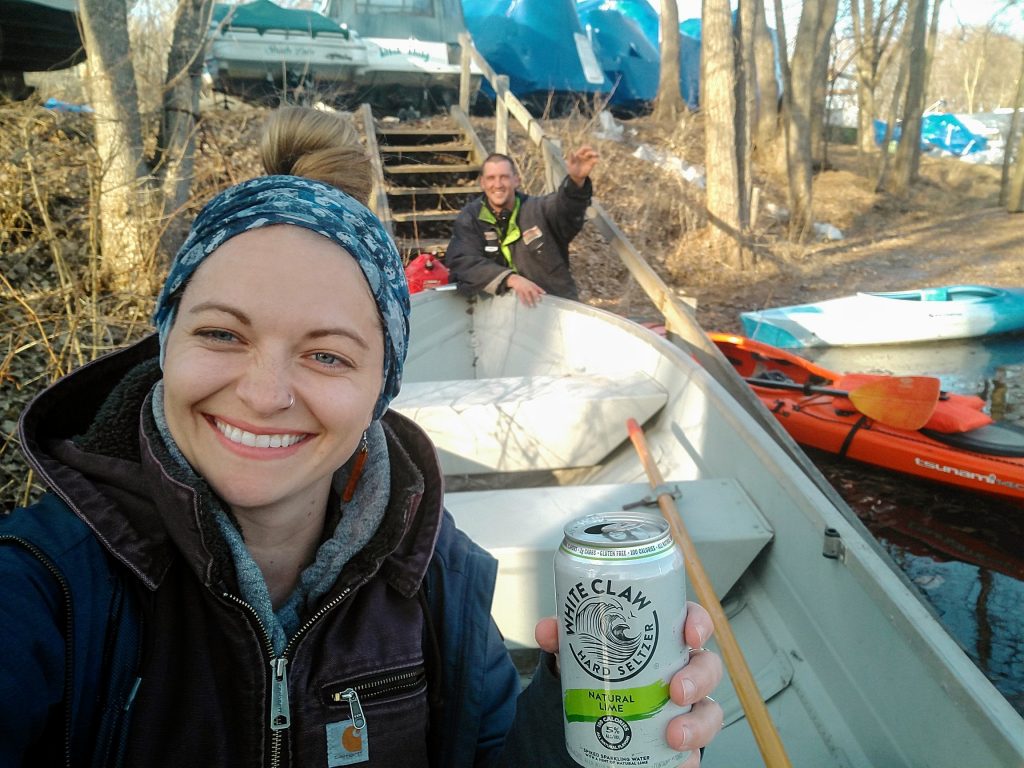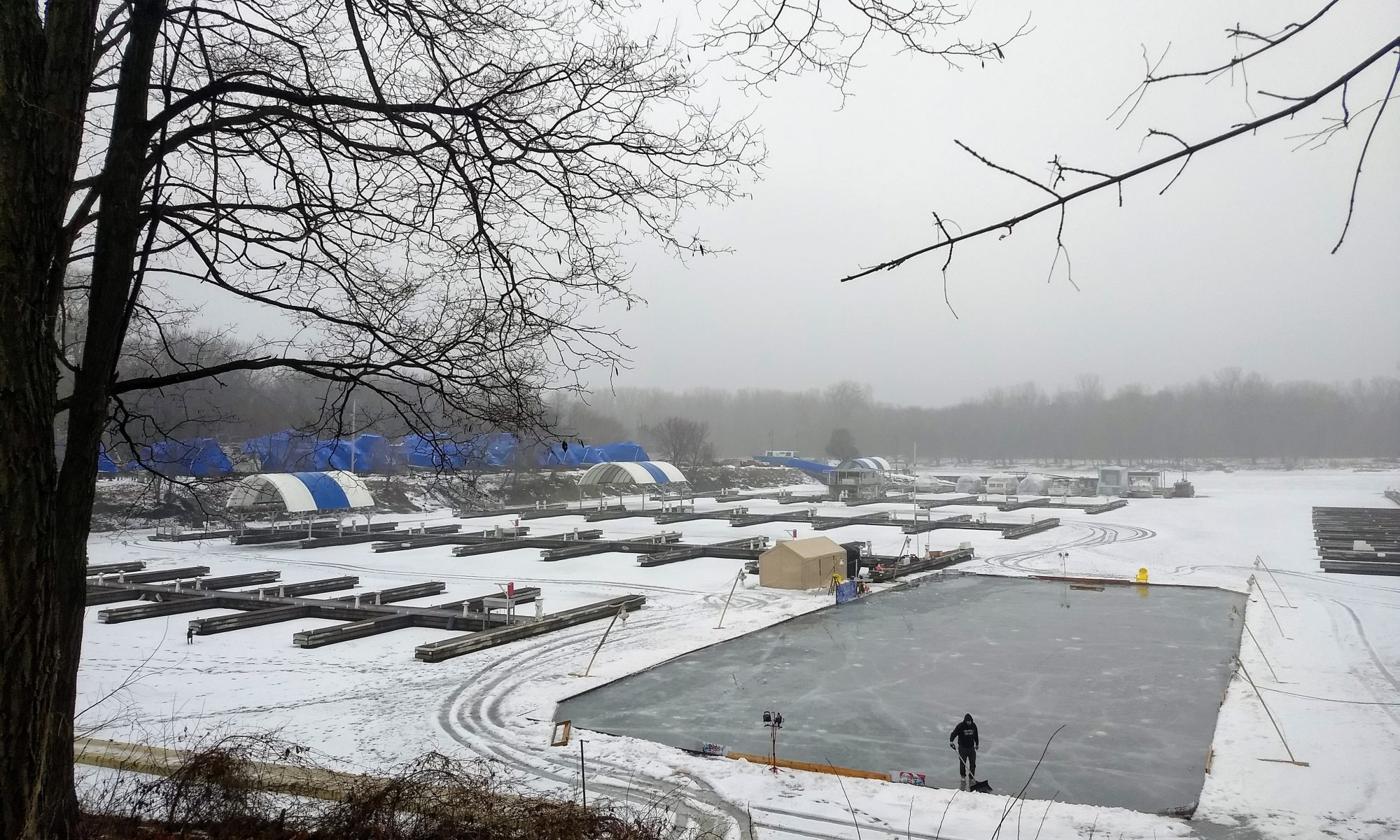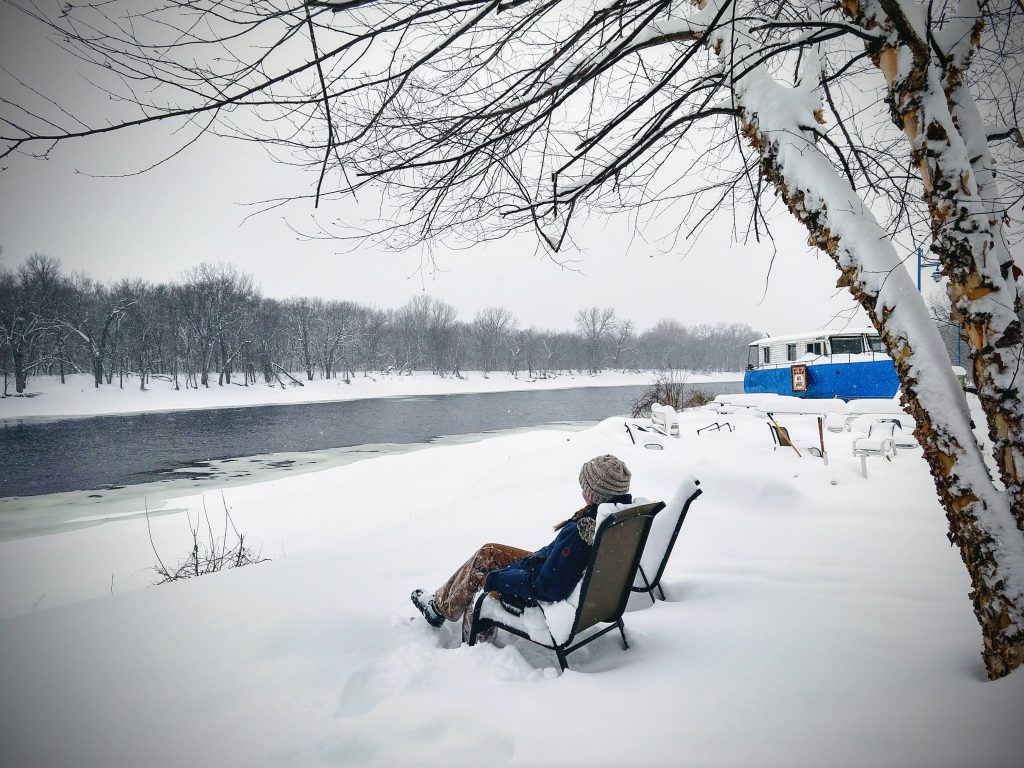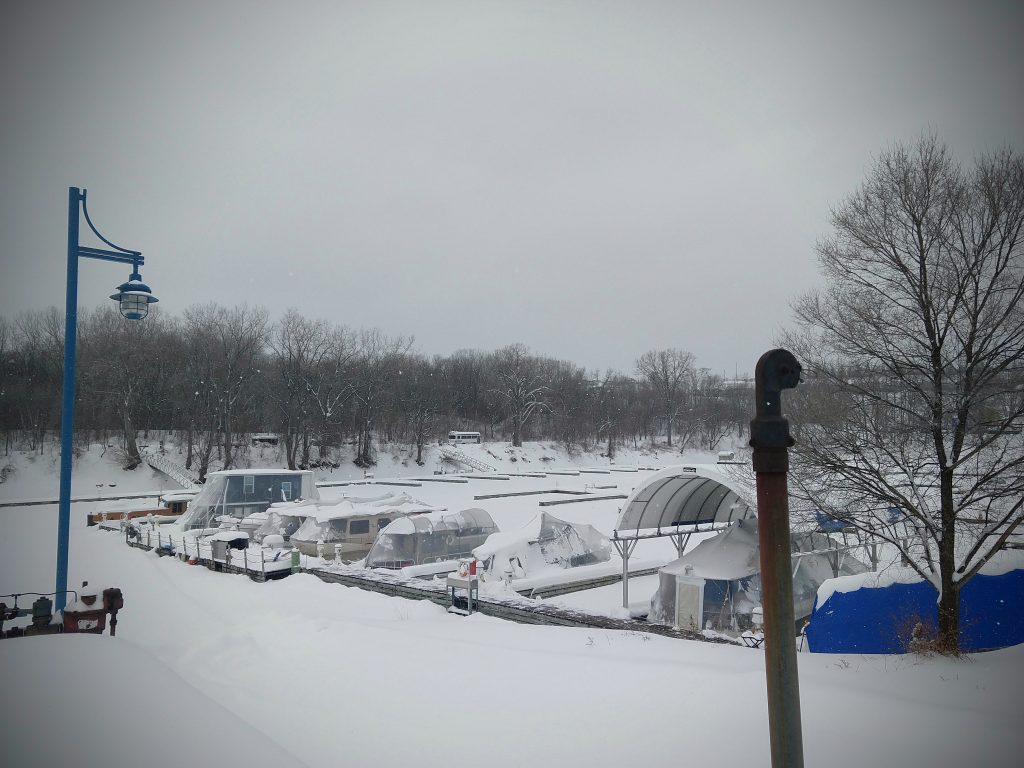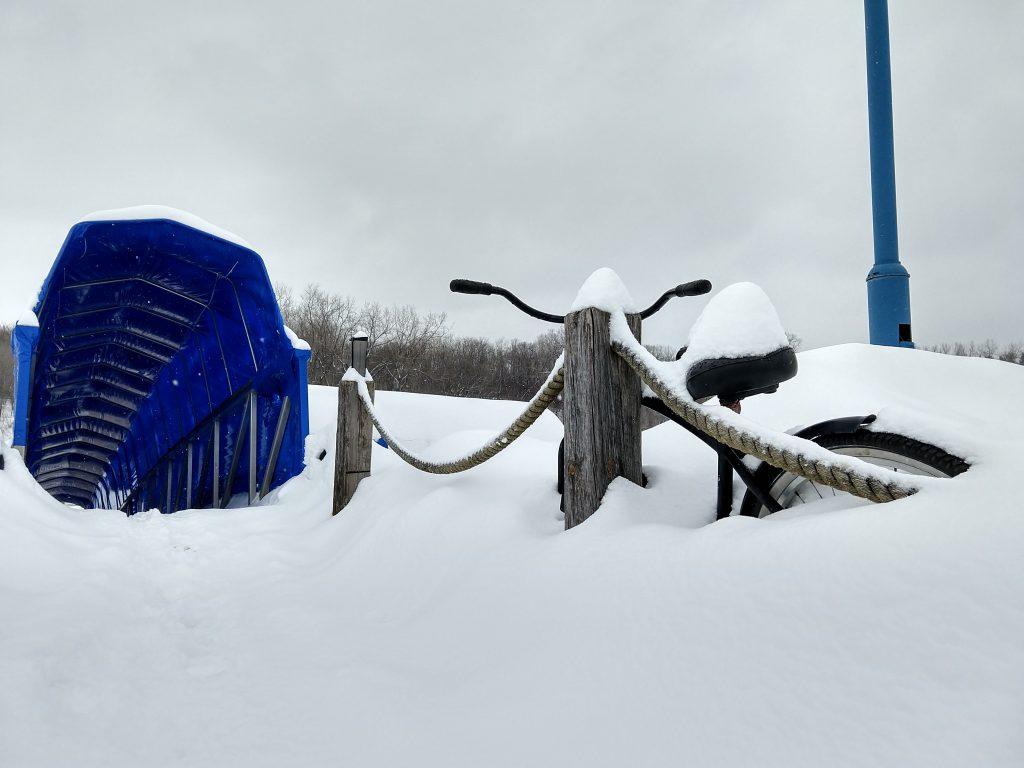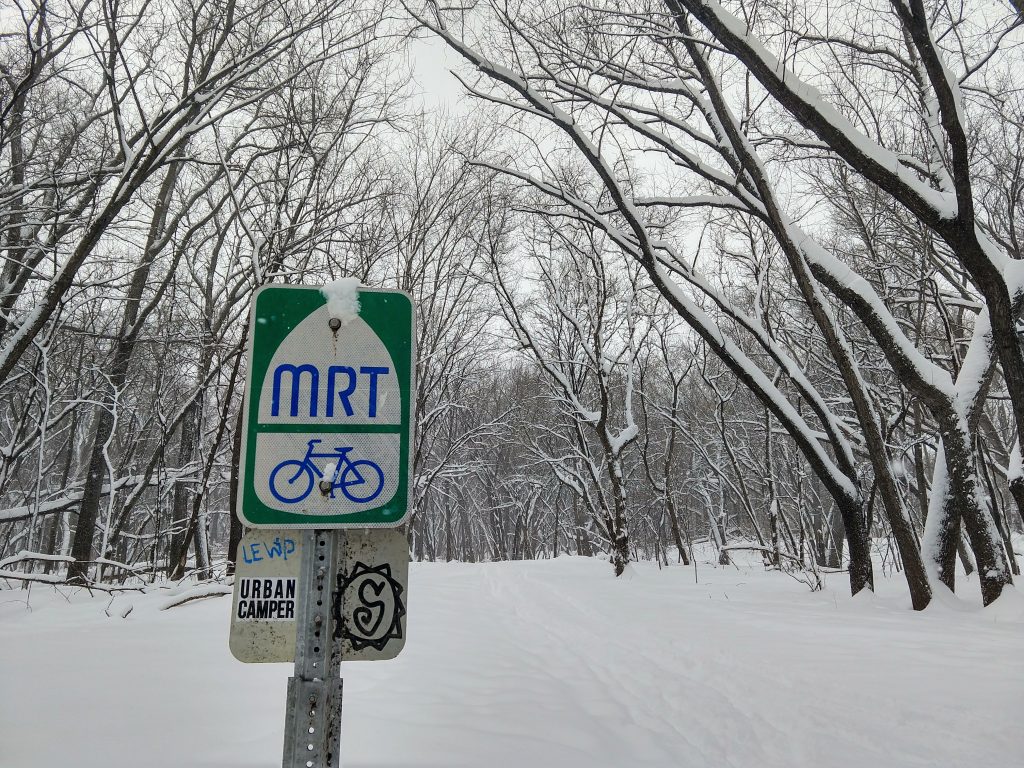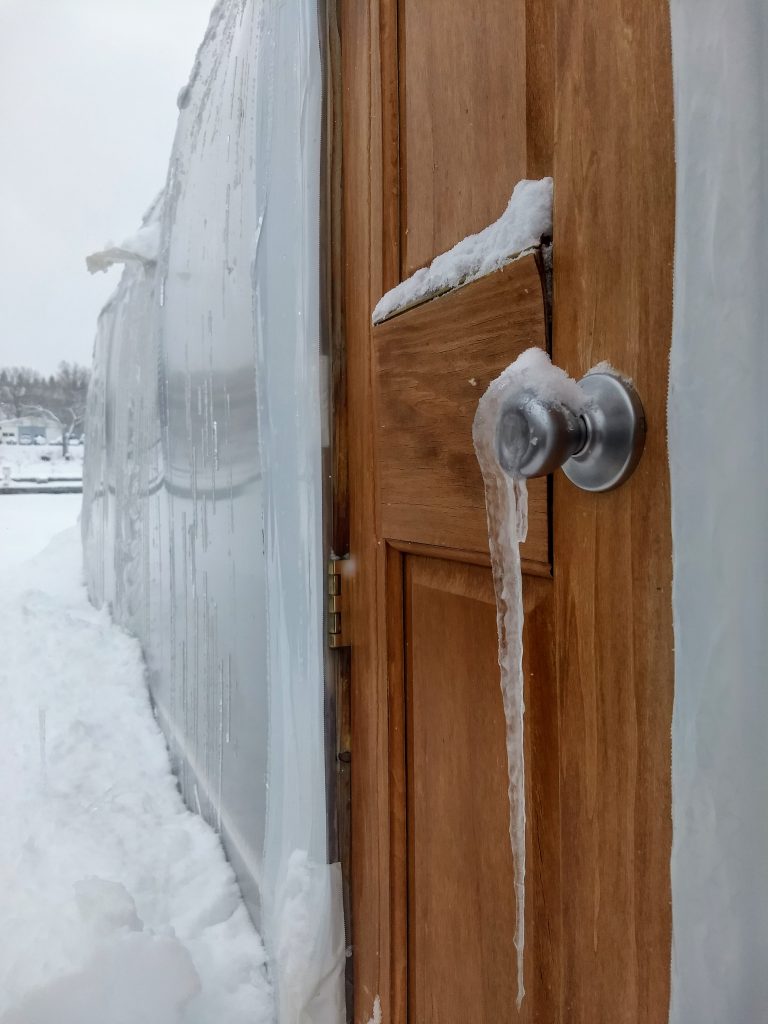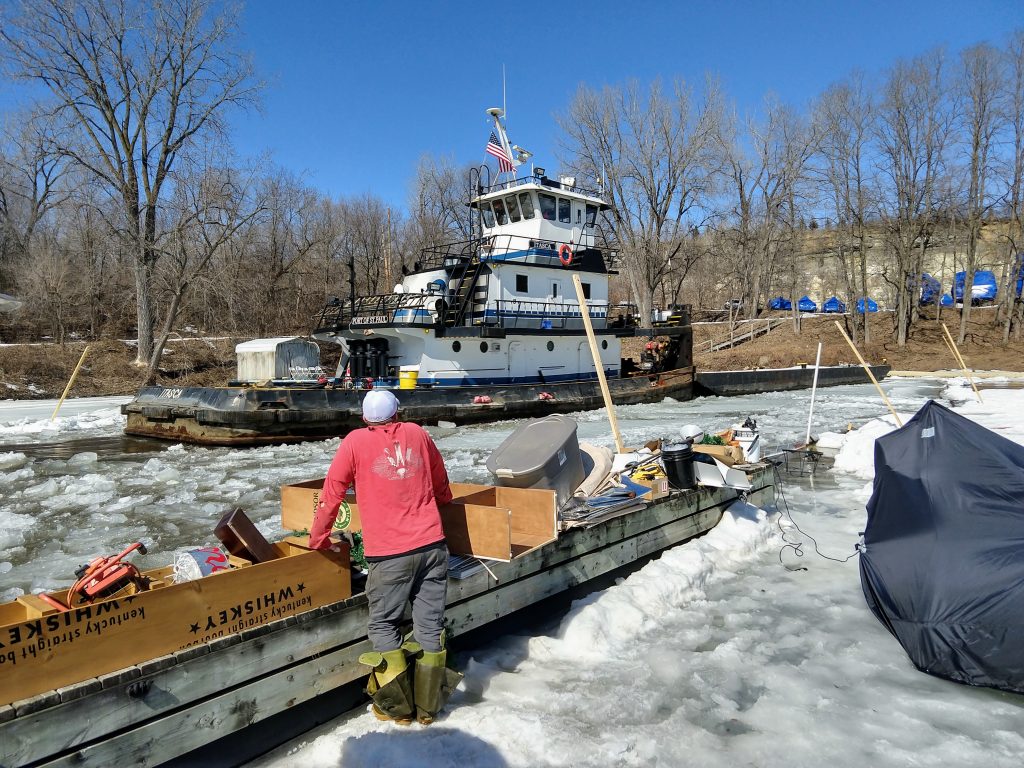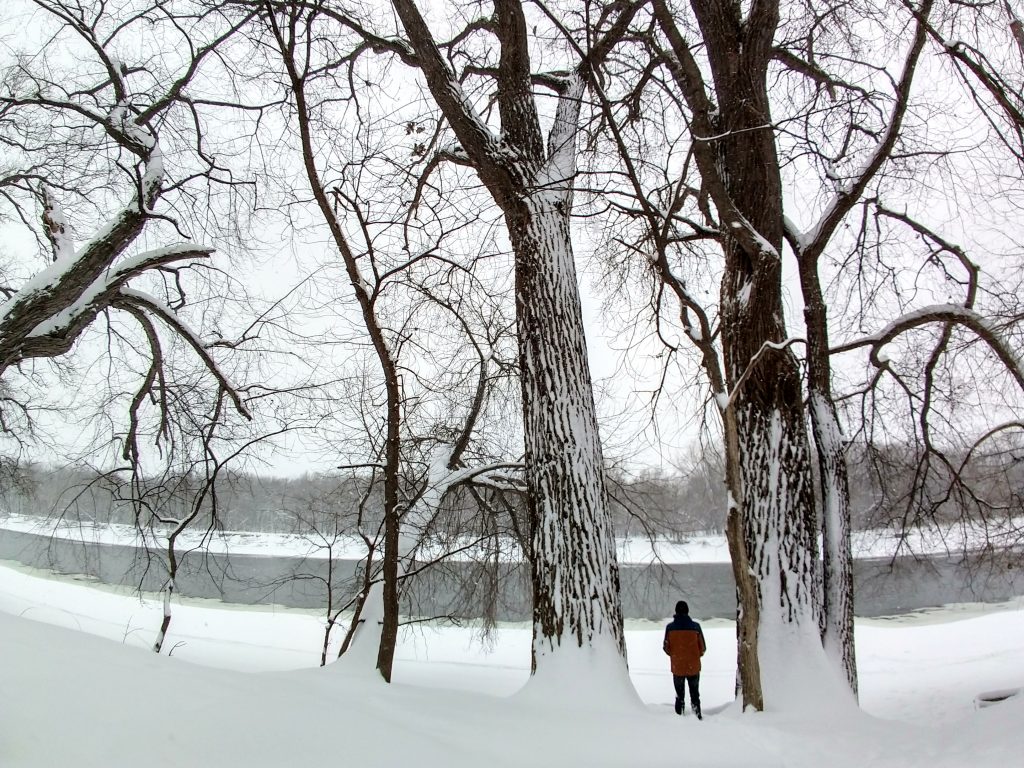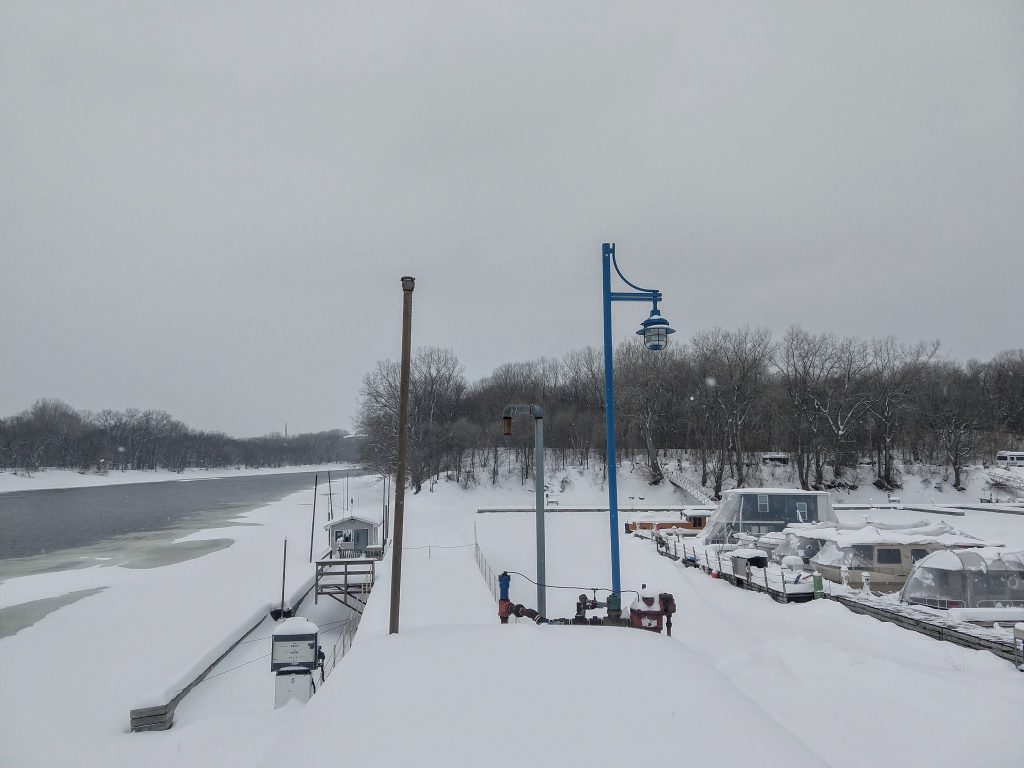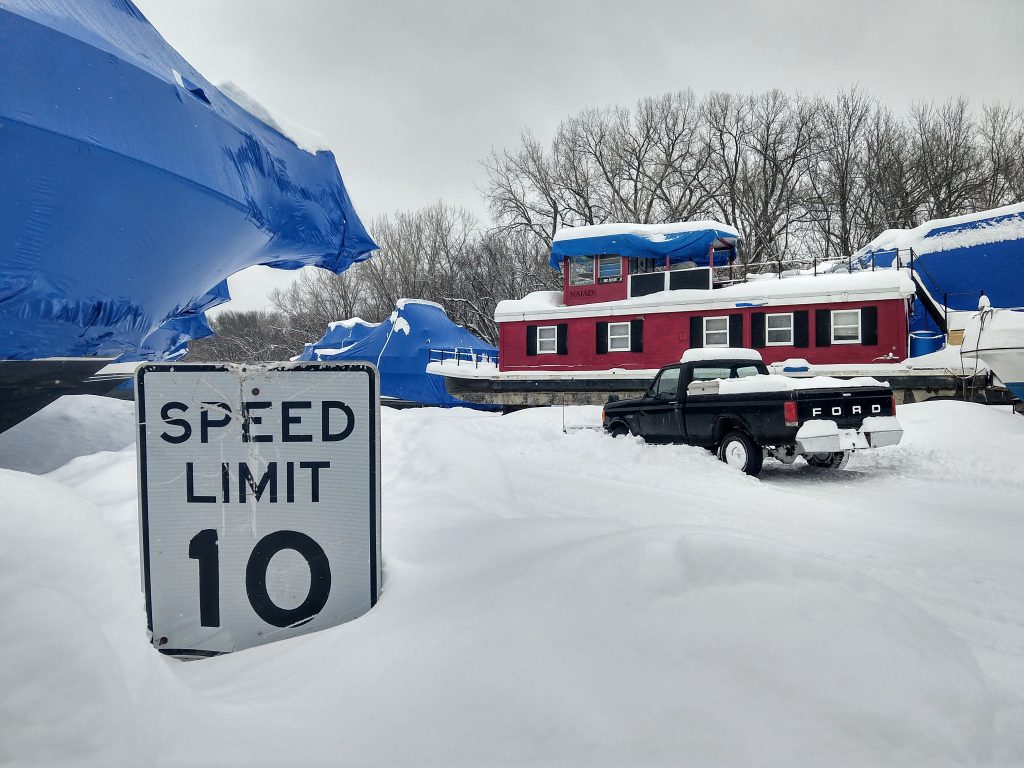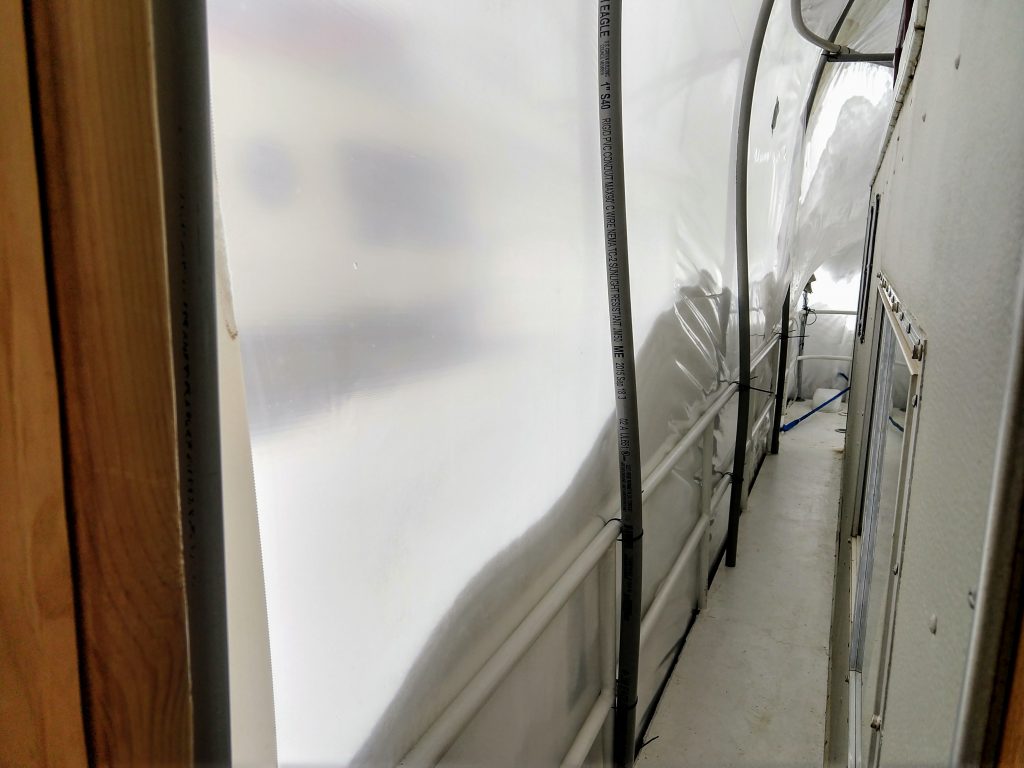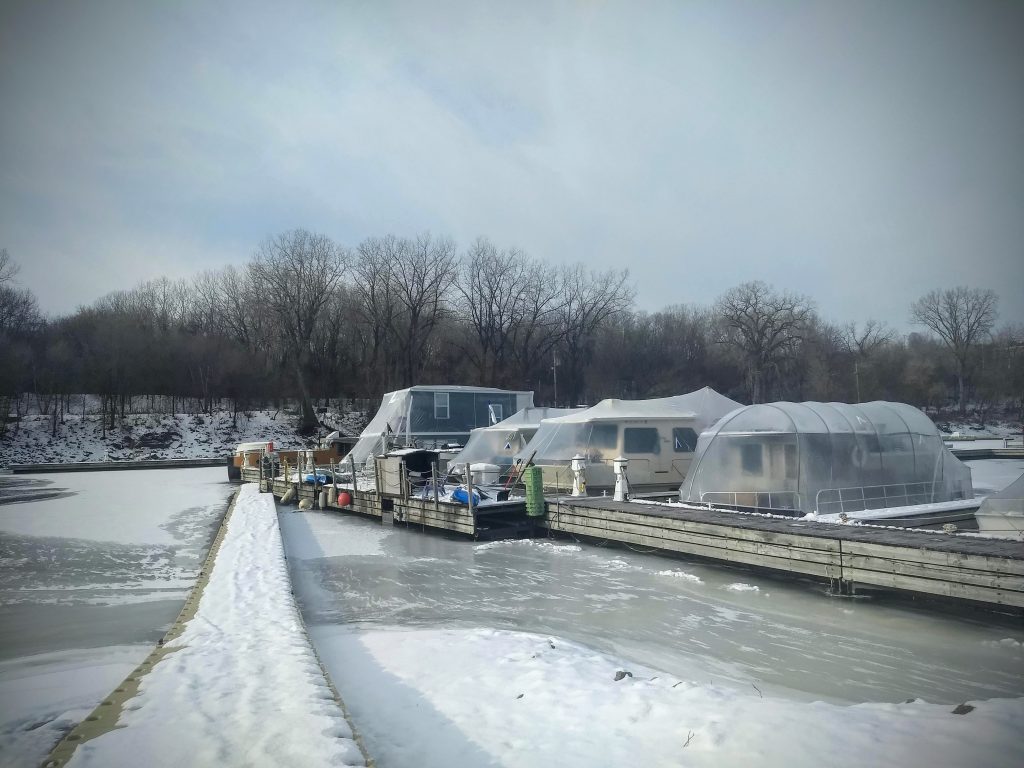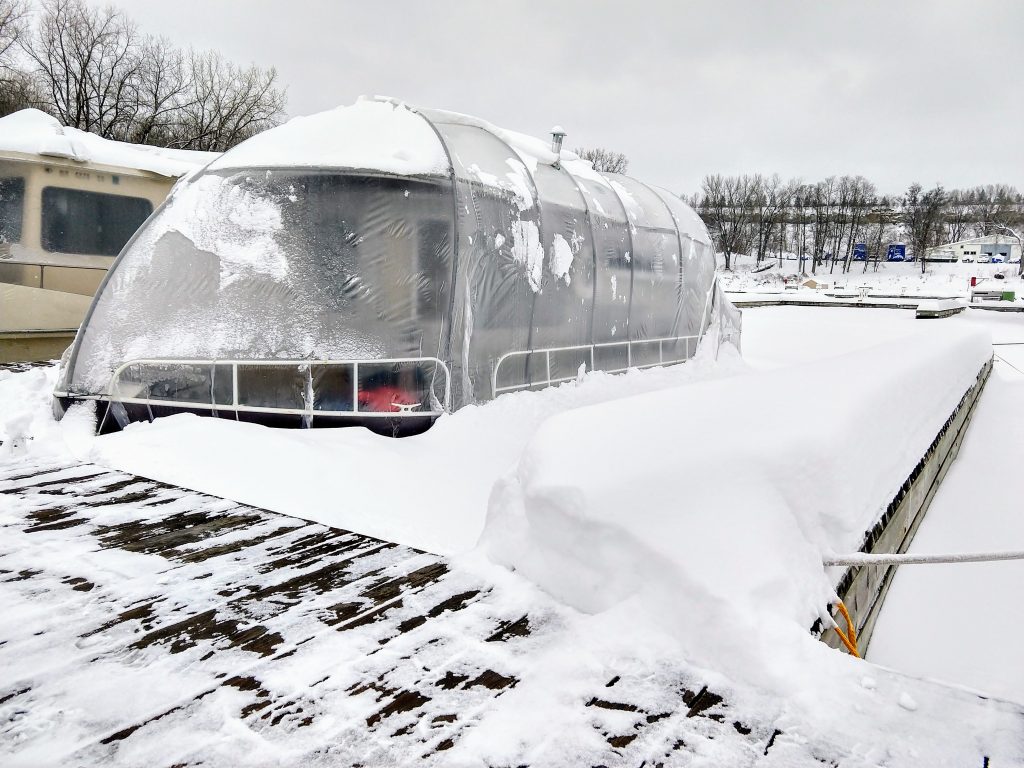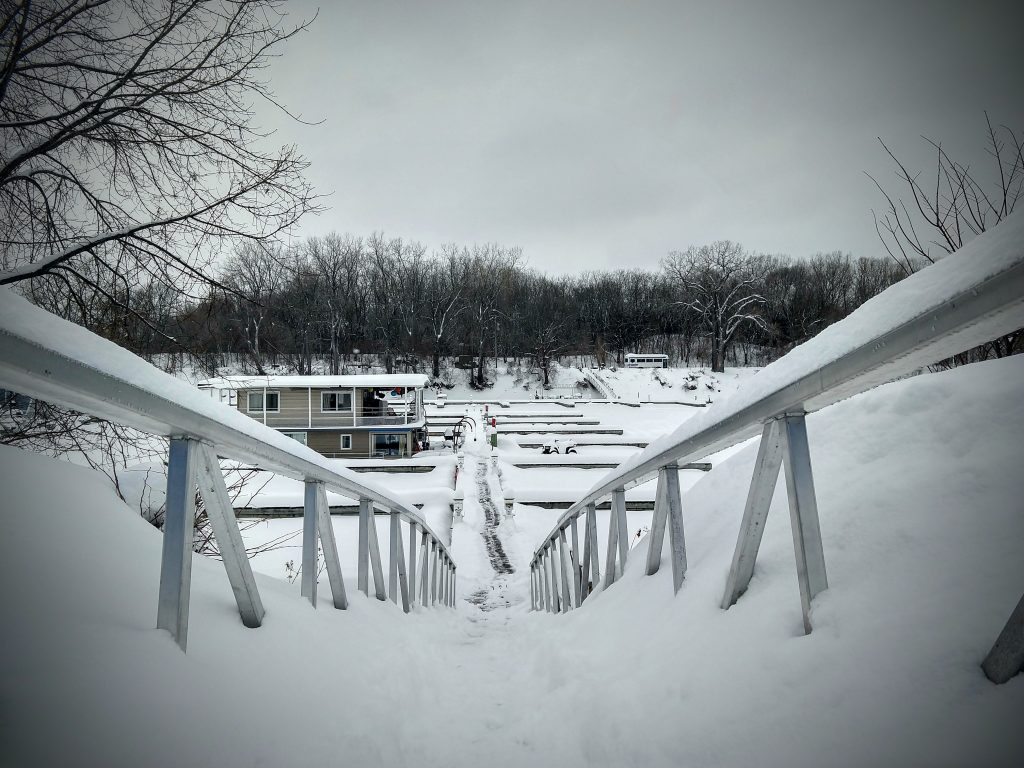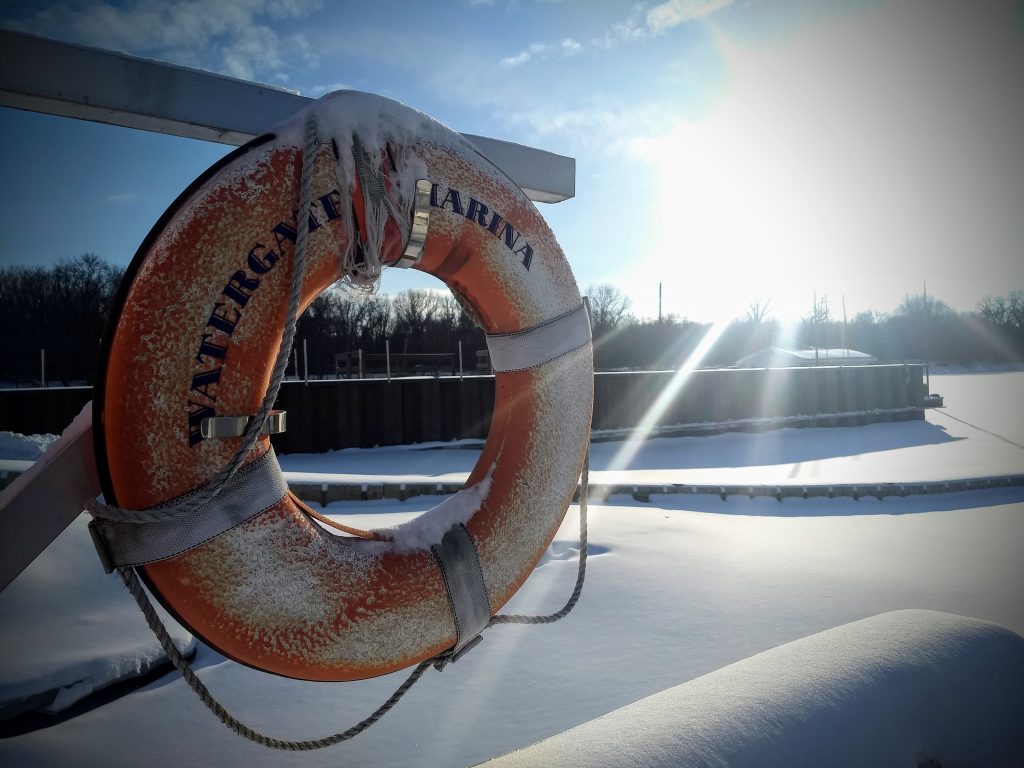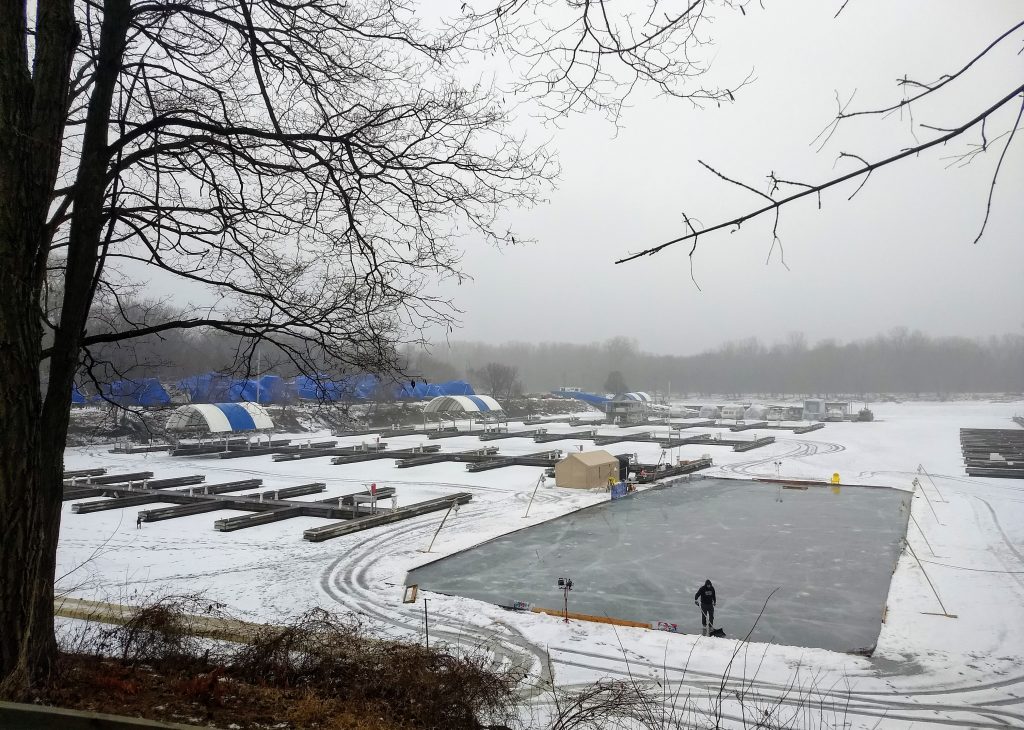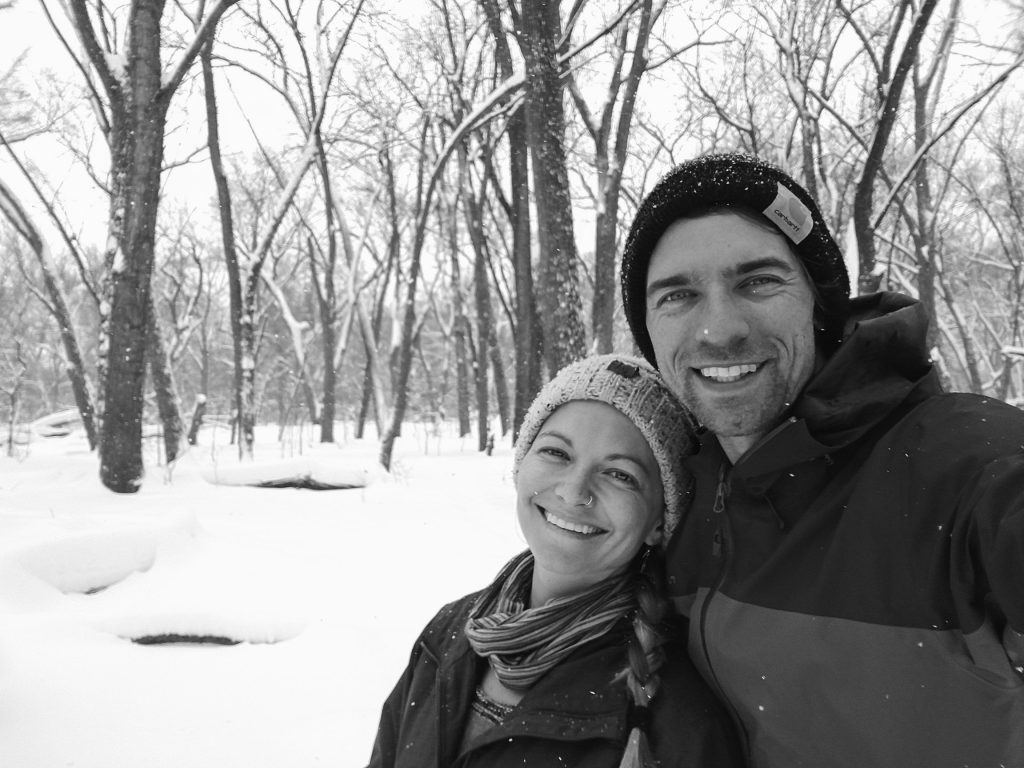In times like these, a person does one of two things to stay sane. You keep your mind busy or you keep your hands busy, and often, these coincide. My husband has the busy hands. I have the busy mind. Mine feels a lot less productive. Since the busy mind is a bit of a weird place, we’ll stick to the topic of Michael’s busy hands.
The first thing I have to say about Michael’s hands is that, thanks to my relentless but warranted nagging backed by CDC guidelines, they are usually well washed. He tends to leave the sink prior to the 20 second mark, but I’m sure to remind him.
In the last four months, a lot has happened. We finished out our boathouse. We had winter. We birthed a baby. We had a flood in the winter (strange). We finished our bathroom and finally have a working shower. The snow melted, and spring came (kinda). We fell in love with being parents. We finished out our kitchen. The pandemic came. I started work again. We had the spring floods and have to boat everywhere, a lovely or treacherous portion of my commute depending on the day. The snow came again (classic Minnesota). And most recently, we (Michael) built our deck and established entry by means of a spiral staircase. Michael’s hands have been busy. Mine help intermittently when my boobs aren’t busy but breastfeeding is truly a full time job.
I bet you wonder why I talk about floods so often. Well, we base our activity around the rise and fall of these waters. We adjust the ropes that hold our home to shore accordingly. We plan if we can walk our asses to the parking lot. If we can walk there, we debate wearing knee high boots or waders. If it’s a job for waders, perhaps we just go by boat. We park the boat in different spaces according to the river level.
We like to park at “LIPS”- Latsch Island Phone Service, where the one phone for the whole island once existed. It was the island’s central station for socializing. It still is as Neighbor Ernie greets us with a smile and stories whenever we dock, and on sunny days, multiple boathouse dwellers cross paths as we navigate our boats around each other (six feet apart of course).
The water is high enough now that we boat through “Bathtub Slough”, a cut through a cluster of boathouses tucked behind the ones that line the channel. We duck under a communication line at the entrance and greet Pirate Pat on the way. We have to raise the motor in the shallows and navigate around the cement bases that used to hold up the railroad bridge. As Neighbor Polly explained this route to us, she said, “It’s actually pretty fun.” It really is… except in the sleeting rain at midnight.
Back to the busy hands that built our deck. Knowing the flood was coming, a few days were spent schlepping boards for our top deck: 146 to be exact, some as long as 26 feet.
The twelve posts sticking out of our roof were scaled, cut level, and long boards spanned the whole way to connect them. More boards were attached to connect those boards. Finally, the top deck boards were applied. (Insert “bored” during quarantine joke here.)
As we wondered how to best access the deck, Michael consulted his trusted friend Craig. Craig has this list that Michael is very fond of. On Craig’s list is where we bought a boat, perused for fire towers, found this very boathouse (well, the former one that lived here), purchased our land up north, found the van that we outfitted into a moving apartment, and now, we found the answer to our deck access dilemma- a steel spiral staircase. Craig, you slick son of a gun, you’ve done it again.
As does everything in this lovely flood season, the staircase needed to travel by water. To make this happen, we would use our boat as a pusher and our neighbor Polly’s dock as a platform to carry the stairs. Michael strategically attached a few boards to the front of our boat to protect it and keep everything straight when pushing the 8ft x 20ft platform. Michael connected the platform with rachet straps that spanned from the boat’s two front cleats to the platform’s back two cleats.
Michael navigated this 40ft caravan through Bathtub Slough and up to shore where the spiral staircase was waiting on a flatbed trailer.
Before the 1000lb staircase was tied down to the trailer, Michael laid sheets of plywood underneath so when the dock met the trailer, he could use more rachet straps as winches to more easily slide the staircase onto the platform.
As he pushed the platform downstream toward our end of the island, Michael’s floating spiral staircase was a site to behold.
Erecting the staircase was the sketchiest part, and like many sketchy endeavors, the most fun.
On the deck, we (Michael) used a 15 to 1 pulley system with a rock climbing belay device as brake. With the dock butted up to the downstream corner of the boathouse, we (Michael) tied the pulley system to the far end of the staircase and started pulling.
When the staircase was at 45 degrees, we were able to funnel the base in place with some strategically affixed scrap boards. After plenty of pulling and lots of lines tied off in every direction to keep the 1000lb mass from swinging side to side, the staircase was finally home.
Boathouse living is certainly made for busy hands and for busy minds too. There are always ropes to retie, barrels to replace, unexpected weather conditions to navigate, floating trees or other surprises to dislodge, off grid ideas to bring to life, or creative solutions to maximize small spaces. This 24ft x 24ft space is no barrier to busyness or joy or fulfillment or intrigue; it provokes and nurtures all of these.
At the end of the day, it is time to put busy hands and busy minds to rest. This little floating home is especially good for this. It’s 7pm as I write this. Michael is making a ruckus on the deck as he works on the railings. He’s been at it all day. A boat zoomed by and left a wake that makes me feel slightly tipsy. I admire the bold and distinguished colors that fill the feathers of the neighborhood mallards. The ducks fly west from John’s house; they make a splash as they settle on the water in front of me. The water rhythmically flows in the other direction as if to bleed off the colors of the setting sun. I let my busy mind settle down on these simple things.
Alright, it’s time to get Michael off the damn roof. Stay busy if you must but stay rested too. This is a weird time. At the end of the day, settle down on the simple things. (If you say this final paragraph twice, you’ve washed your hands for 20 seconds.)
